“I
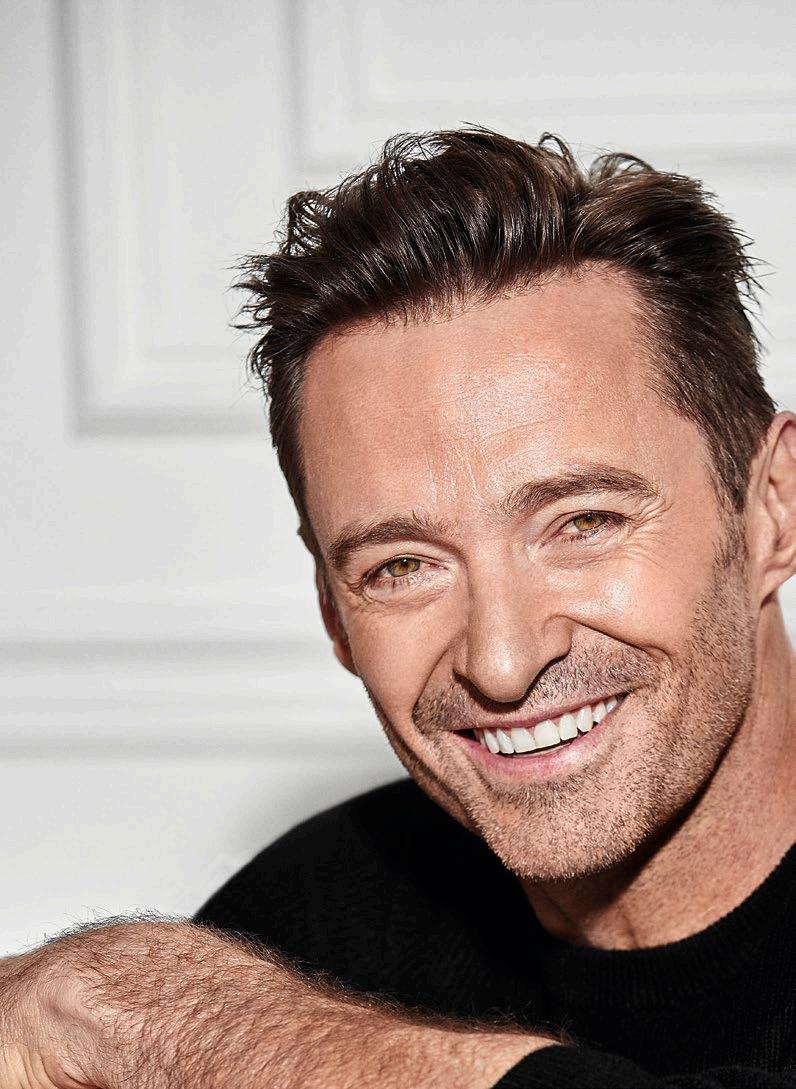
MARCH 2023 MARCH 2023 £3.99 readersdigest.co.uk HEALTH • MONEY • TRAVEL • RECIPES • CULTURE • REAL STORIES
Give Myself A Hard Time”
9
HUGH JACKMAN
The Labelling EPIDEMIC Is Self-Diagnosis Becoming A Problem?
Unexpected Causes Of Tiredness



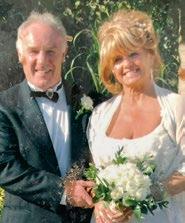


























Olly
The affable Australian actor on mental

From pillow upgrades to sunlight, here's how to catch more ZZZs
The former British diplomat looks back on
The challenges and triumphs of a family caring for a man with MS
A nutritionist, mechanic, groundsman and chaplain: celebrating sport's unsung heroes
Diving into sub-zero Arctic waters to discover submerged secrets beneath the surface
The story of an
What
Capture the beauty of Britain’s green hills or medieval streets to enter our photo competition
Contents MARCH 2023 MARCH 2023 • 1 14 IT’S A MANN’S WORLD
gets a puppy, diarising the cuteness and chaos ENTERTAINMENT 18 INTERVIEW: HUGH JACKMAN
Mann
movies 26 “I REMEMBER”: SIR MICHAEL BURTON
health, musicals and Marvel
six-decade
around the world HEALTH 34 LABELLING EPIDEMIC
self-diagnosis becoming a problem or can it actually be helpful sometimes? 42 AN ANTI-MIGRAINE DIET
a
career
Is
to eat and what not to eat to help prevent suffering from debilitating headaches Features 50 4 STEPS TO BETTER SLEEP
INSPIRE 72 ACCIDENTAL CAREGIVER
80 MEET THE 1% CLUB
88 BENEATH THE SEA ICE
TRAVEL 102 A WILD RIDE IN PATAGONIA
awe-inspiring
Argentina COMPETITION 132 BEAUTIFUL BRITAIN
and rugged horseback trip in
cover photograph by Ben Watts p102

By leaving a gift in your Will you can help create a better future for seriously ill children like Anaiah-Grace
Request your free Gifts In Wills Guide
We’ve put everything you need to know about leaving a gift in your Will into our free Gifts In Wills Guide.
Claim your free Gifts In Wills Guide today.
Anaiah-Grace, was diagnosed with a rare mitochondrial disorder that affects her muscles, including her heart. A transplant was the only way to keep her alive, and after the operation, she and her mum, Faith, stayed at GOSH for the next 18 months.
Find out how to write your Will for free in your Gifts in Wills guide, or scan the QR code below to learn more. If you use our free Wills service, there’s no obligation to leave a gift to GOSH Charity in your Will, but after taking care of family and friends we hope that you may be inspired to do so. Just 5% of your estate could transform a child’s life.

Great Ormond Street Hospital Children’s Charity. Registered charity no. 1160024.
Please scan the QR code
Call 020 3841
3131 Go to gosh.org/legacy



MARCH 2023 • 3 5 Editor's Letter 6 Over to You 10 See the World Differently HEALTH 46 Advice: Susannah Hickling 52 Column: Dr Max Pemberton 56 Memory: Jonathan Hancock DATING & RELATIONSHIPS 58
INSPIRE 62 My
70 If
World: Glen Matlock TRAVEL & ADVENTURE 112 My Great Escape 114 Hidden Gems: Buenos Aires MONEY 118 Column: Andy Webb PETS 122 Create a pet-friendly garden HOME & GARDEN 124 How to grow garden peas FOOD & DRINK 126 How to end a meal ENTERTAINMENT 134 March's Cultural Highlights BOOKS 138 March Fiction:
Recommended Reads 143 Books That Changed My Life:
Lloyd TECHNOLOGY 144 Column:
FUN & GAMES 146 You Couldn’t Make It Up 149 Word Power 152 Brain Teasers 156 Laugh! 159 Beat the Cartoonist 160 Good News In every issue p143 Contents MARCH 2023 p122
Column: Monica Karpinski
Britain: Isle of Barra
I Ruled the
James Walton’s
Cariad
James O’Malley
EDITOR-IN-CHIEF Eva Mackevic
ASSISTANT EDITOR Ian Chaddock
EDITORIAL ASSISTANT Becca Inglis
JUNIOR EDITOR Alice Gawthrop
ART DIRECTOR Richard Cooke
FINANCE MANAGER Irving Efren
PRINT ADVERTISING Keir McCumiskey
INSERTS & DIGITAL ADVERTISING Jigs Pankhania
COMMERCIAL PARTNERSHIPS Beth Bayliss
HEAD OF FINANCE Santwana Singh
MANAGING DIRECTOR Julie Leach
CHAIRMAN Steve Wilkie
TRUSTED MEDIA BRANDS INC (USA)
President and Chief Executive Officer
Bonnie Kintzer
Editor-in-Chief, International Magazines
Bonnie Munday
WRITE TO US! SEND US YOUR STORIES, JOKES AND LETTERS OR VISIT OUR WEBSITE
For all subscriber enquiries, please use the customer services number below
WE PAY...
£50 for the star letter and £30 for regular letters. Email readersletters@readers digest.co.uk or go to readers digest.co.uk/contact-us
WE ALSO PAY...
£30 for the true stories, anecdotes, jokes in Laugh! and You Couldn’t Make It Up…, and contributions to end-ofarticle fillers and My Great Escape Email excerpts@readersdigest.co.uk or go to readersdigest.co.uk/contact-us
SORRY!
We cannot acknowledge or return unpublished items or unsolicited article-length manuscripts. Do not send SAEs. Article-length stories, poetry and cartoons are not requested.

CUSTOMER SERVICES
Contact Customer Services for renewals, gifts, address changes, payments, account information and all other enquiries. Call 0330 333 2220* or email customer_service@readersdigest.co.uk
TALKING MAGAZINES
Reader’s Digest is also available in audio and accessible etext editions from RNIB Newsagent, for blind and partially sighted readers. Call the RNIB Helpline on 0303 123 9999 or visit rnib.org.uk/newsagent
SUBSCRIPTIONS
Annual subscriptions are available to be delivered monthly direct to your door. For our latest offers please visit readersdigest.co.uk/subscribe Or telephone us today on 01778 392461. Gift subscriptions also available. UK rates may vary. Overseas rates: Republic of Ireland £45, Europe £50 and Rest of the World £60 for 12 month subscription.
SMALL PRINT: Ensure submissions are not previously published. Include your name, email, address and daytime phone number with all correspondence. We may edit letters and use them in all print and electronic media. Contributions used become world copyright of Vivat Direct Ltd (t/a Reader’s Digest). Reader’s Digest is a member of the Independent Press Standards Organisation (which regulates the UK’s magazine and newspaper industry). We abide by the Editors’ Code of Practice and are committed to upholding the highest standards of journalism. If you think that we have not met those standards, please contact 0203 795 8886. If we are unable to resolve your complaint, or if you would like more information about IPSO or the Editors’ Code, contact IPSO on 0300 123 2220 or visit ipso.co.uk
PAPER FROM SUSTAINABLE FORESTS. PLEASE RECYCLE © 2017 Vivat Direct Ltd (t/a Reader’s Digest). British Reader’s Digest is published by Vivat Direct Ltd. All rights reserved throughout the world. Reproduction in any manner, in whole or part, in English or other languages, is prohibited. Reader’s Digest is a trademark owned and under license from Trusted Media Brands, Inc, and is registered with the United States Patent and Trademark Office. All rights reserved. Printed by Warners Midlands PLC. Newstrade distribution by Seymour Distribution Limited.
than
rate
number
free
type
line
mobile, BT
other fixed line
*Calls to 03 numbers cost no more
a national
call to an 01 or 02
and will be
if you have inclusive minutes from any
of
including
or
Paper Putting Pen To
How long has it been since you’ve written a letter to someone? In the age of Whatsapp messages and emails, the art of physical letter-writing seems to have fallen out of vogue. On p52, however, Dr Max argues that it’s an artform we should all be re-embracing. Not only is there something deeply personal about putting pen to paper, but it might also benefit your heath, he claims. It requires greater concentration than typing a text message and is a great exercise in mindfulness. More importantly though, it’s a fascinating insight into who we are as people and what matters to us the most. Max details how finding his late grandmother’s box of old letters unearthed an entire story of her life and relationships, thus introducing him to a whole new side of his beloved gran.
And speaking of treasured mementos, we are continuing to build a special archive of our magazine. If you have back issues of RD that you wish to donate to this effort, please email readersletters@readersdigest.co.uk.
eva mackevic Editor-in-Chief

Follow Us

facebook.com/readersdigestuk twitter.com/readersdigestuk @readersdigest_uk

You can also sign up to our newsletter at readersdigest.co.uk
Reader’sDigestis published in 23 editions in 10 languages
MARCH 2023 • 5 Eva EDITOR’S LETTER
Over To You
LETTERS ON THE January ISSUE
We pay £50 for Letter of the Month and £30 for all others
LETTER OF THE MONTH
A FATHER’S SON
I enjoyed your entertainment feature on Sir Rod Stewart. Sir Rod is, of course, in my opinion, the most brilliant rock and pop singer and songwriter. With his distinctive raspy singing voice, I have loved his music from way back. And I have been lucky enough to see him perform on stage in Las Vegas and several venues in this country. His concerts are amazing, with so many talented musicians joining him.
Rod’s father used to live at the back of my mother’s property near North Bank in London. She often used to meet Robert Stewart on her walks to Muswell Hill. She remembers him being a real gentleman, who always raised his hat to ladies! One time she was lucky enough to be introduced to Rod, who was visiting his father

and was out for a walk. I’m so jealous of her for that! Rod clearly adored his father, and his recent song “Touchline” was a tribute to him.
I hope Rod keeps going for as long as he can. I dread the day I cannot buy a ticket for one of his concerts.
DEMI ROBERTS,
Denbighshire
6 • MARCH 2023 Send letters to readersletters@readersdigest.co.uk Include your full name, address, email and daytime phone number. We may edit letters and use them in all print and electronic media WE WANT TO HEAR FROM YOU!
Building Issues
I read with interest “Not in My Back Yard” by Olly Mann. NIMBY (Not In My Back Yard) is a widely used acronym used by residents of an area and the concerned development agencies. Different versions of this are used by people to convey the same message/action, expressing objection to the development that might be as close as in one’s backyard, in nearby open space, or in the locality.
I’d had problems with planning applications and so have my parents and grandparents. My grandparents owned three acres backing onto a golf course—two and a half acres of this were fields. They asked for permission to build another house in the corner of their land. No, they were told, it’s “green belt”.
Meanwhile, half a mile away, an estate was built on farmland. This was four decades ago—for tenants who moved out of unfit housing in the local town. From the start, it was an ugly eyesore. And the promise of better housing gave way to damp, vermin-ridden conditions and unsafe concrete walkways and underpasses. Eventually, the flats and maisonettes were demolished in the 1980s.
So, my grandparents were turned down, but this building nightmare was allowed to go ahead on green belt. I realise there is a demand for new housing and that the world is heavily populated. But to turn down a couple who would have built a nice bungalow to retire in (and would have given their house to their son) was grossly unfair.
SOPHIA WHITE, Powys

Hospital Changes
I couldn’t agree more with Clive Mantle’s “If I Ruled the World”. He would like to see new hospitals outside inner cities, designed with the people who work there. The ramshackle hospitals we have are impractical. If we don’t start building modern settings, it will cost the NHS. The NHS budget has been squeezed year after year. The NHS estate is crumbling, and new plans cannot be delivered because they don’t have the equipment. All this needs to change.
Also, parking should be free and extensive. I have to set off 45 minutes before I would normally allow, to look for a parking space.
DEE COLWORTH, Cambridgeshire
MARCH 2023 • 7
Psychology Of Conspiracies

“Fighting Disinformation” was a very informative and important article. Of course, it is important to go through life with a healthy dose of scepticism—we shouldn’t just take everything at face value. The appeal of conspiracy theories is clear because they satisfy three main psychological needs.
A desire for understanding and certainty—in other words, we want to know why things happen and why the world is the way it is. However, the world is messy and does not always provide easily digestible answers, which can make us feel overwhelmed and powerless. Finding answers in times of uncertainty can provide a sense of control and security, satisfying the second psychological need. The final psychological need is the desire to belong to a group, and to maintain a positive image of the group. Being a part of a group of conspiracy theorists allows people’s fears to be validated and reassured, providing a sense of “power in numbers”.
I agree with the writer that the answer lies in creating a society that’s resilient against disinformation. The more aware you are of what false information is and how it spreads, the better you will find yourself at avoiding it— and helping friends and family do the same. A very interesting and thought-provoking article. Thank you.
SALI THOMAS, Denbighshire
In It To Win It
It was such a joy to find seven more competitions in the January issue. Things can feel a little bleak at this time of year, as we all feel the postChristmas slump and start to tighten our belts. Add in the cost-of-living crisis and the pervasive sense of uncertainty that seems to permeate our lives and well, it’s no surprise that so many of us succumb to the January blues.
Thank you for shining a little ray of hope into this darkness. Competitions remind us that we need to keep taking a chance on life, that we have to quite literally be in it to win it. And that sometimes just the knowledge that we have entered, that we might win, is enough to keep us going.
We never know what magic awaits us—so let us stride forth into the New Year (with our fingers and toes crossed!) believing in the endless possibilities that await.
JENNIE GARDNER, Bath
OVER TO YOU
INSPIRATION In recent years, the internet has become the venue for a general collapse in trust. Trolling, fake news and “doing your own research” have become such a large part of public discourse, it’s sometimes easy to imagine that the online revolution has only brought us new ways to be confused about the world. From COVID conspiracies to lies about the Ukraine war, traditional fact-checking is no match for the power of the crowd Fighting Disinformation Eliot Higgins JANUARY 2023 81 8 • MARCH 2023
POETRY CORNER
TIME FOR TEA
In a tearoom, a table’s set
Water boiled, not ready yet
Rose pink tiny china cups
Ladies sip slow, no big gulps
Shall we choose? It looks divine
Scones and jam, a favourite of mine
Chocolate eclairs piped with cream A sweet delight, an afternoon dream
Muffins and crumpets, a soft sponge cake It must have taken hours to bake I hesitate, and purposefully linger Butterfly bun or a sugar iced finger?
We’ve now drained the whole teapot I’ve had sufficient—quite a lot!
A weekly treat for you and me, I love it so when it’s time for tea!
SHARON BOOTHROYD, Yorkshire
Menopause
Menopause you total expletive Why are you wrecking my hormones?
You’ve made me over-senstive and you’ve made my scales groan
I know I love a bargain And hot flushes save on heating
But nakedness is not allowed
On public transport seating
My sister really hates it too We moan about this time of life
But when we’re out the other side It’ll still get my younger wife!
LISA BEST,
Cheshire


Want to see your short poem published in Reader’s Digest?
Whether you’re a seasoned poet or just getting started, we’d love to see your work! Email us at readersletters@readersdigest.co.uk. Include your full name, address and the title of the poem. We’ll pay £30 for every published piece
MARCH 2023 • 9
READER’S DIGEST

PHoto: © Ric H a R d Jo H nson / a lamy s tock P H oto 10
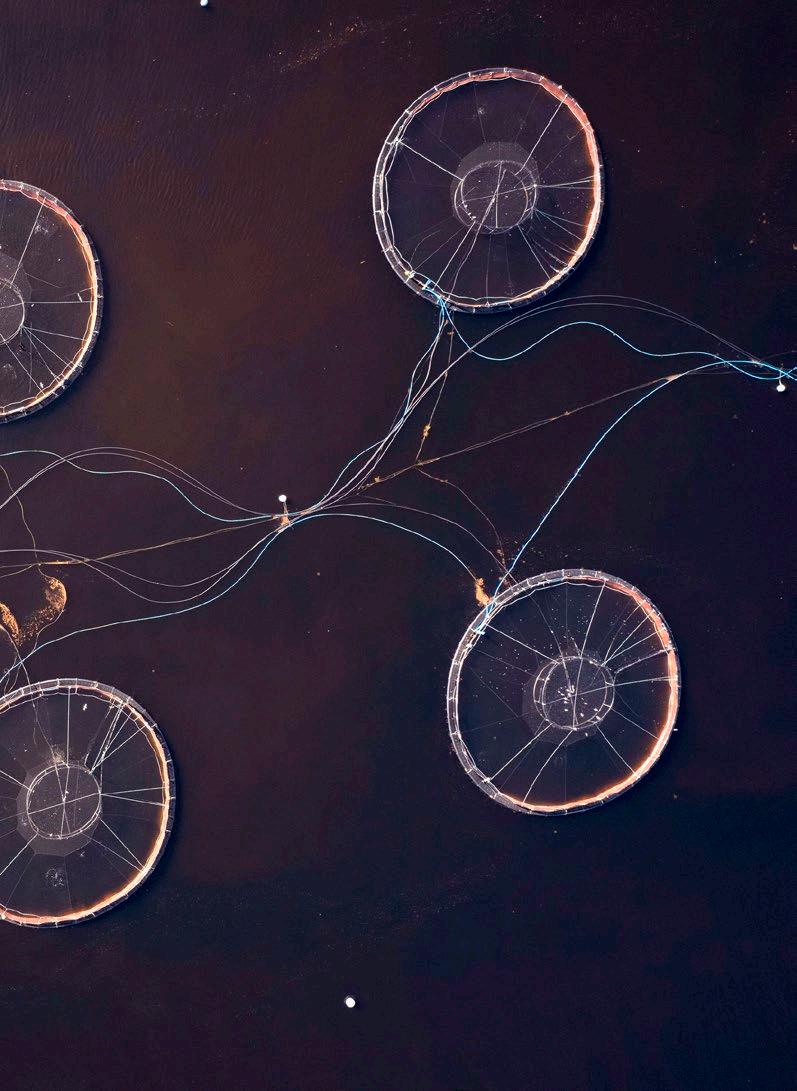
turn the page
SEE THE WORLD...
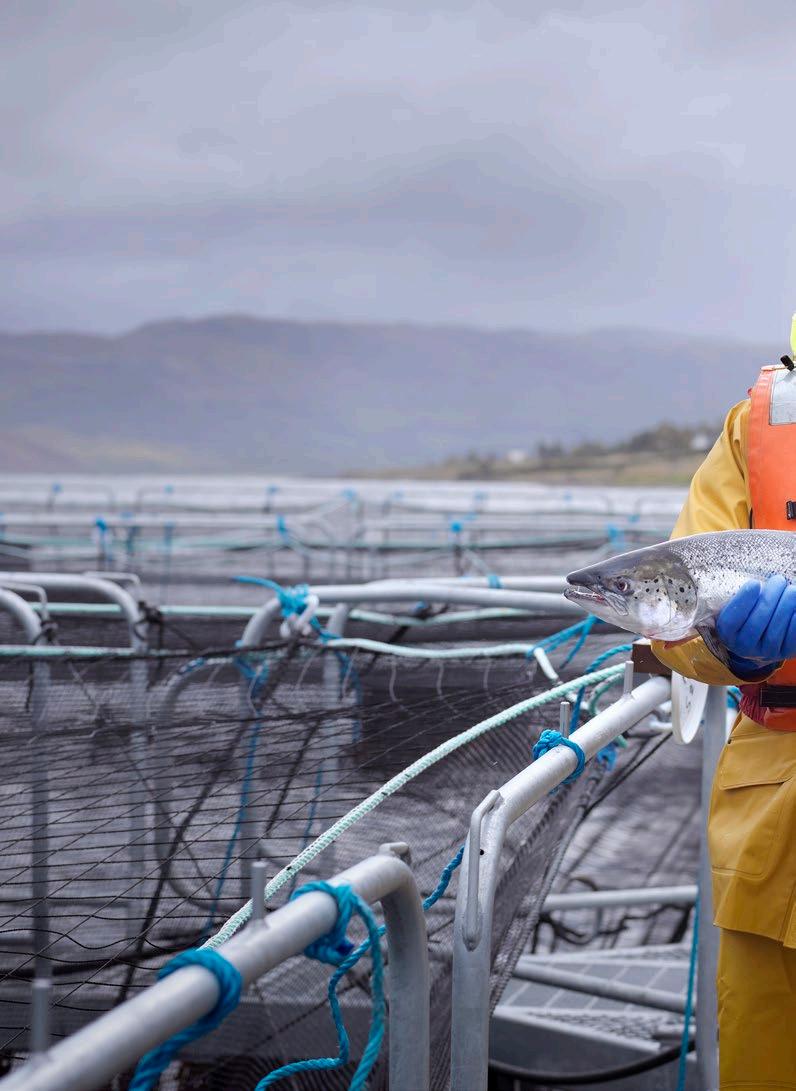
…DIFFERENTLY
Fish farmers have been around longer than some might think! Modern aquaculture began with a German scientist who, in the 18th century, succeeded in collecting fish eggs, fertilising them and feeding farm animals until they were ready for slaughter. Today, farmed fish live mostly in floating enclosures near coastlines. In Scotland, many farms specialise in salmon. It takes two to three years to raise the farmed fish before they end up as a delicacy on plates all over the world.
PHoto: © Getty i ma G es/ i ma G e s ou R ce/ m onty
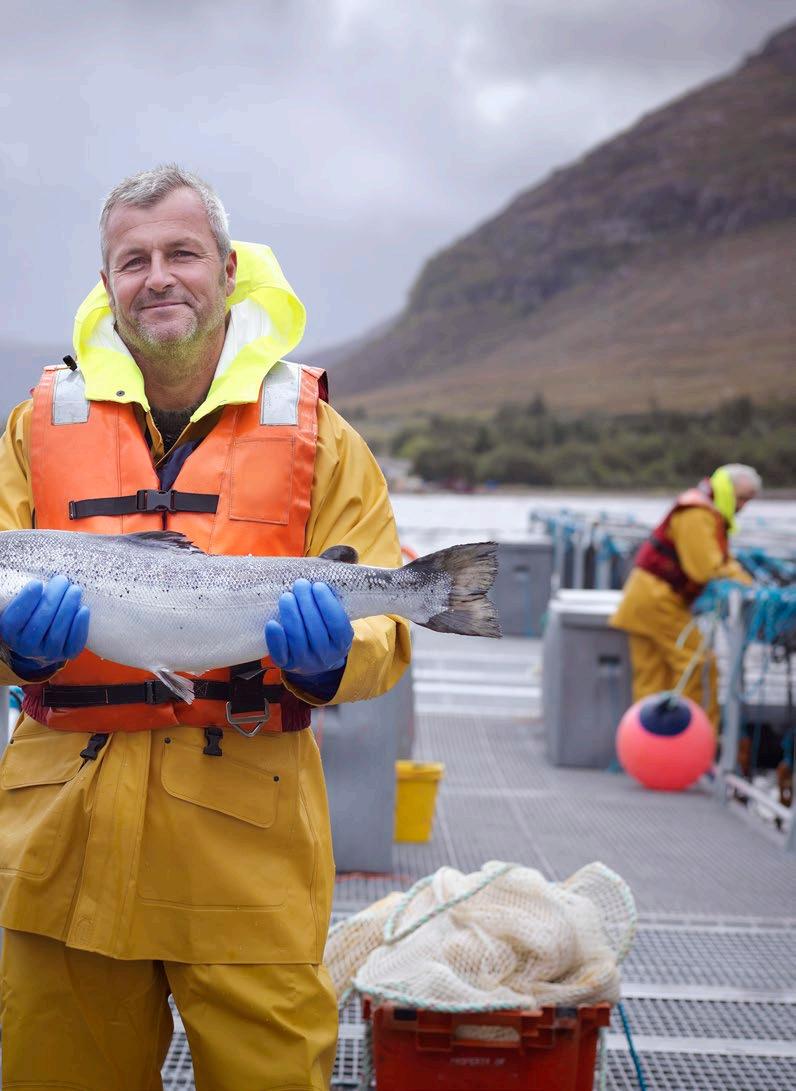
13

Dear Doggy Diary
Olly Mann gives in to his family and gets a puppy, writing of the cuteness and chaos

Olly Mann presents Four Thought for BBC Radio 4, and the podcasts The Modern Mann, The Week Unwrapped and The Retrospectors
Back in October, I wrote about my ambivalence towards dogs; a column triggered by a sneaking suspicion that my family wanted a puppy so badly I might as well get prepping and clear out the car boot. Sure enough, my missus then organised a trip to a breeder, "just to see", and, inevitably, once our three-year-old snapped eyes on the litter, a deposit departed my bank account within days.
Ever since, I’ve kept a diary:
MONDAY
After an epic Pets At Home bonanza, we’ve surely got all we require for the puppy’s arrival in three days’ time: a plush basket, squeaky toy banana and bag of treats. For names, we are mulling over Spike, Lenny or Lionel—but, as I reel off this list to a Black friend of mine, I suddenly realise they are all
illustration by Lauren Rebbeck MARCH 2023 • 15
names associated with famous Black men, and panic that this is a microaggression.
TUESDAY
Our friend Sam—a horsey lady who used to run the village kennels, and whose pockets are perpetually stuffed with dog biscuits—has kindly volunteered to "puppy proof" our home. “You don’t want to give him that squeaky toy, that’s encouraging him to eat your sofa”, she says, inspecting our purchases disapprovingly. “And that basket is going to get urinated on!” She hands us a plastic bowl, a pile of newspaper and a wire cage, says we must unplug all table lamps, remove all kids’ toys upstairs, and permit the cat to sleep in our bed, so that he has a "safe space". She hands us a book, by Dr Ian Dunbar. “This guy”, she assures us, “is Supernanny for dogs.”
WEDNESDAY
Spent last night swotting up on Dunbar. Am now terrified. Don’t buy a puppy that’s been raised on a farm, he says (too late to backtrack on that one!). Toilet-train the puppy via a strict routine, he insists: take him for a pee each hour, then offer ten minutes of "focused play", then return him to his cage so he selfsettles. Eh? A pee every hour? What are we supposed to do through the
night? Dunbar has plenty of wisdom on "positively communicating" with the pup, but zilch on how to get some kip and go to work with two young children also in the equation.
THURSDAY
D-Day. Puppy is a black tan poodle crossed with some sort of terrier, but the breeder’s unsure if "jackapoo" or "foxapoo" is the more accurate descriptor. I google the latter, and get “Did you mean: fox poo?” as a result, so put "jackapoo" on the microchip registration. Now the website wants a dog name. So, we go for "Buzz". One syllable, simple, and with multi-generational appeal (Granny thinks Aldrin, kids think Lightyear).
FRIDAY
I feel very tentative about saying so, but last night went well. Buzz is incredibly cute, the kids adore him, he needed taking out at midnight and 2am but then slept through until 6am without whining, and he’s very cute, and didn’t attack the cat, and only did one wee on the doormat, and did I mention he’s cute? Those beady eyes are straight out of BuildA-Bear! I send a snap to my friend Tom—a dog fanatic. “WHAT?” he types back instantly (he typically takes all day to respond to texts; puppies are clearly the key to his
16 • MARCH 2023 IT’S A MANN’S WORLD
heart). “Olly, prepare to fall in LOVE. Perhaps for the first time in your life!”
SATURDAY
"Love" feels like a stretch right now. Our "play" was evidently not "focused" enough to prevent Buzz biting through two of our cushions and three of my fingers. Also, our three-year-old thinks it’s hilarious to run away, so Buzz keeps chasing him, wrestling him to the ground and slobbering all over his face. I suspect this isn’t the best way to prepare Buzz for engaging with the general public when his vaccinations are done.
SUNDAY
The whole house smells of dog. I can even smell it in bed, but the dog has never been upstairs. I find this repellent, but friends, family, and people we barely know existed are "popping by" to meet him. Dog-walkers strolling past our gate pause to swap grooming tips. “It’s like having a baby, eh?” says my
neighbour, Erik, brightly. “Yes, but it’s a baby you can neglect when it cries!” I respond cheerfully. He frowns.
MONDAY
Sam returns, with some kitchen scales. Turns out we have been slightly under-feeding Buzz. She demonstrates how to train him to sit by offering him this additional "kibble". Though, she warns, that might mean some more poos…
TUESDAY
It’s 2am on the coldest day of the year and I’m on my hands and knees in the brambles. I reckon you’ve never really experienced a harsh mid-winter until you’re face down in the ice, trying to locate a tiny poop with a headtorch, while a puppy eats your slippers.
Then, we return inside, and for a moment, it’s just me and Buzz. Peace. I should put him back in his cage, and retire back to bed myself. But… I find I can’t resist a cuddle. Don’t tell the wife. n
The largest and oldest inhabited castle in the world, Windsor Castle has been used as the family home for British kings and queens for over 1,000 years
source: rct.uk
MARCH 2023 • 17 READER’S DIGEST
Windsor Castle
Hugh Jackman
On Mental Health, Musicals And Marvel
By James Mottram
The affable Australian film star opens up about how his new film, The Son, changed him and why people loving his films and characters means so much to him
The pink-walled Excelsior Hotel, on Venice’s Lido, is more than used to famous film stars mingling on its terraces. Since the Italian city’s celebrated film festival began, it’s played host to everyone from Greta Garbo to Clark Gable. Today it’s the turn of Hugh Jackman. The genial Australian star is, depending on your tastes, famed for the razorclawed superhero Wolverine in the X-Men films or barnstorming, Broadway-sized performances in musical movies like 2017’s The Greatest Showman.
We’re seated in the downstairs restaurant, overlooking the
sun-dappled waters of the Adriatic Sea. Jackman, 54, sporting a navy suit and white shirt, is trim and toned. We’ve met sporadically over the years, right back to 1999 when he starred in a little-seen film, Paperback Hero—playing a truck driver who writes romance novels. He’d just come off a breakout turn as Curly in an Olivier-winning revival of Oklahoma!. “Hollywood to me is not a Holy Grail,” he told me, earnestly. But Wolverine was waiting in the wings, the role that would turn him into a star.
Between showtunes and superheroes, Jackman has never quite managed a role like his new
ENTERTAINMENT © BEN WATTS 18 • MARCH 2023

19

film, The Son. It comes adapted from the 2018 play by Florian Zeller, who previously exploded onto the movie scene with another take on one of his own stage dramas, The Father. While that dealt with Alzheimer’s— something Jackman’s own father lived with for years—this looks at another mental health issue. Jackman plays Peter, a workaholic divorcee whose world implodes when his adolescent son begins to suffer from debilitating bouts of depression.
He gives a gut-wrenching performance, one that more than merits a second Oscar nomination of his career (following his breadstealing revolutionary in 2012’s Les

Misérables). “I think what was most interesting to me about Peter was [that] it was important to him to feel that he is a strong and capable man,” says Jackman. “And that made it harder for him to admit that maybe he’s not equipped, maybe he didn’t know what to do. Some guilt about leaving the family home, that is unresolved, makes him even more determined to be the one who can fix things, save his son—be the father that his father was not.”
To say the film got under Jackman’s skin would be an understatement. “I think it’s still working its way through me, as we talk about it and relive it and understand it,” he admits. “And when I watched it, I found myself
20 • MARCH 2023
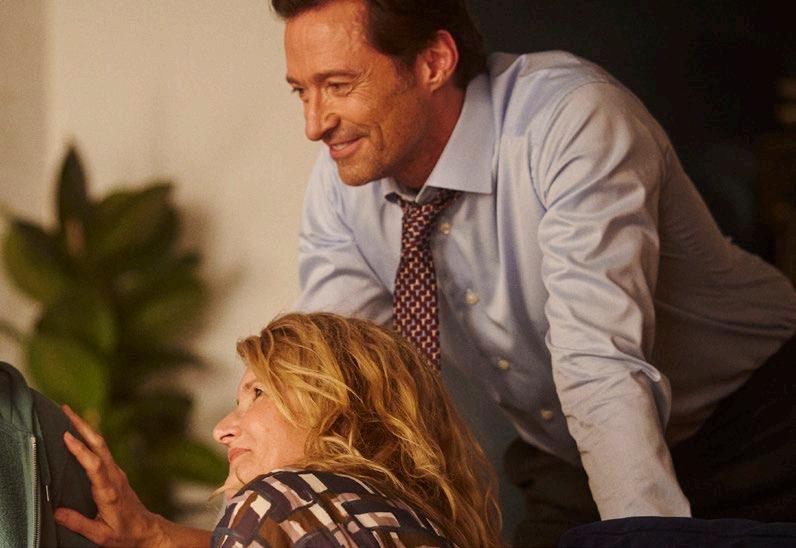
very emotional. I’m not just talking about the story. I think it was a process that required a lot of, I guess, trust and revealing.” At the Venice world premiere, where the audience gave the film a ten-minute standing ovation, Jackman was visibly moved by the thunderous reception.
He admits the film changed his attitude to mental health. “It gave me a lot of empathy,” he says. “It made me understand.” He started therapy during the filming—an interior clean-out that most in their middleage years could probably do with. It also reframed his own relationships with his children. Married since 1996 to actress Deborra-Lee Furness, Jackman and his wife later adopted
a son, Oscar (now 22) and daughter, Ava (17). “I’m different since doing this film,” he says. “I’m more open about my vulnerability with them, with my kids.”
While Jackman has worked for some of the world’s biggest directors, including Christopher Nolan (The Prestige) and Darren Aronofsky (The Fountain), he’s not always been recognised for his dramatic chops, and had to campaign his director for the role. “I had to call him and say, ‘Please have me!’ and email him and put my hand up for the part.” Zeller remembers their communication, as the actor quietly requested ten minutes of his time to explain just why he felt he was right to play the
MARCH 2023 • 21
Jackman in The Son

Starring in The Greatest Showman
22 LANDMARK MEDIA / ALAMY STOCK PHOTO
part. “I was really moved, I have to say, by his humility, his honesty, and his capacity to express his desire.”
During the shoot in London, Jackman’s raw emotions even took Zeller by surprise. “He was not trying to hide himself behind the character. He was open to explore his own emotions, in order to be as truthful as possible, which is very courageous for an actor.” It was a tremendously difficult time for Jackman; his father Chris, a former accountant whose health had been deteriorating for some time, died during production. The actor, who’d visited his father shortly before filming began, stayed on to
returned to England along with his two sisters.
Jackman half-jokes that he “wanted to be a rock star” growing up, but the real seed for his career was planted elsewhere. A born-again Christian, Jackman’s devout father had been converted by Billy Graham, the famous American Evangelist, and he used to take his son to Christian Revivals. It may not have entirely influenced his religious beliefs, but the young Jackman was entranced by the showmanship. “I remember when I was 14, 15, going to one of those and having a very strong feeling that I was going to be up on that stage at some
“I REMEMBER BEING YOUNG, HAVING A VERY STRONG FEELING THAT I WAS GOING TO BE ON STAGE”
complete the film, partly to help him through the grieving process.
Today, he speaks fondly of his father’s quirks. Like how he’d tell him off as a youngster. “[He’d say] ‘I’m very disappointed in you, young man!’ I remember getting that one. But my dad was very English. He had a bunch of others like, ‘Buck your ideas up!’. Things like that. Just really English.” Jackman’s parents were both British and had come to Australia in 1967 as part of an immigration scheme. The youngest of five, Jackman was eight when his parents split; after that, his mother
point. Calm but very certain.”
While he starred in a production of My Fair Lady at school, it wasn’t until Jackman took a drama class at university that he began to feel like he’d found his people. Further theatre studies followed, then came a role as Gaston in a stage production of Beauty and the Beast. “It was a bit of a joke. They told me ‘You’re not the best singer around’ but the guy had to be over six foot, and look a bit like me. In my contract, I had to have singing lessons every week. You do that, and you can be tone deaf and you’ll end up alright.”
MARCH 2023 • 23
READER’S DIGEST

He ended up more than alright. He’s twice been nominated for a Tony award, winning for The Boy from Oz. He hosted the Oscars in 2009 and has toured multiple oneman shows, singing Broadway hits to audiences. With all that razzamatazz, is it any wonder he was drawn to a film called The Greatest Showman? He helped turn it into a $434 million-grossing phenomenon, one that saw thousands flock to repeat “singalong” viewings. “I’m thrilled,” he admits, “I know how much it touches people and it really means a lot to them.”
As an actor, he pushes himself every inch of the way. “When a
director compliments me, I want to say, ‘Don’t do that, man.’ The next take’s not going to be as good. I react more to giving myself a hard time— it’s exhausting.” Every production, he’s always full of angst before he begins. He remembers meeting tennis legend Roger Federer’s wife once. “She said [that] even after he would lose, he would come home and play table tennis with the kids. He was very philosophical about it all. I’m not quite at that Roger Federer level.”
If there’s been a constant in his career, then it’s been Wolverine. A role he’s played across nine X-Men
24 • MARCH 2023
ALBUM
Playing Marvel character Wolverine
/ ALAMY STOCK PHOTO


movies, Jackman’s soulful turn helped turn comic book films into the blockbusting behemoths they’ve become. He said goodbye to the character—brilliantly—in 2017’s Logan. “It was a discussion I had with [comedian] Jerry Seinfeld which really sparked off the ending to me. He gave me a surprising answer to why he finished his show; he just said ‘I’m a firm believer that creatively if you leave at the right time you’re propelled into whatever’s next with energy and excitement. But if you stay a little too long, it can be Herculean to give it up.’ And that really rang true to me.”
Herculean indeed. Shortly after we meet, it’s announced that Jackman
will return as the character in 2024 in Deadpool 3, seven years on from his last screen appearance. The temptation of teaming up with Marvel’s most snarky superhero, played by Ryan Reynolds, was clearly too much. As Jackman told The Guardian recently, “I just wanted to do it and I felt it in my gut [and] I get to punch the s**t out of Ryan Reynolds every day.”
The consummate professional, he clearly remembered that old showbiz adage: always give the audience what they want. n
The Son is out in cinemas from February 17, 2023
MARCH 2023 • 25 EVERETT COLLECTION INC / ALAMY STOCK PHOTO
Logan 2017

Sir Michael Burton I REMEMBER…


Sir Michael Burton, 85, is a former British diplomat who served as British Minister in Berlin in the final years of the Cold War, was the British Ambassador to Prague in the 1990s and has worked in the interests of British diplomacy in locations ranging from Khartoum to the Khyber Pass in a career spanning six decades
ENTERTAINMENT 27
A young Michael Burton in the Rifle Brigade
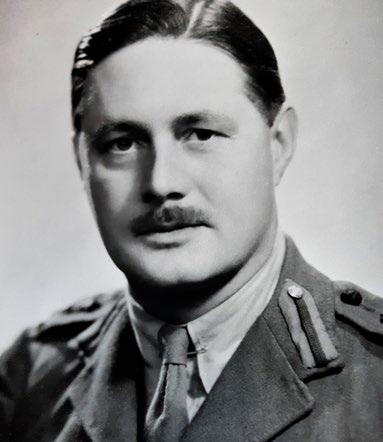
I WAS A WAR-CHILD AND GREW UP IN A MILITARY FAMILY IN CAMBERLEY. I can remember the thrill of sleeping under the stairs with my brother when the Luftwaffe flew over to bomb the Royal Military Academy, Sandhurst, which was just down the road. I also remember the humiliation, due to a misdemeanour on my part, of not being allowed to join my mother on her weekly round on a truck collecting waste paper for the war effort.
IN MY LAST YEAR AT SCHOOL, I PLAYED THE LEAD IN THE SCHOOL PRODUCTION of Hamlet, directed by a master who I remember was very charismatic. It was a massively enriching and challenging experience. It also gave me voice training that has stood me in good stead throughout my career. During

rehearsals, the master sat at the back of the huge hall and made me repeat any word that did not come out crystal clear. I completely lived the part for two months and I think that was the time I got rather good at enunciation, which definitely helps these days with my cruise ship talks.
CONTRARY TO MANY CONSCRIPTS’ EXPERIENCE, MY NATIONAL SERVICE (as one of the last to be called up) was far from boring. After basic training and Officer Cadet School, I found myself as a platoon commander in a crack rifle regiment in command of 20 young conscripts of my own age in the Malayan jungle during what they called the “Emergency”, which was basically a communist insurrection. This was Britain’s equivalent, on a
28
• MARCH 2023
(Left) Michael’s brigadier father; (Centre) Playing Hamlet in school; (Right) Michael Burton’s mother
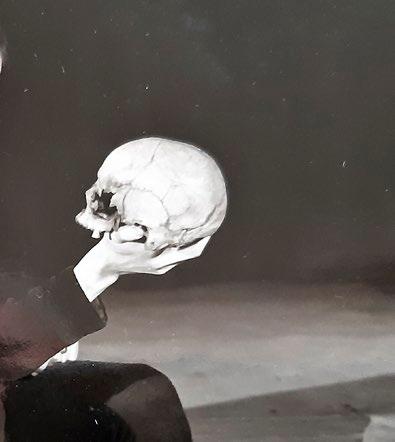
smaller scale, to the Vietnam war— but in our case we won!
MY FATHER WAS A HIGHLY DECORATED RETIRED BRIGADIER. I remember when he called me in when I was in the modern languages sixth form and advised that my skill at languages fitted me for the diplomatic service, although he himself knew little about it. The idea stuck in my head, and that was where I eventually went.
ON JOINING THE FOREIGN OFFICE I was asked to choose a difficult language, so I chose Arabic. That meant attending the Middle East Centre for Arabic Studies (MECAS), a Foreign Office establishment in Lebanon. It was a very rigorous course, although there were compensations, such as skiing

at the Cedars of Lebanon at weekends. A fellow student while I was there was the double agent George Blake, who returned to London to be interrogated, tried and imprisoned. He escaped and ended up in Moscow, where he eventually died aged 100!
MY FIRST DIPLOMATIC POSTING WAS DUBAI but it was absolutely nothing like the Dubai of today. This was before oil production got going, and before the creation of the UAE. Britain still kept the Gulf as its exclusive preserve in the 1960s and our role was to provide security for the so-called Trucial States and to advise the Rulers on their external affairs. The traditional way of life was little changed at that time and I remember there were hardly any roads. It was an ideal job for a young
MARCH 2023 • 29
Michael with Sheikh Rashid of Dubai in 1963

political officer, with definite shades of Lawrence of Arabia. The highlight of my time was dealing with a tribal insurrection against one of the Rulers (of Ras al Khaimah), with the help of the Trucial Oman Scouts. It all happened while my boss was on annual leave.
I FINALLY GET TO USE MY FRENCH LANGUAGE SKILLS IN PARIS. It was 1969 and President de Gaulle had just resigned. The British embassy’s task was to find a way of getting his successor to set aside the two vetoes that de Gaulle had imposed on Britain joining the EEC (as it was then called). As the embassy press officer, my job was to make the case for the UK becoming a constructive member of the club. After the success of our campaign,
the Queen and Prince Philip came out on a spectacular royal visit, in the course of which they called, with Prince Charles in tow, on the Duke of Windsor in his villa in the Bois de Boulogne. The Duke was dying and the purpose of the call was really to say goodbye. My task was to prevent the media from getting wind of this, in order not to cast a shadow over the royal visit. This meant they were denied the historic picture of three generations of British monarchy.
TWICE DURING MY PARIS POSTING I ATTENDED THE CANNES FILM FESTIVAL as the official British delegate. My wife and I worked with the UK film industry representatives, Leon and Miriam Clore, to support the British entries, not least by giving a popular daily
30 • MARCH 2023
The Queen on 1969’s Paris state visit

buffet lunch on the beach. One year my ambassador Christopher (later Lord) Soames also attended, which raised the UK’s profile. I remember my wife meeting David Lean and she admitted to him that she was very smitten with Christopher Jones, who was in his film Ryan’s Daughter. Lean told her, “I should leave him well alone if I were you—he’s ever so mixed up!”
BACK IN THE MIDDLE EAST,
ON THE WAY TO MY POSTINGS to Jordan and then Kuwait, my wife and I had a knife-edge encounter late at night with a group of masked and armed fighters as we drove back up a country mountain road to our hotel, after celebrating our wedding anniversary in Beirut. They barred our way and stuck a gun through a
,
window of our car—on what would normally be the driver’s side, but since we had a right-hand drive British make, it was my wife whom they confronted. Having strong nerves, she asked calmly and politely what they wanted. “Turn off your car lights and do not turn them on again until we are out of sight,” was the reply. We complied. Next day we learned what a close shave we had had. We were told that a UN couple on the same road, faced with the same demand, had reacted angrily, with disastrous consequences: he was shot and his companion raped.
I
WAS THE SENIOR
BRITISH DIPLOMAT
IN WEST BERLIN when the Berlin Wall fell in 1989. No-one could have predicted that dramatic event at the start of the year. The first
MARCH 2023 • 31

opening of the border, accidental rather than planned, took place in November and the official opening of the Wall by the Brandenburg Gate followed shortly before Christmas. I remember it was delayed by a few hours by news of the flight of the Romanian dictator Nicolae Ceausescu in Bucharest. I attended in the hat I reserved for solemn occasions. My wife and two children were also there enjoying the historic moment in pouring rain.
,
IN 1992 I WAS RESPONSIBLE FOR ARRANGING THE STATE VISIT OF THE QUEEN AND PRINCE PHILIP to Eastern Germany and reunified West and East Berlin. Their walk through the Brandenburg Gate— which had been impossible during the 28 years of the Berlin Wall’s

(Left) With Prince Charles in Berlin; (Centre) Meeting
President Reagan
existence—was a very highly charged symbolic moment. I accompanied the Queen as she unveiled a plaque marking the spot where the new British Embassy was to be built, when the German capital returned to Berlin. She bestowed a knighthood on me at the conclusion of the visit.
I WAS ALSO RESPONSIBLE FOR A ROYAL VISIT IN MY FINAL POST as ambassador to Prague, which was definitely the climax of my career. This time the Queen, at the conclusion of her highly significant visit, unveiled a Henry Moore sculpture I had managed to procure on loan to adorn the embassy garden. We had to hire a crane to get his “Seated Woman” piece in there but then, just after I left, they had to send it back to
32 • MARCH 2023


England again as the Henry Moore Foundation needed it.
I’VE ALWAYS BEEN DRIVEN BY A DESIRE TO EXPLORE THE WORLD in all its richness and diversity. At the conclusion of my 37-year-long diplomatic career I’m still continuing this passion through travel, including the 45 cruises that I have been on with my wife as a guest lecturer.
With the Queen as she unveils a Henry Moore statue in Prague
Shanghai was the place that impressed me most; it’s fantastic how the city is just such an incredible forest of skyscrapers but with traditional areas still preserved too. n
As told to Rob Crossan
On Her Majesty’s Secret Diplomatic Service by Sir Michael Burton is published by iB2 Media (£14.95)
World War One Hour Forward
In 1908, builder William Willett financed a pamphlet “The Waste of Daylight”, advocating for longer daylight hours but the idea was unsuccessful in the House of Commons
The idea resurfaced during the First World War, with conserving coal making daylight saving more pertinent. The Summer Time Act passed in 1916. Sadly, Willett died of flu in 1915 source: historic-uk.com/CultureUK/British-Summer-Time
MARCH 2023 • 33

Are We Facing A
LABELLING EPIDEMIC?
Last year the Diagnostic and Statistical Manual of Mental Disorders (DSM 5) topped the Sunday Times bestsellers list. Why would a manual which has a main purpose for communicating diagnosis among mental health professionals become a bestseller among the general population?
BY Victoria Stokes
34 HEALTH

YOU MIGHT HAVE HEARD IT IN CONVERSATION WHEN A RELATIVE JOKES ABOUT BEING "A BIT OCD". PERHAPS YOU’VE SPOTTED IT IN A PARENTING FACEBOOK GROUP WHEN CONCERNED PARENTS RUSH TO TELL A WORRIED MUM THAT HER SON’S BEHAVIOURS SOUND LIKE ADHD.
Maybe you’ve noticed it in the comments section of viral social media posts about autism, anxiety, or bipolar, with numerous people chiming in claiming to tick all of the boxes.
These days, labelling is everywhere. It can be helpful for people who have never quite been able to put a finger on why they feel the way they do, but haphazardly using these terms to describe yourself or others, with little understanding of what these conditions actually are or how people experience them, is problematic—and it seems to be on the rise wherever you look.
Charlotte Armitage, a registered integrative psychotherapist and psychologist, says it’s something she’s seeing more and more of. “I think that social media has a lot to answer for, as there are many videos online with people describing traits of certain disorders,” she notes.
“It’s easy for someone to watch these videos and identify with the traits without truly recognising or appreciating the context in which these traits would require a diagnosis. It leads to people overidentifying with what is posted online and then attributing those traits seen to themselves.”
36 • MARCH 2023 ARE WE FACING A LABELLING EPIDEMIC?
Charlotte Armitage

If you’ve done your research and genuinely feel that you have some form of neurodivergence or mental health concern, then finally having a name for your behaviours can be a great thing. Seeing content that reflects your experiences online can be a comfort as well.
But the risk is that many people will seek labels for any behaviour, pattern or emotion that’s outside of the perma-happy bubble that society has set as the norm.
“There seems to be a desire to pathologise the human experience, seeing adverse emotions as something that requires intervention
or diagnosis, when in reality, it’s normal to feel a whole array of positive and negative emotions,” Armitage surmises.
“The saying that ‘a little bit of knowledge is dangerous’ springs to mind,” she adds. “It might be that someone has had a certain experience of their own but then judges all behaviour through that lens.”
Often, labelling others says more about you than it does about them. “Some people may enjoy the power of being able to identify and label traits, but this serves more to fulfil the needs of the person communicating their opinion rather than to support the
MARCH 2023 • 37 READER’S DIGEST

individual who is seeking help,” Armitage explains.
Labelling poses even more of a problem when it comes to kids.
“Children are still developing and evolving, and many childhood behavioural traits may seem like traits of a disorder when there are other potential explanations for that behaviour,” Armitage notes.
Ideally, Armitage says a diagnosis, be it for an adult or a child, should be carried out by a qualified mental health professional. “A clinician will ensure that the diagnosis is correct and communicate that diagnosis in a way that is appropriate and helpful for
the individual,” she says. When that doesn’t happen, Armitage says it can lead to the individual feeling flawed and act as a hindrance to recovery.
SELF-DIAGNOSIS
While labelling others—especially children—is a habit best avoided, sometimes self-diagnosing can be a useful—and often necessary—tool.
Jennifer Cairns (50), who is autistic and self-diagnosed with ADHD, says having a name for her behaviours has had a “profound” effect.
“Like most people who are neurodivergent—especially
38 • MARCH 2023
ARE WE FACING A LABELLING EPIDEMIC?
women—I spent most of my life wondering what the heck was wrong with me, why I wasn't like others, why I struggled so much to fit in, and why everything felt so hard,” she muses.
Even after being told she was autistic in her mid-forties, Jennifer says not everything made sense. “I couldn't make sense of some behaviours and sticking points with the autistic side,” she recalls. Jennifer then realised she had ADHD.
Since self-diagnosing, Jennifer says being better able to understand herself and having a label has allowed her to thrive. “I've worked really hard over the past couple of years to accept myself with all of my neurodiversity and disabilities, and to figure out how to best build a business that suits me,” she explains.
“Having this understanding has helped me with acceptance, but also with ensuring that others understand my needs as well. I’ve learned to use aspects of my neurodiversity in the best ways possible and I ensure I fill the gaps where I need more help or strategies in place.”
While Jennifer believes that understanding ourselves (labels or not) is the first step to being happier, she says there’s a risk that people can label themselves and others without really considering what it means to be neurodiverse.
“There isn't a ‘little bit’ of ADHD or any other neurodiversity. Someone is neurodiverse or they're not,” she
points out. “This is where I can see harm coming from a lack of understanding of what it truly means and people using the labels as they think they're in fashion now.”
Jennifer says phrases that make light of neurodivergence or mental health conditions can be reductive. “It minimises the struggles we go through and dilutes the realities of what being neurodiverse means,” she surmises.
WE AREN'T LABELS, EVEN THOUGH WE USE THEM. A LABEL DOESN'T DEFINE WHO YOU ARE
Cathy Wassell, CEO of registered charity Autistic Girls Network, shares similar sentiments. She points out that being recognised as neurodivergent is not about naming behaviours; it’s something you can’t take away from someone. Or as she puts it, “It's not a handbag you can pick up and put down.”
While labelling people’s behaviours is little more than flippant psychoanalysing for some, for others, it’s the only option. Getting an official diagnosis can prove difficult, timeconsuming and costly. Jennifer says she’s currently on a waiting list for a
MARCH 2023 • 39 READER’S DIGEST

diagnosis, but that it’s so long she’s not thinking about it.
The long wait may go some way towards explaining why many take to Facebook groups and other online forums seeking advice—and why the advice is often inaccurate and vague.
“The support here [in the UK] for adults is minimal at best so the only advantage [of an official diagnosis] is having that actual piece of paper. I may not even follow up and complete the process,” Jennifer admits.
Instead, Jennifer will be seeking a better understanding of herself and what it means to have autism and ADHD. For her, that means continuing to learn what works for her and what doesn’t.
FINDING SUPPORT
If you’ve noticed certain patterns and behaviours, and you suspect you or your child are neurodivergent or have an undiagnosed mental health condition, you might be wondering where to access the correct support.
Your first port of call should, of course, be your doctor. If you’re in a position to go private, Armitage recommends finding mental health professionals from the Health Care Professions Council, the British Psychoanalytic Council, or the Royal College of Psychiatrists.
Of course, not everyone wants a diagnosis from a doctor. You might be perfectly content having reached an
40 • MARCH 2023 ARE WE FACING A LABELLING EPIDEMIC?
understanding yourself. At this point, Wassell says many people go through a period where they re-evaluate things that have happened in their lives.
“There might be some grief, regret or anger that it took so long to find out. You may want to tell family and friends and you may want to ask for reasonable adjustments at work, but that's all going to be very individual to each person,” she explains.
Whether you choose to self-diagnose or not, Jennifer says it’s important to remember you are more than a label.
“We aren't labels, even though we use them. A label doesn't define (good or bad) who you are,” she is
keen to point out, clearly and helpfully. “The most important thing to remember is that you aren't broken, less or incapable.”
Sometimes a label just gives you a name for those behaviours that once felt unusual or out-of-sync with the rest of society. Sometimes, having a name for something means those behaviours don’t seem so unusual or strange after all.
As Wassell notes, a diagnosis can alert you to the fact that you are not alone, and that there are, in fact, many people who experience life in the same way you do. How you go about getting that diagnosis is really up to you. n
Difficulty Bathing?

Not with our walk-in, lie down bath.


The Simplicity Bath from Nationwide Mobility. Cleverly designed to make stepping in and out so much easier and safer too!

UP TO 20% OFF*
• Fits in same space as your old bath
• Door available on either the left or right hand side of the bath
• Back-up safety battery in case of power cuts
• Safe low threshold
• Strong reinforced bath shell on a robust steel frame









READER’S DIGEST MARCH 2023 • 41
FOR A FREE COLOUR BROCHURE CALL NOW 0800 316 9798 OR VISIT WWW.NATIONWIDE-MOBILITY.CO.UK 16 FITTED IN A DAY!**
SALE
Ask for Ext. 64965 *Not in conjunction with any other offer. **Based on a straightforward fitting.
AN ANTIMIGRAINE DIET
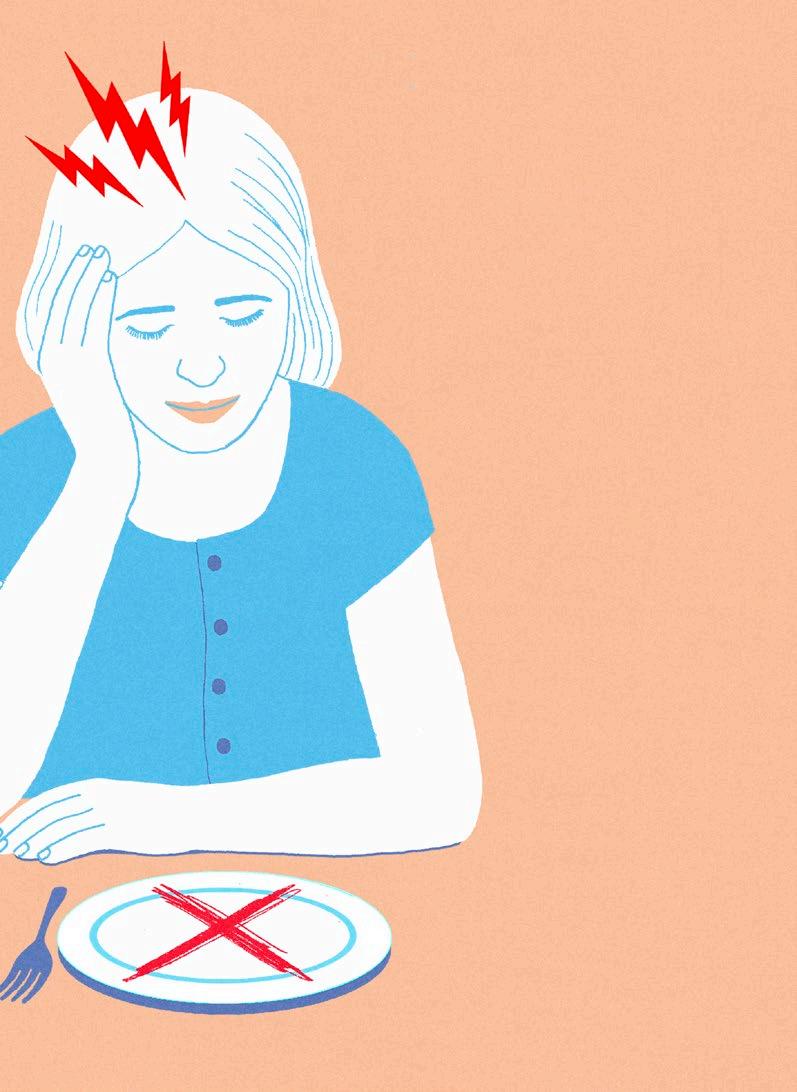 By Jen Babakhan, Lisa Marie Conklin, and Jessica Migala
illustrations by James Steinberg
By Jen Babakhan, Lisa Marie Conklin, and Jessica Migala
illustrations by James Steinberg
What you eat—and don’t eat— can help stave off debilitating headaches
Christy Nielson, 49 , remembers getting her first migraine when she was in third grade. She curled up in the back of the school bus in excruciating pain, not able to find the words to tell her parents what it felt like when she got home. When she hit puberty, the migraines got worse. By her early twenties, she assumed that severe headaches were an unavoidable part of her life. It wasn’t until years later that she finally found a cure—in her kitchen.
Migraine is a neurological disease that has a number of symptoms, including moderate-to-severe throbbing head pain that can last for anywhere from four hours to several days. According to the World Health Organisation, roughly 1 billion people around the world experience these headaches. While migraines can occur partly because of genetic factors, attacks may happen seemingly at random, set off by something in the environment.
“Everyone’s brain works slightly differently, but we know in general that triggers can cause a hyperexcitability to the cortex of the brain,” says Danielle Wilhour, an assistant professor in the Department of Neurology at the University of Colorado School of Medicine.
One common trigger is food, and some common dietary triggers include alcohol, salt, sugar, chocolate and caffeine. But there are many
others, and scientists continue to identify more. In 2021, for instance, a Brazilian study looked at some common fruits and vegetables to see their impact on headaches. They found that watermelons were the most common migraine trigger among the produce they studied, bringing on a headache within minutes in about 30 per cent of the study’s participants.
Another little-known trigger is gluten, a protein found in wheat, barley, rye and some other grains.
NEW RESEARCH IS LOOKING AT WHICH FOODS CAN PREVENT OR MINIMISE MIGRAINES
Gluten in foods like bread, crackers, pasta and seasoning mixes may cause digestion woes (and be dangerous for people with coeliac disease), but for some, headaches can also be a symptom of gluten sensitivity.
Wheat turned out to be one of the culprits for Christy Nielson. When prescription drugs began to fail her, Nielson turned to alternative medicine. She visited Nicola McFadzean Ducharme, a naturopathic doctor in San Diego, California, who listened to her symptoms and tested her for
MARCH 2023 • 43
HEALTH
possible allergies. While awaiting the results, the doctor put Nielson on an elimination diet, restricting her food intake to fruit, vegetables and meat.
“The first weeks of the diet were very difficult,” Nielson recalls. “But on day 13 it was as though a veil had lifted. The headaches were gone.” The test results revealed that Nielson had a severe sensitivity to eggs and wheat, which had always been part of her diet. Today, Nielson says her migraines are gone for good.
Foods That Heal
Some of the newest research isn’t looking at what foods can trigger a migraine, but which foods and what kinds of diets can prevent or minimise them.
AFTER ONLY A FEW MONTHS, TANYA’S MIGRAINES HAD PRACTICALLY DISAPPEARED
A study published in 2021 by a team of researchers at the US National Institutes of Health (NIH) and the University of North Carolina at Chapel Hill found that a diet higher in fish oils rather than vegetable oils helped people suffering from frequent migraines to reduce the number of occurrences,
as well as the intensity of the headaches suffered.
In the study, those on a diet lower in vegetable oil (linoleic/omega-6 fatty acids) and higher in fatty fish (omega-3 fatty acids) had a 30 to 40 per cent reduction in total headache hours per day, severe headache hours per day, and overall headache days per month compared to the control group.
For some study participants, the improvement was dramatic. Tanya Kamka had suffered weekly migraines for most of her life. Then, in her fifties, she joined the NIH diet trial and increased her intake of fish. The benefits were striking. After only a few months, her migraines had practically disappeared. She maintained the dietary changes after the study ended. “I haven’t had a migraine, not even a mild one, in over two years,” she says.
For others, relief comes from plants, not fish. Last year the British Medical Journal published a report from a team of New York-based doctors about a patient who had experienced remarkable relief from migraines after switching to a plant-based diet. The 60-year-old man had suffered from migraines without much relief for a dozen years. He’d already tried eliminating food triggers. Then he joined a study on the food-migraine link and switched to a diet called LIFE (Low Inflammatory Foods Everyday),
44 • MARCH 2023 AN ANTI-MIGRAINE DIET
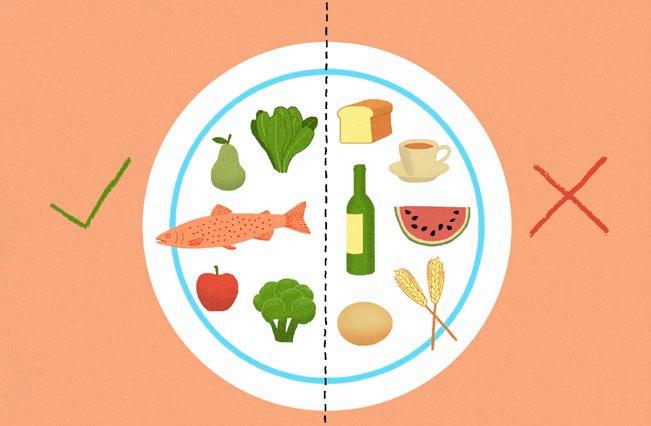
which includes a lot of dark, leafy greens like kale and spinach, as well as blueberries and flaxseed.
After two months the man reported he was experiencing only one migraine a month, instead of the 18 to 24 a month he’d suffered previously. He has been migrainefree now for several years. The doctors believe that the diet may help by both eliminating triggers and increasing levels of phytonutrients, which are found in plants.
Other individuals with migraines have found relief by following ketogenic diets, low-fat diets, or low glycemic diets. Clearly, since the food components of these plans differ dramatically—ketogenic diets, for example, are high in fat—and people with migraines react to food in very different ways, what works for one person may not work for another person.
Be a Food Detective
If you suspect that food may be contributing to your migraines, there are several steps you can take. The National Headache Foundation in the US recommends keeping a log of the foods you have eaten, the time you ate, and when your headache symptoms occurred. After identifying your trigger foods, see if eliminating them from your diet reduces or stops your headaches.
However, be careful about dropping too many foods from your diet without consulting a medical professional. Elimination diets can lead to malnutrition if not done carefully.
Alternatively, consider adding fish oil to your diet or trying to eat more plant-based foods. You can also experiment with different diets to see if overhauling your eating habits will banish your migraines for good. n
MARCH 2023 • 45
Tired Of
Feeling Tired?
Sometimes we sleep well but still feel groggy. Some of the possible causes might surprise you
Iron deficiency


Susannah Hickling is twice winner of the Guild of Health Writers Best Consumer Magazine Health Feature
A lack of this important mineral can leave you devoid of energy. You might get other symptoms too, such as shortness of breath and palpitations. Iron deficiency can be the result of bleeding in the stomach or intestines due to taking anti-inflammatories such as ibuprofen or aspirin, from piles or stomach ulcers. A blood test can reveal if iron deficiency anaemia is behind your fatigue. Not treating it can put you more at risk of heart problems and infections.
Hypothyroidism
Exhaustion is the main symptom of an underactive thyroid gland. If a thyroid function test shows this to be your problem, you’ll need to take daily levothyroxine tablets to replace the hormone thyroxine that you’re missing. Heart disease is a possible complication of untreated hypothyroidism.
46 • MARCH 2 023 HEALTH
A LACK OF THE IMPORTANT MINERAL IRON CAN LEAVE YOU DEVOID OF ENERGY
Sleep apnoea
If you’re getting lots of sleep but still feel wiped out next day, you could have sleep apnoea, a condition which causes you to stop breathing momentarily. It can make you snore and gasp for breath, but you might be unaware you have it. A partner should be able to tell you and sometimes a sore throat in the morning is a tell-tale clue. Sleep apnoea puts you at higher risk of heart attack, stroke and dementia, so it’s important to see your doctor if you suspect it.
Sleeping too much
It’s counterintuitive, but spending too long in bed can make you tired. In fact, any deviation from your usual sleep routine can affect you. More than nine hours’ kip is too much, while fewer than six can also be harmful to health. Find out what works best for you and stick to it. Also try to go to bed and get up at the same times every day.
Mental health
Stress, anxiety, depression and traumatic events like bereavement or
a broken relationship can make people feel physically drained. See your GP if the problem persists; medication and talking therapies can help.
Being over- or underweight
Your body has to work harder to carry out normal tasks if you’re overweight or obese. On the other hand, when you’re underweight, you might have poor muscle strength, which means you’ll tire much faster.
Long COVID
If you’ve felt run down for a while after having a run-in with coronavirus, you might have long Covid. Speak to your GP about a possible referral to a postCovid clinic.
Diabetes
Feeling very tired all the time is a symptom of diabetes. Being thirsty and peeing more frequently are other clues. Ask your GP to be tested.
Clocks going forward
That transition when the clocks go back in autumn and then leap forward in spring can throw our body clock out, making us feel jetlagged. Research has even shown an association between the change to summer time and heart attacks and increases in road accidents. If you’re badly affected, consider building up to the change by going to bed an hour earlier for a few days before. n
MARCH 2023 • 47
Being steady on your feet might be more important than you realise
Redress The Balance
FEELING A BIT less stable than before? Maybe you find yourself holding on to handrails more when going down steps or stairs?
As we get older, our balance gets worse. But how much does it matter?
A lot, it turns out. If your balance isn’t great, you’re more likely to fall. That can have disastrous consequences as we age, when bones are often less dense. Research has also shown that balance is crucial for life expectancy.
A study of 1,702 people aged 51 to 75 published in the British Journal of Sports Medicine last year found that participants who couldn’t stand on one leg for ten seconds were nearly twice as likely to die in the next ten years. Falls could be one reason why, but that’s unlikely to be the whole story. Individuals who were in worse health were more likely to fail the ten-second test.
There are three components to balance. The first is the visual system, which shows us whether we’re tilting. Then the vestibular system in the inner ear sends information to our brain about the motion of our head
in relation to our surroundings. Thirdly, proprioception is our body’s ability to sense its location, movement and actions. People with ear problems that cause dizziness, or with joint problems or muscle weakness are more likely to have balance issues. If you suffer from dizziness, see your GP to find out the reason. But there’s a lot you can do yourself to improve physical strength.
If you exercise, you’re ahead of the game. One study found that a group that did 32 weeks of resistance training improved their ability to stand on one foot by 25 per cent and another group that did 32 weeks of aerobic exercise increased theirs by 31 per cent. Otherwise, improve your balance by walking, cycling or climbing stairs—this will strengthen muscles in the lower body—or by practising yoga, pilates or tai chi. Or simply practise balancing on one leg—hold onto a chair to begin with, if necessary. n
For more weekly health tips and stories, sign up to our newsletter at readersdigest.co.uk
HEALTH 48 • MARCH 2023
Ask The Expert: Cosmetic Dentistry
Cosmetic dentist Alfonso
Rao is the founder of several clinics in Bristol and the south east, and the Delta Dental Training Academy in Bristol
How did you become interested in cosmetic dentistry? I’ve had a passion for healthcare since I was young. When I started working in dentistry, I realised how impactful it can be on patients’ lives when you give them back their smile, and how important that is for self-esteem.
What are the main cosmetic dental treatments? In the last few years, minimally invasive dentistry has become extremely popular. We try to improve as much as we can without biological damage to the teeth. The most popular is braces, including invisible braces, which can be done at any age. The second is whitening. There’s also an increase in bonding— adding composite and resin to improve the shape of the teeth. A treatment to resolve medical problems is implants to replace missing teeth, often because of an accident or gum disease.
What are the benefits? Cosmetic dentistry improves patient confidence. Braces improve the bite, preventing wear and chipping, balance and jaw joint problems, and make teeth easier to clean. Good cleaning can prevent bacteria in the mouth causing teeth and gum issues.

What are the disadvantages? There’s a lot of marketing online and medical tourism offering treatments abroad. Dental treatment is a medical treatment. It’s not like buying clothes. It’s also about maintenance. People buy treatment upfront without a proper assessment, perhaps based on a photograph. Also, you don’t need extensive training to do composites or invisible braces. They are sometimes done by relatively inexperienced dentists who might not be able to diagnose or deal with complications.
How should you choose a cosmetic dentist? It’s important to meet two or three dentists and compare. Ask family and friends. Having a good general dentist who can refer you is helpful. Avoid an invasive procedure for the sake of a good aesthetic result. Veneers and crowns give immediate results but weaken the tooth and there’s a risk of damaging the nerve. n
alfonsorao.com
MARCH 2023 • 49
Easy Ways To Sleep Better
Especially when stress is keeping you up
With everything that’s going on in the world, it’s no wonder so many of us are struggling to sleep. Almost 40 per cent of people surveyed in 13 countries had sleep issues over the past two years, according to Journal of Clinical Sleep Medicine. It’s normal to wake up at night, especially as you age, but negative news can activate your mind and make it hard to fall back asleep. Even if you’re not up late fretting, sleep can be a struggle. By 60, we tend to wake up more, snooze for shorter periods and get less sleep overall. Simple steps like setting the thermostat between 15.5 and 19.5°C at night and turning off screens 30 minutes before bed can help.
1. Test your pillow
If you bought your pillow in 2020, it’s already old. The National Sleep Foundation recommends replacing it every one to two years. A pillow past its prime can cause neck pain—and restless sleep. “When your brain is sending pain signals, it can’t also send sleep signals,” says Dr Michael J Breus, a clinical psychologist and sleep specialist.
2. Get an hour of sunlight each day Morning sunlight is important for
good sleep. “It turns off the melatonin faucet in your brain, which helps relieve the groggy morning feeling,” Breus says. It also sets a mental timer to produce melatonin, the socalled sleep hormone, that evening. Aim for 15 to 30 minutes of direct light first thing and two 15-minute outdoor breaks during the day. The light cues your brain that it’s time to be awake.
3. Skip salty snacks before bed
In a Japanese study, researchers followed 321 patients with high-salt diets and sleep issues for 12 weeks. When people cut down on salt, their average toilet trips decreased from twice a night to once. And those who consumed more salt woke up more often to go to the bathroom.
4. Tackle your troubles before dinner
If you need to air grievances with your spouse, don’t wait until night. Tough discussions are less likely to disrupt your slumber if you initiate them earlier. Arguments can activate your sympathetic nervous system, which disturbs sleep. Some research even suggests that going to bed angry may make you surly the next morning. n
50 • MARCH 2023
The AARP BulleTin (Decem B e R 2021) c o P y R igh T © 2021 B y AARP
HEALTH

Just Cycle And fold
away
There’s no excuse not to get on your bike in 2023. Get your indoor cycling fix and feel the benefits.
Great for general cardio fitness, exercise bikes can be a brilliant way of training at home. However, choosing the right bike is incredibly important, which is something that Roger Black and his team recognised when creating the Roger Black Folding Exercise Bike.
“Best Present EVER are the words from my 77-year old father who received his Roger Black fitness bike for his birthday. He said it is so simple and easy to use, with no complicated gadgets. The seat is VERY comfortable, so using it everyday is a pleasure. It folds away neatly so it can be stored behind a door if need be”
Anna, Farnham

Roger Black is o ering a 10% discount on the full www.rogerblackfitness.com range of home fitness equipment for all Reader’s Digest readers. Please use discount code DIGEST10 at checkout. Standard T&Cs apply.
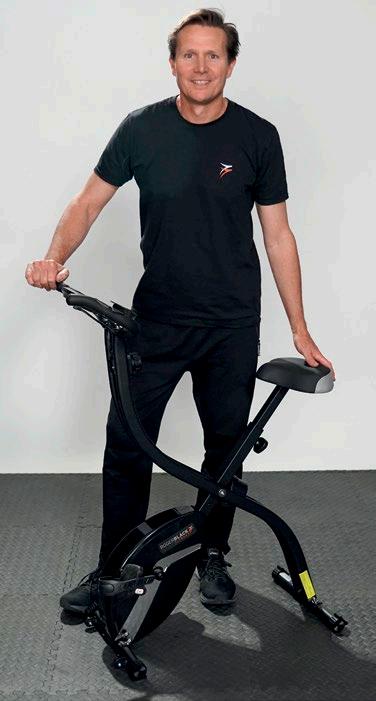

4.5
Dr Max muses on how sending handwritten letters can help your health
Pen To Paper
Iknow it might sound a bit old-fashioned, but I’m a great believer in the power of letters. There’s something unique and special about handwritten things. Yet the letter has rather fallen out of vogue, not helped of course by the recent Royal Mail strikes, and been superseded by faster forms of communication like emails or texts. But that misses the point of the letter. It’s not to convey urgent news. You write an email because there’s something you need to know. But you write a letter because there’s something you want to say.
There’s also a subtler aspect to the letter. It’s a powerful and memorable way to touch the ones you care about. People keep letters for years. When my gran died and I cleared her house, I found hundreds of letters and cards she had kept, and

Max is a hospital doctor, author and columnist. He currently works full time in mental health for the NHS. His new book, The Marvellous Adventure of Being Human, is out now
they told the story of her relationships. There were letters from her mother—my great grandmother—who died long before I was born, but sitting reading them one rainy afternoon, her words stretched out across the vista of time and I felt I knew her. I have kept and cherished them.
There’s also a real power in writing handwritten letters. It’s better than mindfulness. It forces you to concentrate and think of interesting and positive things that have happened in your life. Psychological studies have shown that putting pen to paper and writing a letter—as outdated as this sounds—has superior benefits to a text or email. It takes longer and requires more thought, which demands the person to give sustained focus on the positive while they write. Psychologists have also argued that as mistakes are harder to correct than on text or email, you have to be more deliberate and thoughtful. Most of all, receiving a letter is such a lovely surprise. It can enrich a relationship and allow it to grow and
52 • MARCH 2023 HEALTH

flourish. Be bold and write to someone you maybe don’t know that well. Who knows where it will lead?
When I was about 12 years old, my friends and I decided that we wanted a pet mouse. The pet shop wouldn’t sell us one until we had a letter from a parent, so, having the neatest handwriting, I forged one. My deception quickly unravelled and all hell broke loose.
My mum felt that the punishment should fit the crime, so she made me write letters to a few randomly selected relatives. One of them was my uncle who I’d only met a few times when I was a toddler. I wrote a long letter detailing my life and listing my interests.
My punishment complete, I forgot about this until I suddenly got a reply from him. “How lovely to hear from you,” he said, and went on to tell me all about his life. He’d love to hear about what subjects at school I enjoyed. And so started a
correspondence that went on for several years.
He turned out to be the most fascinating man. Then out of the blue, he died. My mum took the phone call and was distraught as they had not really spoken for years.
I went upstairs and produced a box of letters, the last one being from just a few days before he had passed. She consoled herself reading them and knowing that although she hadn’t been in touch, I had grown close to him by writing to him. In fact, I then became close to his wife, who I also wrote to for many years.
I often think about how that one naughty childhood transgression led to such an enriching correspondence that stretched on for many years. It encouraged me to write to lots of other people in fact, and it’s something I keep up with to this day. So, I’d encourage you to put pen to paper and see where it leads. What have you got to lose? n
MARCH 2023 • 53
The Doctor Is In
Dr Max Pemberton
Q: Dear Dr Max, I’m hoping you can give me some advice. I have been advised to reduce my cholesterol, but how? I’m not especially overweight, I try to eat healthy and I already do regular exercise. How else can I reduce my cholesterol? Are there any particular foods that may seem healthy but actually should be avoided?
- Jan
A: Dear Jan,
This is such a good question and one that lots of people want to know about because high cholesterol, unfortunately, is very common. High cholesterol can be caused by a number of things, from lifestyle and dietary factors that can be changed, to age and genetics that can’t. It’s always worthwhile trying to make the changes necessary to see if this improves things. The first is avoiding foods that are high in saturated fat. These include pastry, processed meat, butter and cream. Instead, try to substitute in other foods that are high in unsaturated fat, such as vegetable oil, nuts,
seeds and oily fish. Some foods contain cholesterol, like eggs and some shellfish like prawns and crabs, but are low in saturated fat and so are still OK to eat. Eating food high in fibre can also help to actively reduce your cholesterol, so make sure you’re having at least five portions of fruit and vegetables a day and eat things like pulses and wholegrain food. Oats and barley are particularly good at helping to reduce cholesterol. Other lifestyle factors include making sure you do enough exercise, stopping smoking and reducing your drinking, as this helps the liver to process the bad cholesterol. There is more information about lifestyle changes and cholesterol on the British Heart Foundation website (bhf.org.uk). Making these changes will benefit your overall health too. It’s incredibly important to get your cholesterol checked regularly and take action if it is high, as high cholesterol is a major risk factor for strokes and heart attacks. n

Got a health question for our resident doctor?
Email it confidentially to askdrmax@readersdigest.co.uk
HEALTH
illustration by Javier Muñoz 54 • MARCH 2023


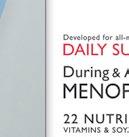






UK 's No.1 Menopause supplement * Menopace® Original contains 22 nutrients, including Vitamin B6 which contributes to the regulation of hormonal activity and the reduction of tiredness and fatigue. *Nielsen GB ScanTrack Total Coverage Value & Unit Retail Sales 52 w/e 08/10/22. UK's No1. Menopause brand. To verify contact Vitabiotics Ltd, 1 Apsley Way, London NW2 7HF. From , Superdrug, Holland & Barrett, supermarkets, chemists, health stores & menopace.com Gabby Logan Photography: David Venni / Chilli Media * “I'm wholly embracing my midpoint in life. With the changes life throws at me, I’m glad I can rely on Menopace ”
Put A Name To That Face!
Ageing brains need new “people skills”, says our memory expert, Jonathan Hancock
When I started secondary school, aged 11, I found myself in a class with only two children I’d met before. But I soon got to know everyone. In fact, before the end of the day one I knew all 28 of my new classmates by heart.
Even in my thirties, when I found myself back in school as a teacher, I could still learn all the students in my classes with relative ease.
How things have changed! These days, in my fifties, if I meet just two or three new people in one day, then see them again the next, I can almost hear my brain whirring as it struggles to match faces and names.
I’m still good at recognising faces, though. And names always seem familiar when I hear them again. But it’s definitely getting harder to retrieve both bits of someone’s identity.
Reassuringly, research suggests that I’m not alone. Scientists have now identified a particular enzyme— PDE11A—that builds up with age and hampers what’s called “social associative” memory. Over time, it seems to loosen the all-important
links between what people look like, and who they are.
So, one day, there may be a medical remedy. But here are three quick memory techniques that help me.
1
Pay attention. Remembering people starts with listening to what they’re called, and taking a proper look at their face. I make a point of repeating their name in my head, and silently saying something to myself about their appearance.
2
Spot similarities. It’s always good to connect new information with things you already know. So, who does this person look like? Do they share a name with a celebrity? Is there anything about them that reminds you of places, events or experiences you’ve already got filed away?
3
Get creative. Playing almost any mental game with someone’s name and face will help to link them in your memory. My favourite uses initial letters to build connections—“Rosy-cheeked Rita,” or “Beanpole Ben.”
The key thing is to get your “social associative” memory going—and these tips might just give your ageing memory the nudge it needs. n
56 • MARCH 2023 HEALTH



Call us FREE for an instant quote - It’s easy! 0808 196 2118 Friendly UK based team waiting to help you Travel Insurance with No Age Limits! Goodtogoinsurance.com is a trading name of Ancile Insurance Group Limited. Authorised & Regulated by the Financial Conduct Authority - No. 471641. *Discount applies to base premium only and not to any medical screening premiums or optional extras. Discount valid until 30 Jun 2023. 24 Hour Medical Emergency Support Cover for Covid-19 Cover for Cruise Holidays Experts in Cover for Medical Conditions Excellent 20% OFF SPECIAL OFFER FOR READERS DIGEST BASE PREMIUM Quote code read20 *
Should You Break Up With A Friend?
Iwas dumped by my high school best friend during my first year of university. Turns out, our friendship didn’t magically weather the changes that came with moving to the next stage of life. If it was going to survive, both of us needed to work for it.
On my part, I did try—however clumsily. But, she told me pointblank, it just wasn’t working for her and she wasn’t willing to do the same. Reader, it hurt more than any of my romantic breakups.

Monica Karpinski is a writer and editor focused on women’s health, sex, and relationships. She is the founder of women’s health media platform The Femedic
There’s a cruel and specific pain that comes with friend split-ups. It’s a rejection that’s somehow more personal and slices deeper, like a paper cut exactly where your fingers bend.
That’s because with friends, the stakes are purely personal.
Friendships don’t have the same formal structure nor call for the same commitment as with a partner or family; you enter into friendships voluntarily, simply because you like each other.
Maybe this is why we believe (or hope) that our friends will always stick around. If the relationship carries fewer expectations, surely there’s less risk it will break down?
But for many, especially as fewer folks are following the traditional path of marriage and children, friendships are critical relationships in our lives. This means that the same issues that drive couples apart—communication issues, betrayals of trust—can also crop up between pals.
58 • MARCH 2023 DATING & RELATIONSHIPS
And yet, we don’t really have a playbook for what to do when these relationships go south.
Some friendships naturally end and can be moved on from easily. A 2012 study published in The Sociological Review sees these as “simple friendships”, who are people we hang out with for fun. These connections might organically fizzle out as contact dwindles and your lives change.
Friendships are critical but the same issues that drive couples apart can occur between pals
But for others who we have more meaningful ties with (which the study calls “complex friendships”), the ambiguity around friendship can make it tricky to figure out when they’ve crossed the line.
For example, is it fair to be annoyed with a friend because they haven’t spoken to you in a few months? What if they don’t include you in an important life decision of theirs?
There’s no social script for coping with quandaries like these. But for guidance, we can look to the foundations of what makes a healthy relationship: trust, good communication, and being able to be vulnerable with each other.
If a friend oversteps your boundaries and these pillars become
shaky, I’d say it’s a fair reason to reevaluate their place in your life. I once had a friend who used to constantly text and call me, to the point where it got really stressful. I felt like I was always having to answer and be available to them whenever they needed me.
One day, I decided to just not reply—and they turned up at my flat unannounced. This was the final straw and I told them to stop contacting me. A friendship should add something to your life rather than take from it, and they’d taken enough.
In situations like these, where you need to disentangle someone from your life and draw a clear line between you, a formal breakup might be necessary.
Your choice of words and method (phone, email, in-person?) will hinge on the extent of their offences, but in my experience as both friend dumpee and dumper, it’s best to be as clear and neutral as possible.
The aim of this conversation is to communicate your boundaries, not to start any new drama. You’re simply letting them know what’s going to happen next—and no matter how they react, you’re going to do what’s best for you. n
MARCH 2023 • 59
Relationship Advice
Monica Karpinski
Q: I divorced my husband a year ago and am re-entering the dating pool in my late fifties. But the trouble is that I’ve completely forgotten how to flirt, especially in online dating! Can you help? - Philippa
A: I’ve got good news for you—flirting is mostly confidence. According to research by psychologist Dr Monica Moore, the most successful flirters are those who give off an air of confidence and availability.
Confidence gives the message that you view yourself in a positive light, which can help others to see you in that way, too. And if you’re also giving cues that you’re interested in them— like making eye contact and smiling— this can open up the door for you to connect. However, feeling self-assured is easier said than done, especially if you haven’t dated in a while. Here, it might help to see flirting as being about engaging the other person, rather than how you’re coming across to them.
If you focus your energy on enjoying their company, rather than mentally scrutinising yourself at every step, you can distract yourself from any selfcritical thoughts that are cramping
your style. Confidence really just means that you’re comfortable being yourself. You don’t need to bat your eyelids or force the moment—just do what comes naturally. Plus, this way your suitors will get to know the real you, which is as good a start to a relationship as it gets.
These core principles stand when flirting via online dating, but this is a different beast. Initially, you’ve only got text messages to go off, so try to keep things light and fun. Be open and share some details about your day, and ask questions about theirs. Don’t be afraid to use emojis!
Ideally, the spark between you will build to the point where you arrange to explore things further, say by speaking on the phone or meeting up in person.
A lot of people fear flirting because they’re scared of rejection, but taking this risk is part and parcel of forming relationships. The only way to avoid it is to never connect with anyone new, ever—which won’t get you far if you’re seeking a partner. n
Got a question for our resident sex and relationships expert? Email it confidentially to thelovedoctor@readersdigest.co.uk
60 • MARCH 2023 DATING & RELATIONSHIPS

Figurehead of the Romantic movement, human rights activist, man of letters and action, 19th-century writer Victor Hugo was also a great lover of music.
Here, Vialma, the streaming service for classical and jazz, uncovers Hugo’s fascination with music and the love that musicians and composers had for the author of Les Miserables.
The first musical setting of Notre-Dame de Paris
The historical novel Notre-Dame de Paris was Victor Hugo’s masterpiece. Imagine Paris in the tumultuous 1830s. Notre-Dame, battered by the centuries, abandoned to vandalism and indifference was saved from ruin by Hugo. By making the old cathedral the protagonist of his novel, he raised awareness and helped to save it from destruction. A true plea for Gothic art, his work allowed the entire nation to reconcile itself with its heritage and its roots - and it also inspired an opera. ‘La Esmeralda’ was created in 1836 by Louise Bertin, with the enthusiastic collaboration of Hugo, who himself wrote the libretto.
‘La Esmeralda’ was created in 1836 by Louise Bertin, with the enthusiastic collaboration of Hugo, who himself wrote the libretto. Victor Hugo has been ‘translated’ into music. Today, there are almost 50 operas adapted from Hugo’s works. His poem ‘Les Orientales’ inspired Berlioz’s ‘La Captive’ and Liszt’s ‘Mazeppa’, and many others have taken up Hugo’s work over the decades, including Saint-Saëns, Gounod, Massenet, Franck and Fauré. Additionally, Les Misérables is the most performed Broadway musical in the history of the genre. George Brassens, the Disney studios... Hugo crosses and illuminates all areas of music.
Want to find out more?
On Vialma, the multimedia streaming platform for classical and jazz, you can dive deeper than ever into the intertwined worlds of music and literature. Start your journey by signing up to our special £1 for 3 months offer today visit https://email.vialma.com/en-readers-digest-3mo1

Isle Of Barra My Britain:
BY Alice Gawthrop
At first glance you might think you’re looking at a rock in the middle of the Atlantic, but on closer inspection you’ll find a vibrant island community, a water sport heaven and breathtaking natural scenery
62
An aeroplane landing on the unusual Barra Airport, Scotland
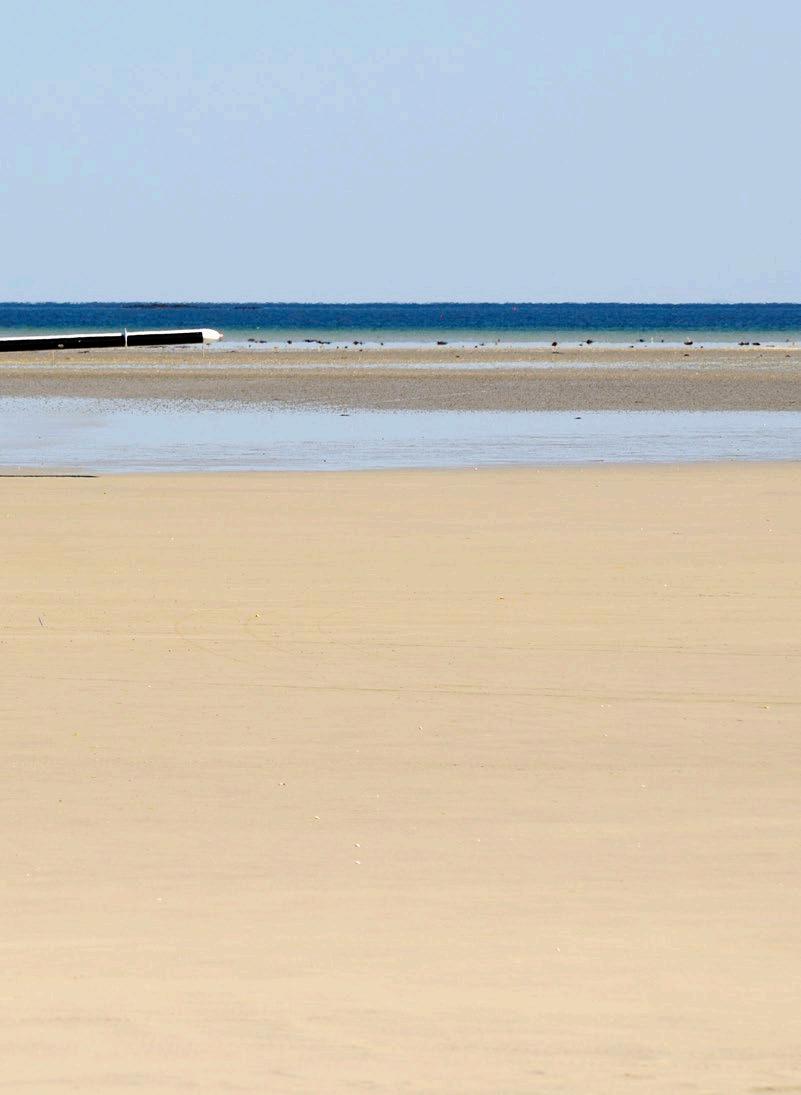
The Isle of Barra is the most southerly inhabited island in the Outer Hebrides. It can be reached by sea or by air, and if you choose the latter you’ll be treated to one of the more unusual plane landings around the world. The runway for the island’s only airport is on a beach, and vanishes under the waves during high tide. It was voted the world’s most scenic landing spot in 2011.
Barra is home to a crofting culture that is particular to the Scottish Highlands and the islands of Scotland. The island has had human inhabitants since the Neolithic era, but it remains a place of raw natural beauty. From the white sandy beaches on the north side of the island to the rocky inlets on the southeast side, it’s known as one of the most beautiful islands in Britain.
INSPIRE
MARGARET ANNE ELDER
Margaret is the owner of Herring Girl Knitwear, a knitwear brand inspired by the women who travelled along the coast of the United Kingdom following herring as they migrated throughout the year
herringgirlcollection.com
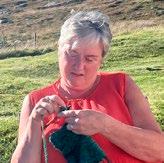
I was brought up between Barra and Fort William. That happened quite a lot in my generation because there were fewer education opportunities here. The majority of my family was born in the 1960s on Barra and then came back in the 1980s and 1990s, because it wasn’t as isolated as it used to be so we could bring our children up here.
I went to Fort William for school. Once I had my family I brought them back to Barra. It was possible for my husband and I to work on our croft, which is a small bit of land tenure that’s passed down through generations. I always knew I would come back to Barra, it was just a matter of when the time was right.
I live in a village called Bruernish, and my grandparents came from here, too. The cultural heritage and family ties pulled me back. It’s a unique way of life with a rich history. There’s a sense of legacy, too, as the crofts go from generation to generation, so I have to think

about who I’m going to give it to next.
Crofters have a unique lifestyle and nobody else knows we exist. All the local businesses have a sense of community and most of us are based on our crofts. We’re moving with the times but still staying here and bringing up our families here. We’re staying grounded in our natural environment and the skills that have been passed down through generations.
Herring Girl Knitwear was inspired by the herring girls, who long before the suffragettes were going out and following shoals of herring throughout the British Isles. In fact, my granny was a herring girl and she’d be travelling all around Britain, going up to the Shetlands and back down through Scotland. While they were at sea, the herring
MY BRITAIN: ISLE OF BARRA 64 • MARCH 2023
(Left and below) The Herring


girls would knit guernseys for the fishermen. These were really important because each port had its own pattern, so if a person was lost at sea, you’d know which port they came from.
I was really inspired by this history, and I came up with the idea of Herring Girl Knitwear because not everyone can afford these jumpers but everyone wants a little bit of home. I took the traditional patterns and developed smaller items, like hats and cowls. When people order a piece, I ask what port they’re affiliated with and we’ll give them a little bit of history about the port, because each port has its own story.
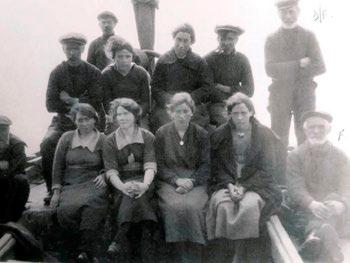
We tailor the design to the traditional pattern of the port. It really ties into the history of the island.
My favourite spot on the island is Eoligarry. It’s a village with lovely beaches that I love to visit for inspiration. I take a lot of the colours in my work from the sea, so Herring Girl Knitwear is really connected to the island, both in terms of the historical background and the connection to raw nature.
MARCH 2023 • 65
Girls: Margaret Anne's Granny is in the middle right, bottom row
MAIRI VOINOT
Mairi is the tourism development officer at Bùth Bharraigh, a shop and visitor information centre in Castlebay, Barra
buthbharraigh.co.uk
I moved to Barra with my family (husband, baby and dog) in March 2022 after getting a job at Bùth Bharraigh in November 2021. I am originally from Lochgilphead in Argyll. I moved to Benbecula for university, where I met my husband. We moved to Glasgow to pursue our careers as musicians, however, just before COVID, I got my master's degree in International Tourism and Events Management.

When Covid hit and we lost our music work, we talked about how our pipeline dream was to move back to the islands. We saw this post advertised and applied thinking it would never happen, but I got the job and we managed to move back to the islands! When we first came to Barra, we just loved it from the start. The beaches, the views and the community make this island so
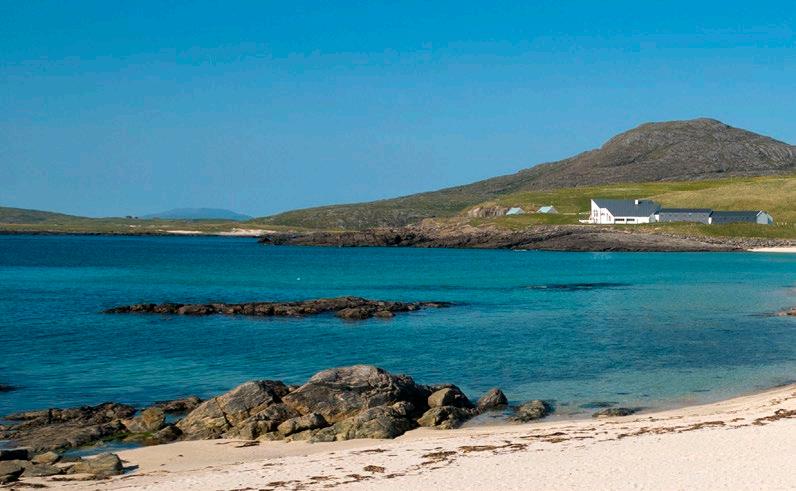
MY BRITAIN: ISLE OF BARRA
Tangasdale beach
amazing to live on and raise our son. There are so many reasons why working at Bùth Bharraigh is special. Bùth Bharraigh is a community retail and visitor hub in the heart of Castlebay. We are a social enterprise that helps our community flourish by providing a range of goods and services. We act as a point of contact for many people on the island, especially through the winter months when other services on the island are closed. This helps to combat social isolation.
The community out here has been so welcoming to us moving up. Working at Bùth Bharraigh, many members of the community come in regularly to meet and talk to us and other locals. Due to this, we have started offering free language cafés
and craft ceilidhs, where people can come along and learn new skills. The warm community is a large aspect of why I love living on the island.
My favourite spot on the island is Tangasdale beach. It’s a short walk through the field, and over the dunes in the shelter before the wind and waves from the Atlantic hit you. This beach is a lovely place to come and feel the power of the sea.


VINCENT LOWE / ALAMY STOCK PHOTO READER’S DIGEST
67
Bùth Bharraigh
CHRIS DENEHY
Chris is the owner of Isle of Barra Surf and Coastal Adventures, offering a range of water sports including kayaking and paddleboarding barrasurfadventures.co.uk
I’ve lived on Barra Island since 2001. My wife is from the island, so we moved here together. I love summertime on the island; it’s absolutely stunning. Beautiful clear seas, beaches, islands, amazing
wildlife. It keeps going. Especially for my business, summer is just absolutely amazing here.
There’s definitely a Barra Island spirit. It’s such a small island, there’s a really strong sense of community. Everyone knows everyone in some form. Being so remote creates a strong community spirit.
The island is perfect for Isle of Barra Surf and Coastal Adventures. There aren’t many better places for water sports! You can surf on the west coast, you’ve got sheltered kayaking on the east coast. It’s very quiet—you can go to some islands

70 • MARCH 2023 MY BRITAIN: ISLE OF BARRA
and you won’t see anybody. For water sports it’s just unbelievable. Most of our visitors are from mainland Scotland or England, a few from the continent, too.
My favourite spot on the island is technically not actually on the island. It’s the Sound of Barra, which lies just to the north between Barra and South Uist. For sea kayaking it’s stunning. The waters are really shallow and incredibly clear. And again, the wildlife is amazing. You have seals, eagles, dolphins, the list goes on. It's absolutely stunning. n


READER’S DIGEST 69
If I Ruled
The World
Glen Matlock

Glen Matlock is the former Sex Pistol who has gone on to become a well-travelled solo musician, as well as play with the likes of Blondie, Iggy Pop and Primal Scream
In an ideal world, everyone would have a little Tannoy system that plays them “Zip-a-Dee-Doo-Dah”, whatever the weather. When I was a kid, I used to be whisked off to Butlin’s on my holidays with my mum and dad, which was kind of alright, looking back. In the mornings they used to wake you up for breakfast, if it was sunny, by playing “Zip-a-Dee-Doo-Dah” on the Tannoy, but if it was raining then they’d just give you breakfast. If it was played to you whatever the
weather, it would just put you on the right foot.
A&R people would have to practise ways of saying “no” pleasantly. If they’re not interested, they would just say that and not keep you waiting around for years. I think one of the best inventions for mankind is the mobile phone, because it’s saved me a lot of time—no longer waiting in all day for a phone call that never comes and instead being able to go out and have a coffee and wait for a phone call that never comes. If everyone learned to say “no” nicely in a timely fashion, then everyone would know where they stood.
I would go back somehow and never do Brexit in the first place.
I think it’s the most stupid, boneheaded thing that has ever happened to this country. Losing my
70
• MARCH 2023
©TINA K
freedom of movement in Europe is like losing my left arm. I’m livid and I see no benefit to it whatsoever, apart from a few self-entitled toerags who got their hands in the till. My concern is that I’m 66 and it will be undone, but will it be undone in my lifetime? I don’t know.
Hands-free on mobile phones in public would be banned. They tend to be only used like that by the more inconsiderate people in the populace who tend to shout a lot and I wish they didn’t. People can’t hear what you’re saying when they’re wearing earphones and talking, so they just shout louder. I’ve got a way round that, because if I’m sitting in a café and somebody does that to me, I dig out “What a Mouth” by Tommy Steele and with that they soon get the message.
Everybody would have to travel. They would find out that people everywhere are pretty much the same, which is what I’ve found. All people want is to be able to put some food on the table, have a few bob in their pocket, look after their family and be able to let off steam without too much of a hindrance. When people don’t travel, they don’t realise that, and you end up with stupidities like Brexit and wars. Just before lockdown, I played gigs in the Demilitarised Zone (DMZ) in Korea and in Palestine and the people in
both places were lovely. I’m really proud that I did that.
I would have a footman come with me on my travels and it would actually be Harry Secombe. He would be outside my window and he would play “If I Ruled the World”, and he would have to wear his outfit that he wears in Oliver!. If I ruled the world, somehow I’d be able to have that, surely? Then, when he’s not singing, he can feed me a few stories of what it was like being in the Goons with Spike Milligan, Peter Sellers and Michael Bentine.
Everyone would listen to my new album and then form their own opinion. Either side of and during the lockdowns I made a new record. It’s coming out on Cooking Vinyl and I’m really proud of it. The most galling thing for a musician is when you do something, then a couple of years later you play a song from it at a gig and someone asks you where it’s from and when you tell them they say, “I never knew you’d put one out”. If I ruled the world, that definitely wouldn’t happen anymore. n
AS TOLD TO IAN CHADDOCK
Glen Matlock’s new single “Head on a Stick” is out now and the solo album Consequences Coming will be released on April 27, 2023 on Cooking Vinyl, with tour dates as the touring bassist for Blondie to follow
MARCH 2023 • 71 INSPIRE

INSPIRE
For my mother, caring for my dad was filled with challenges—and triumphs. My family’s journey has lessons for all of us
Caregiver TheAccidental
by Kimberly Fraser from The Acciden TA l cA regiver
My earliest exposure to family caregiving was personal. In December 1980, during my first term at nursing school, my father, Don Polley, was diagnosed with primary progressive MS. Dad was 43 and Mum was 41. Their lives changed forever. Our lives changed forever. About 12 years after my dad’s diagnosis, my mother, Myrna, had to retire from nursing much sooner than she’d planned to become his caregiver at their home in Nova Scotia, Canada.
Illustration by Holly Stapleton
MARCH 2023 • 73
Far less was known about multiple sclerosis at the time, and fewer drugs and interventions were available for symptom management. The condition becomes debilitating over time, but the speed and severity of the disease are different in everybody.
Dad quickly went from his full-time work as a manager at the Nova Scotia Department of Mines and Energy to part-time, until he was fully retired and on a disability pension at 46. Still, he stayed involved with his communityservice work, reading his post and watching stocks and bonds. He even took his stockbroker course, but couldn’t write the test because his mind wasn’t as sharp or as quick as it had been.
Over time, he progressed from crutches to a wheelchair. Being in the wheelchair affected his social and community life, and with his general deterioration came fatigue and decreased muscle tone. When his speech was affected, he found it increasingly difficult to hold his head upright without support. Ultimately, he stopped participating in his service clubs and church. It was a sad and significant marker of the effect the disease was having on his life.
Mum and Dad had a solid marriage. They respected each other and showed love and affection openly. They also had no problem saying when they were upset about something, though they very rarely directed it at the other.
My mother was a strong woman, but the life she had enjoyed during the first 20 years of marriage was long gone. As is the case with many family caregivers, Mum’s health was affected by its demands. In addition to developing high blood pressure during her time caring for Dad, she often experienced stomach upset and sheer exhaustion.
“It’s hard,” she often said. “It’s not the life we imagined. He’s not the husband I married.” Their life changed dramatically as a new reality set in. She obtained whatever care and equipment Dad needed, learned new skills and advocated for Dad. Mum was pragmatic. A doer. She faced caregiving head-on. There was no alternative.
WE STILL DON’T know enough about MS. This disease of the central nervous system, which disrupts the flow of information within the brain and between the brain and the body, is unpredictable. Unfortunately, Dad’s health deteriorated rapidly.
My father was never confused, but he couldn’t think or process information as fast as he used to. He grew to rely on clichés, which drove Mum nuts. I remember walking into the den on one of my visits home—I had moved to another province soon after graduating from university. Dad was sitting in his dark blue recliner rocker, next to a steel pole my brother had drilled into the floor and the ceiling. Dad hung on to it as he manoeuvred from his wheelchair to
74 • MARCH 2023 THE ACCIDENTAL CAREGIVER
his recliner. He used it to pull himself up if he needed to reach something or take pressure off his back and bottom as he changed positions.
I swung myself around his pole as I reached down to give him a hug and a kiss. “What’s new? How are you?”
“Oh, you know, dear, the same. They treat me like a mushroom around here. They keep me in the dark.” He chuckled, proud of his wit.
As I walked back through the kitchen, I stopped to hug Mum. She rolled her brown eyes and shook her head. “I heard your father and those damn clichés! He just can’t help
boomers, the problem will only grow. In North America it is estimated that 46 per cent of people over 15 years of age have provided care, at some point.
I’ll never forget the day of Mum’s big confession. It was about seven years after Dad’s diagnosis, around the time she retired to take care of him fulltime. “What you kids and everybody else see on the outside is not what I really feel,” she told me. “Inside I’m a seething b***h.” I was shocked that she said it with such conviction. I didn’t have a clue how to respond.
My mother could be quite funny, or at least she used to be. She was smart,
DAD’S DIAGNOSIS HAD RIPPED THE LIFE MY PARENTS HAD PLANNED RIGHT OUT FROM UNDER THEM
himself.” She paused before continuing. “He either says that he’s just like a mushroom, call a spade a spade, or you’ve seen one, you’ve seen them all.”
She took a deep breath and laughed. “Goodness,” she said. “I’m going to dive off the deep end.”
“Mum, I don’t know how to tell you this, but ‘dive off the deep end’ is a cliché.” We both cracked up.
THERE IS A caregiving crisis around the world. Compounded by a demographic shift with ageing
compassionate and, to me, the consummate caregiver. Always sharp-witted and honest, she told me that she couldn’t fully embrace the b***h thing or she might be gone forever.
I knew what she meant. Dad’s diagnosis had ripped the life my parents had planned right out from under them. How could she not feel anger and resentment? And yet she believed that if she let that bitterness take over, she wouldn’t be able to go on and live the life they had now—the new normal.
MARCH 2023 • 75 READER’S DIGEST

My parents still found joy in some of the old habits, like watching their favourite TV shows together and eating meals they loved. Many people take comfort in the familiar. Indeed, that’s a big part of learning how to cope: understanding that, while so many things have changed, not everything has. This is as true for relationships as it is for routines.
Dad was never demanding. Thankfully, he never became nasty or difficult, or had personality changes, traits that sometimes affect people with MS. For that, I often said a prayer of thanks.
My father loved and appreciated everything Mum ever did for him, no matter how big or small. And she was never angry at Dad, just at the tragic, horrid circumstances caused by a
The family in the mid-1970s; Kimberly is second from the right
chronic, life-limiting illness. Mum was mad as hell that her handsome, strong, capable husband got one of the worst, most debilitating and often familydestroying diseases of the 20th century. There was no cure, and for Dad, there was little treatment.
It was unbelievable to us kids that our family's future was no longer what we’d had in mind. Dad’s life was taken from him and Mum’s from her. Dad comes from a family of long-lived people, and MS doesn’t kill you in and of itself (the patient usually dies of some other cause or complication, rather than the disease). So Mum knew she was in for a life sentence.
Caregiving exacts a toll. Mum was angry at the world, but there was a lot of love sprinkled in. Through the 21 years of caregiving for Dad, there was
76 • MARCH 2023 THE ACCIDENTAL CAREGIVER
laughter, as well as weddings and babies. There were wonderful outside caregivers, and there were those who didn’t seem to care much at all. There were system obstacles—lots of them— to overcome. Without love, I’m not sure what would have happened to us. We were in it for the long haul. There was no escape.
The flipside of all the sadness, burden and frustration is that most caregivers, like my mum, wouldn’t give up their role for any reason. Citing love and a compulsion to care for their loved one, they say, “If not me, then who?” Caregivers want to give, to help, to be there. Good thing too, because the role is all-consuming— physically, spiritually and emotionally. It is unreal. It is real. It is pain and suffering, love and courage. It is also life in its every breath.
If I had to sum up what I observed about my mother’s caregiving, I would call it “resilience in action.” Her behaviours were part of what makes a caregiver resilient—knowing and setting her own boundaries, being aware of her sense of self, not being a martyr. Mum would remind Dad that she was up with him at night, for example. Or tell him when he was fine to wait for her for a time, that everything wasn’t always such an emergency that she had to stop what she was doing and run to him.
A non-resilient caregiver might not view things the same way. They might jump to conclusions, such as telling
themselves they are a failure, that they should do more, that they need to sleep in the same room as the person they care for, even if it means doing so in a chair.
Mum told Dad that she had things she needed to do for herself: time in the morning to shower, have a coffee, read the paper or run errands. She was action-oriented and recognised that in order to get everything done, she had to get up at 6am. She needed some time for herself—and for her, it was those few moments of quiet in the morning before tackling the day.
OUR FAMILY MEALS went from lots of conversation and laughing to no laughing—only because Dad would laugh and start choking on his food or his saliva, so we had to be mindful. In the later years, taking two hours to feed Dad his supper was the norm.
Over time, Mum accepted some outside help. It wasn’t a lot of time— two hours each morning—but it got Dad ready for the day. Ultimately he even required feeding, which the paid caregivers began to do.
Gradually, Mum had to take over the feeding because they could no longer feed him without causing him to choke. Most of them either couldn’t or didn’t give Dad the time to eat that he needed. Dad was worsening, and eventually it became near impossible for Mum to get much food into him.
“Kimmie, I don’t know how much longer I can keep this up,” she told me
MARCH 2023 • 77 READER’S DIGEST

one day. “He takes so long to chew that he’s falling asleep with food in his mouth. He chokes and chokes. I don’t know what I should do. If I don’t feed him, he’ll die, but I can’t just sit by and watch that.”
I asked, “Did you talk to him about it?”
“No. What’s the point? The next thing is a feeding tube, and I don’t think he’d want that.”
Not many people in Dad’s condition would have been fed so well. In fact, our family doctor often said, “Myrna, the only reason Donnie is still alive is because of love and the good nutrition you give him.”
Now I knew that she couldn’t go on as they were, and neither could Dad. I approached the side of Dad’s bed and asked, “Dad, you hear what Mum and I are talking about in the kitchen, right?”
He nodded as best he could, looking straight at me. He could no longer speak but he certainly understood us, so we always included him in our conversations.
“We just need to know what you want Mum to do,” I said. “We know it’s hard on you, choking on every meal. We need to know what you want. We can place a feeding tube in your stomach.”
He mouthed a definite “No,” then shook his head.
I nodded and replied, “OK, then. That’s what Mum and I thought you would say.”
It wasn’t too long after this conversation that Dad died. He got progressively worse, dependent on Mum for everything. She never received more than two hours of help per day, but during the last few weeks
78 • MARCH 2023 THE ACCIDENTAL CAREGIVER
The author’s parents at their surprise anniversary party in 1985
A family wedding in 1997
the nurse case manager checked in with Mum more often. Our plan was that Dad would die at home.
One day Mum called to say that Dad was failing and it wouldn’t be long. I booked the earliest flight I could for myself, my husband and our one-yearold. That night, as I was packing and making arrangements, Mum held the phone to Dad’s ear so I could say goodbye. I was crying and told him that if he couldn’t wait for me, it was OK. My sister who lived in the United States was also flying in, but my sister and brother who lived near my parents were with them. A few close friends and other family, including our grandmother—Dad’s mother—visited throughout that day and evening. Dad died at home at 9:30 in the morning on May 16, 2001, about the time our plane was landing. He had most of his family around him and was as comfortable as possible. He was 64. Through the years of looking after Dad, there were few, if any, signposts. Getting help at decision points was challenging, and finding our way was often a matter of trial and error. Knowing what choices were available in certain situations would have been helpful, as well as understanding how various options might impact the trajectory of Dad’s life, or affect Mum as his caregiver.
Having someone, like a caregiver coach or navigator, would have helped. Mum was left to her own devices when it came to finding the necessary
equipment and supplies. Every time Dad deteriorated or faced a new phase with his MS, we would be confronted with new decisions to make. Unfortunately, all too often caregivers feel frustrated, short on time and energy and even demoralised. They learn that putting one foot in front of the other is the only way to continue to progress.
No one could have done more for my father during his years of illness than my mother. What I witnessed informed my world view of family caregivers. They do whatever it takes for their loved ones—no matter what, regardless of the circumstances or difficulty. They put the care and the caregiving for the other above their own needs—usually because no one else will; perhaps no one else can. And it’s why I know that caregivers deserve help, support, respite and attention.
I hope I can measure up when it’s my turn to care. Because one thing I know for sure is that we—myself, my siblings, my friends—will all be called to care. n
Kimberly Fraser, PhD, is a retired nurse and former professor of nursing at the University of Alberta. She also ran a home healthcare business and is the past president of the non-profit Caregivers Alberta
EXCERPTED FROM THE ACCIDENTAL CAREGIVER, BY DR. KIMBERLY FRASER. COPYRIGHT © 2022, DR. KIMBERLY FRASER. PUBLISHED BY SUTHERLAND HOUSE BOOKS. REPRODUCED BY ARRANGEMENT WITH THE PUBLISHER. ALL RIGHTS RESERVED
READER’S DIGEST MARCH 2023 • 79

MEET THE
PA IMAGES / ALAMY STOCK PHOTO

A strong backroom entourage forms the backbone to all great athletes and teams. Yet their unheralded talents often go uncredited. It’s time to put some names to the marginal gains
BY Alexis James
1% CLUB
INSPIRE 81
When pioneering coach David Brailsford led British Cycling through an unprecedented golden era at the Beijing and London Olympics, he famously credited Team GB’s success to a concept he called “marginal gains”.
He outlined this process as striving to improve every element of riding a bike by one per cent. These tiny advancements would, when accumulated together, result in a noticeable increase in performance that could—and often did—prove the difference between silver and gold.
Crucially, Brailsford believed that nothing should be off limits to the marginal gains treatment. That meant that as well as focusing on fitness, strength, and aerodynamics, Brailsford had a view on everything from the pillows his athletes should sleep on to how they should wash their hands. What may sound a little intrusive to the rest of us was widely seen within sport as an act of genius. It has since become a blueprint for other elite athletes to follow. But doing so needs more than a visionary coach. It requires an entourage of specialists in every field. Here, we wander into sport’s shadows to speak to the unsung heroes of the one per cent club.
The Nutritionist
As well as being a sports nutritionist at Crystal Palace Football Club, Kate Shilland’s client list reads like day one of an Olympics programme. Among her regulars are swimmers, triathletes, ultra-runners, rugby players, and boxers. In 2021, Kate was also part of tennis star Emma Raducanu’s team ahead of the teenager’s incredible breakthrough US Open success.
Kate thrives on the variety, with each new sport providing new challenges and a renewed appreciation of her chosen field of expertise. “You have to understand nutrition and understand people, and then you can work in any sport,” she says. “In tennis you must learn to be reactive, because you've no idea how long the match is going to last. Whereas football, it's 90 minutes so you know what you're fuelling for.”
Regardless of the sport, Kate’s ethos remains the same: any athlete failing to respect nutrition is one who is failing
82 • MARCH 2023 MEET THE 1% CLUB

to fulfil their potential. “It is a key part of the training process. It’s not just something that you wing,” says Kate. She advises her athletes to hold nutrition in the same regard as they do their most crucial bit of equipment. “Just as you wouldn’t forget to put your shin pads or your boots in your kit bag, don’t forget to put in your drink and your snack. That informs how well you train. Because you can’t get out if you haven’t put in."
Nutritionists are sometimes unfairly portrayed as militant types dictating what athletes can and can’t eat. But while Kate admits that fighting misinformation is part of the job (“I feel like you’re always battling a fad"), she insists that when is more important than what. “It’s about
when’s the right time, and the right amount to have it in,” she says, using the example of a Rice Krispies cereal bar. It may not be recommended as a rugby or football player’s daily snack, but its high sugar content means that it would actually make an effective half-time option.
It's a message that Kate says can take a while to sink in. “A lot of boxers say, 'but bananas make you fat, right?', and there's this inherent belief that we mustn't eat those kinds of things. But I'm about not what to cut out. It's about making sure that you've got the foundation right for health and performance. It is one size fits one. It's what works for you. To be an elite athlete, you really need to be an elite eater.”
MARCH 2023 • 83
Kate Shilland

84 • MARCH 2023 MEET THE 1% CLUB
Matthew Scott

The Mechanic
In most industries, the saying goes that a bad workman blames his tools. But in sport, a competitor can only ever be as good as their equipment permits them to be. That’s never more apparent than in Formula One.
“People refer to race cars as being an item, when actually it’s a collection of many items that all come together on a Thursday night, ready for Friday morning,” says Matthew Scott, chief mechanic at Haas F1 racing team. “Then it’s the driver’s tool to make him go around the track as fast as possible.”
The American-owned team is based in Banbury, Oxfordshire, and runs on a much smaller scale than most of its track rivals. Which means their small but dedicated team of mechanics must work twice as hard, and often twice as long, as their peers at Mercedes, Ferrari, or Red Bull. Matt’s tireless team have been integral to performances that have regularly confounded expectations since Haas’ debut in 2016.
Back then, Matt was one of the first mechanics in the door. He arrived at an empty workshop without a wheel gun or front jack in sight and was forced to hack chunks off the gearbox in a desperate bid to get both cars out on the track. Yet, against all expectations, driver Romain Grosjean finished sixth in Haas’s debut race in Australia. Then they followed it up with a fifth-place finish in the following race in Bahrain. “The immense amount of reward we got from doing something which no one expected was very big. It’ll take a lot to beat that. In anything I do,” remembers Matt.
To those watching on from the grandstand, a mechanic may be considered service personnel. A walking, talking driver’s toolbox. What is often overlooked is that their competitive edge is as strong as that of the person behind the wheel. And so, through the eyes of an F1 mechanic, the driver is simply the final component that allows them to realise their own ambitions.
“The most successful drivers realise it’s a team sport,” says Matt, offering a glimpse into this mindset. “They realise that the recognition must be more than just them. They haven’t built the car. They haven’t designed the car. They haven’t set the garage up. They haven’t had the car in the wind tunnel. They don’t have the models; they haven’t done the science. There are a lot of people all aiming towards that one goal. A good driver understands that.”
MARCH 2023 • 85 READER’S DIGEST PHOTO: HAAS F1 TEAM
 John Ledwidge
John Ledwidge
The Groundsman
At Leicester City’s state-of-the-art training ground in rural Seagrave, John Ledwidge oversees the world’s first Sports Turf Academy. With its classrooms, canteen, mechanics’ workshop and laboratory, John intends for the academy to become a gold standard in the training and education of ground staff. His ambitious venture runs alongside his chief role of maintaining the King Power Stadium pitch to the highest standards in the Premier League.
"We are a cog in a big machine,” he says, referring to his widely lauded grounds team. “But I think we're quite an important one. The players do up to about 90 per cent of their work on our pitches. And I think it's important that we embrace the
understanding of what's going on underneath their feet."
John’s 50-strong team includes sports scientists and a doctor of sports turf. “That exists, believe it or not,” says John, insisting that today’s grounds staff are more than red faces with dirty fingernails. They are now experts in agronomy, meteorology, business and technology. “We’re here to produce a platform that they can perform on.”
The innovation at Leicester means that manager Brendan Rodgers knows the exact length and firmness required of his pitch to get the best performance from his players. "We have a massive bearing on the outcome [of a game],” says John. “If we don't get the moisture or the height of a cut right, it could kill a game. We work closely with our manager. We know what he likes. He trusts and respects us for what we do.”
86 • MARCH 2023

The Chaplain
Sport isn’t always won on the field of play. Quite often, the key battlefield is in an athlete’s mind. And while psychologists are increasingly sought by sporting institutions keen to cultivate a winning mentality, they are not always the answer when it comes to resolving off-field issues.
When it comes to athlete wellbeing, Sports Chaplaincy UK provides over 600 chaplains throughout British sport. Their services, described as “pastorally proactive, spiritually reactive”, are offered to those of all faiths or none.
Simon Bailey is the national chaplain to horse racing. Based in Newmarket, he helps jockeys cope with the pressures of a relentless sport where even its best proponents will lose many more races than they win. “With it being
an elite sport, it’s still seen as a sign that you’re weak if you come out with something that you don’t want to be heard. They don’t want to tell their boss,” says Simon. “They maybe don’t even tell their best mate. And so, I’m here as that private and confidential first port of call that means they can get things off their chest."
A 2019 Racing Welfare survey found that 87 per cent of jockeys had experienced stress, anxiety or depression in the previous 12 months. “Horse racing is under scrutiny a lot. There’s been a lot of [social media] attacks on jockeys,” says Simon, who then provides a U-rating flavour of the tone. “You didn’t give that horse a great ride, you’re a cheat, you’ve thrown the race. That can go as far as death threats. Which you just shake your head at.”
In an increasingly quarrelsome society, Simon’s sage counsel can prove to be a rare moment of nonjudgemental refuge. “A couple of years ago we sat in a room with a jockey who, to all intents and purposes, had blown it. It was all over. And I didn’t really do anything but sit in that room when nobody else would. He understood what he’d done wrong and what to do to put it right. He went above that, and he’s back doing what he loves. It’s amazing when, against all odds, somebody pulls through.” n
Unsung: Not All Heroes Wear Kits, by Alexis James, is out now on Pitch Publishing. Head to Unsungbook.com for more
READER’S DIGEST MARCH 2023 • 87
Simon Bailey
A dive into sub-zero Arctic waters uncovers long-kept secrets
BENEATH THE SEA ICE
by Meaghan Brackenbury
from Up Here
Jill HeinertH pulls on a neoprene balaclava and adjusts her thick rubber gloves. Wearing a dry suit, red helmet and 20-kilogram tank filled with compressed air, the underwater explorer stands at the floe edge in Tallurutiup Imanga (formerly known as Lancaster Sound), Nunavut, the eastern entrance of the Northwest Passage in Canada.
88

Nathalie Lasselin descends on a line from the floe edge near Bylot Island, Nunavut in Canada
INSPIRE
Heinerth is joined by her colleague Mario Cyr, two Inuit guides and a sixperson camera crew. It’s June 2018, and Heinerth and Cyr are going to dive beneath the sea ice and film what they see.
“The floe edge is like a moving buffet,” says Heinerth. “Every day, as it breaks away, it releases ice and nutrients into the ocean. In the summer, polar bears and narwhals, belugas and eider ducks come to feed.”
It’s the perfect spot to dive, but getting there wasn’t easy. During spring, the floe edge can move miles per day as it breaks up. The team—on snowmobiles pulling sleds called qamutiit packed with scuba gear— slogged through slushy top water and around growing leads (long cracks in the ice) until they found it, roughly 50 miles from shore outside the hamlet of Ikpiarjuk (Arctic Bay).
Heinerth and Cyr—hailing from Ontario and Quebec, respectively—do one last check of their gear. They are each attached to a rope held at the other end by a guide. The rope helps the divers find their way back out through the ice. Through a tug from the guide, it also warns them if a polar bear is nearby. Tightening their flippers and popping regulators into their mouths, they jump into the frigid water and sink beneath the surface.
The transition between worlds is sharp on the senses, and Heinerth and Cyr move slowly and cautiously.
The sub-zero water is cold on the uncovered parts of their faces, but they are used to it.
Strands of green and brown algae, which feed small shrimp and zooplankton, hang from the craggy sea ice above. Luminescent jellyfish drift through the water, and a school of Arctic cod darts by. Below, the divers can just make out the white of a beluga pod passing through the darkness, watching the humans with playful curiosity.
It’s remarkable to see this life up close, but Heinerth is most struck by the sounds.
“The ice is cracking, popping and fizzing as it releases gas while it melts,” she says. “Bearded seals and ringed seals make this trill sound that goes several octaves. Narwhals click their teeth and belugas sing like canaries. All these animals will be speaking at once, communicating with each other.”
tHe Arctic OceAn—vast, remote and under ice for most of the year—is something of a holy grail for underwater adventurers. Montrealer Nathalie Lasselin has been leading dive expeditions out of Mittimatalik (Pond Inlet), on Qikiqtaaluk (Baffin Island), for more than a decade with Arctic Kingdom, currently the main high-end operator in the area.
An experienced diver herself, Lasselin has explored underwater caves in rural southwest China and on
90 • MARCH 2023 BENEATH THE SEA ICE
Jill Heinerth, up against the underside of the floe edge
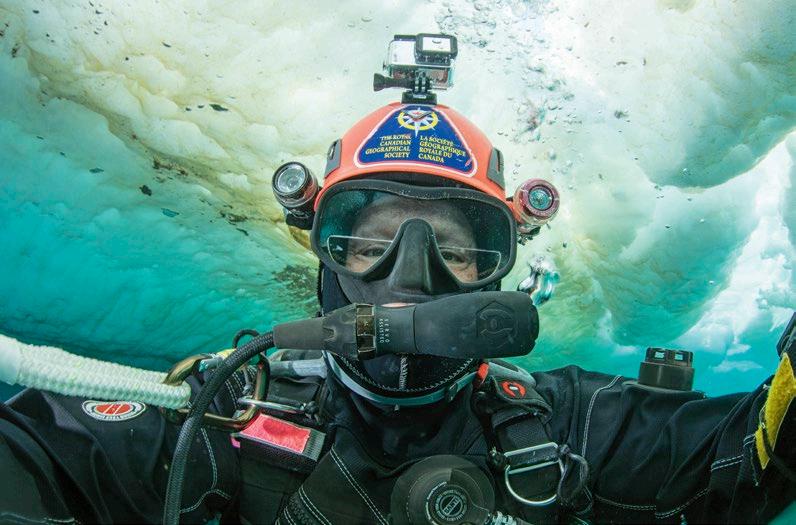
Mexico’s Yucatán Peninsula, and dove for 30 hours, covering a distance of 43 miles along the bottom of the St Lawrence River to raise awareness about drinking-water sources. But the Arctic remains one of the most exciting places she’s had the opportunity to dive, she says.
“I love that you can’t put a point on the map and say, ‘This is a dive site,’ because it’s always changing,” says Lasselin. “The ice might be there today, but not tomorrow. Am I going to dive on an iceberg? On the floe edge? Near the shore? I can’t predict that.”
Arctic dives aren’t cheap. Arctic Kingdom’s typical eight-day itinerary involves travelling from Mittimatalik by snowmobile to a camp on the sea
ice of Tasiujaq (Eclipse Sound). From there, staff and guests venture out each day to check out potential dive sites. The average cost? Roughly £18,000 per person.
Françoise Gervais, another diving guide, first ventured into the polar region in July 2014, after being asked to join a team of ten women— Heinerth among them—travelling in northeastern Canada up the Labrador coast to an island off Qikiqtaaluk, then across the Davis Strait to Greenland, stopping to explore along the way. The group sought to highlight the disappearance of sea ice in the polar region and the effects of global warming through photography, videos and conversations with people in local
ALL PHOTOS BY JILL HEINERTH
MARCH 2023 • 91
Inuit communities.
Gervais soon realised that she was hooked on the landscape. When a job opened up with the company that owned the boat the group had chartered, she took it and stayed in the north for the rest of the summer. Within a year, she was guiding expeditions for Arctic Kingdom.
Now, Gervais has done 30-plus Arctic dives. She once swam with narwhals as they dove under the ice. Another time, she and her diving buddy checked out a tunnel through a grounded iceberg. Covered in ridges and rivulets carved by waves, these massive hunks of ice can stretch 150 metres down to the sea floor—like a “cathedral under water,” says Gervais.
And it’s not just recreational divers who come north seeking adventure. For scientists, it can be the research opportunity of a lifetime.
It’s estimated that 80 per cent of the world’s oceans remain unmapped and unexplored, and that 90 per cent of marine species have yet to be classified. Nowhere is this more true than in the Arctic Ocean.
One group collecting data to expand our knowledge is the British Columbia–based conservation organisation Ocean Wise, which started sending small dive crews north in 2015. Working primarily out of Iqaluktuuttiaq (Cambridge Bay) when the sea ice was gone, crews would do between two and five dives
a day from shore or from the back of a boat in open water.
Swimming along the sea floor, divers took copious notes, pictures and videos of the species they saw, from jellyfish to sea anemones to cold-water corals. They used a tool called a transect (similar to a measuring tape) on the sea floor, counting how many of a species were observed within two metres.
THE ARCTIC IS WARMING FAR FASTER THAN ANY OTHER REGION OF THE WORLD
Marine ecologist Jessica Schultz was a dive-team member for Ocean Wise in 2017 and 2018. She can’t get over how, roughly 177 miles north of the Arctic Circle, the summer waters around Iqaluktuuttiaq are as clear and bright blue as the tropics. She was particularly fond of diving around the Finlayson Islands, several hours by boat off the coast, where the rocky sea floor was a colourful explosion of life.
Marine scientist Laura Borden has been to the Arctic during most summers since 2016—first with Ocean Wise, then as a consultant. She’s done dives near Aujuittuq (Grise Fiord), Tallurutit (Devon Island) and all along Tallurutiup Imanga. She compares the
92 • MARCH 2023 BENEATH THE SEA ICE
species she sees in the Arctic to those along the Pacific coast of her native British Columbia, where she has completed some 650 dives. Those species are often a lot larger in the north.
“There are little animals called sea angels,” Borden says. “In BC, they may be an inch or so tall. But in the Arctic, they’re up to four inches. By their standards, that’s enormous.”
Diving reseArcH in the north is slowly but surely increasing. Scott Johnson is the manager of field operations at the Canadian High Arctic Research Station (CHARS), which opened its doors in Iqaluktuuttiaq in 2019.
The station has welcomed researchers from all over the world, offering services like a filling station for diving tanks. A permanent fourperson diving team, led by Johnson, has also been recently added to the roster of research supports, and CHARS plans to have a fully operational seagoing dive vessel by the summer of 2024, to assist in travelling to survey locations.
Now working on her PhD in marine biology at the University of Guelph in Ontario, Schultz says she’s optimistic that facilities like CHARS can help research grow in the area—but she would like to see the work being done translated into real-life solutions for communities in the north of Canada.
It’s no secret that the Arctic,
warming four times faster than the rest of the world, is ground zero for climate change. NASA estimates that average ice coverage at the end of summer in the Arctic declined by 13 per cent per decade between 1979 and 2021. A 2021 report from the United Nations’ Intergovernmental Panel on Climate Change predicted that the Arctic Ocean would be “practically sea-ice free” in the summer at least once before 2050.
Already, the animals and people living in the Arctic are being forced to adapt. So much of Inuit life relies on healthy and predictable sea ice—for transportation, hunting and recreation. The entire marine ecosystem hinges on the nutrients the ice provides.
That’s why Heinerth—with Canada’s Polar Medal, her induction into the International Scuba Diving Hall of Fame and her bestselling memoir, Into the Planet—has made it her life’s mission to share her experiences with others. If people learn about the Arctic Ocean and its biodiversity for themselves, even if just on a screen or in the pages of a book, they might be inspired to take action in their own lives.
For Heinerth, Arctic diving is about encouraging people to love and protect these things that she’s so fortunate to see. n
© 2022, MEAGHAN BRACKENBURY. FROM “BENEATH THE SEA ICE,” BY MEAGHAN BRACKENBURY, FROM UP HERE (JULY/AUGUST 2022), UPHERE.CA
MARCH 2023 • 93 READER’S DIGEST

Prize Crossword
We have teamed up Roberts Radio to offer one lucky winner a Recival iStream 3L radio.
Founded over 90 years ago by good friends Harry Roberts and Leslie Bidmead, Roberts Radio began handcrafting portable radios. Today they are the UK market leader in portable radios, still delivering on the original Roberts philosophy: never compromise on quality and keep pushing the boundaries


Complete the crossword and the letters in the yellow squares can be sorted to reveal a word that describes something you listen to on the radio. Write this word
complete the crossword for your chance to win !

COMPETITIONS
ACROSS 5 Tract (7) 6 Underway (5) 9 Impersonate (3,4) DOWN 1 And so on (3) 2 Gains (7) 3 Measure of heat (7) 4 Unity (3) 7 Quick-fire talk music (3) 8 Golfer’s mound (3)
Worth
5 8 9 www . robertsradio . com 94 • MARCH 2023

Win A One-Night Stay In A Beach Hut
Readers Digest and Cary Arms & Spa in Devon are offering one lucky reader the chance to win a one-night stay in a Beach Hut for two people with breakfast.
Cary Arms & Spa combines the personality and values of a traditional English inn with the luxurious style and facilities of a boutique hotel. Couples, families and even dogs can enjoy a relaxed getaway with breath-taking views of Babbacombe Bay and miles of seascape along the Jurassic Coast.
The inn and surrounding grounds were sympathetically remodelled under the close guidance of the de Savary family, to offer stylish and spacious accommodation, including Beach Huts, Beach Suites, and Inn rooms, as well as a selection of self-catered cottages.
There’s plenty to do during a stay, from relaxing in the spa and taking in the views on your terrace, to exploring the coastal walks and trying out the various watersports in the bay in front of the hotel.
Cary’s Arms has breathtaking views of A. Babbacombe Bay B. Clean Bay C. Dean Bay

Simply answer A, B or C on the entry form or enter online. See page 151.

T&C’s: Bookings are subject to availability, valid for 12 months, excluding school holidays, bank holidays and special events. Only open to over 18 year olds, UK residents. There is no cash alternative and the prize is non transferable
COMPETITIONS
www . caryarms . co . uk
95
At Citalia, we have been helping our guests discover the very best of Italy for over 90 years. Our experience and expertise, together with our attention to detail and personal touch, really does make us the UK’s leading Italian holiday specialist
Our history in rail travel and relationships with trusted hotel partners mean
To start planning your

we can build every aspect of your trip, so everything is taken care of before you even pack your bags.
Whether you’re looking for an authentic city break in Rome, a glamourous stay by the lakes or an off the beaten track hidden gem, we take the time to handcraft an Italian adventure bespoke to you.
PARTNERSHIP PROMOTION
Below 30mm or 100px
Favicon
Citalia Green #005D61 R: 0 G: 93 B: 97 C: 90 Citalia Black #3C3C3C R: 60 G: 60 B: 60 K: 90
Colours
Italian adventure today,
one of our Personal Travel Planners on 01293 900 643 www.citalia.com
call
TOP TIP
Did you know Venice is just over an hour away by train? You could combine these two cities and discover more of the real Italy in one trip.

Welcome to our Ultimate Guide to Italy!
Italy has something for everyone, from glistening coastlines and Islands, to off the beaten track hidden gems; iconic city breaks to multi-destination itineraries so you can see and do more in a single trip. Enjoy a glass of local wine with friends or spend the day exploring on one of our specially curated experiences. Italy has so much to offer, and we can’t wait to share some of our must visit destinations and events for 2023 with you. Andiamo!
CITY: VERONA
Verona is filled with culture and history. This city of love was the setting for Romeo and Juliet where you can discover the famous balcony at Casa di Giulietta (Juliet’s House). The city’s main square, Piazza Bra is the perfect place to stop for a bite to eat and watch the world go by before heading to the famous Arena di Verona for a night at the opera.
SAVE THE DATE: VERONA OPERA FESTIVAL
Enjoy a night under the stars at the Verona Opera Festival as it celebrates its 100th anniversary this year. From 16th June to 9th September 2023, you can enjoy breathtaking performances of masterpieces like Verdi’s Aida and La Traviata at Arena di Verona - an event not to be missed!
LAKE: LAKE COMO
With an air of elegance and grandeur, the Italian Lakes sparkle with their crystalclear waters edged with floral villages and picture-perfect piazzas.
There are five iconic lakes in the north of Italy: Lake Como, Lake Garda, Lake Maggiore, Lake Iseo and Lake Orta. Each has its own special charm and ambience.
Lake Como has a traditional feel, and the views are sensational. Como offers something for everyone with grand lakeside mansions to Michelin starred restaurants, verdant gardens to stylish boutiques.
Elegant Bellagio offers the ideal place for soaking up the culture, while the pretty towns of Tremezzo and Varenna allow you to be at one with nature in the lush gardens. The extensive ferry network makes it easy to get around so you can head off the beaten track and stumble upon some hidden gems.
TOP TIP

Holidays to Lake Como offer fantastic dining options – we recommend heading to Crotto dei Platani, one of the oldest restaurants on the lake. In a cave-like cellar, it has an interesting history and a delicious menu.
COAST: LIGURIA
The Italian Riviera, also known as the Ligurian coastline, stretches from the border of France all the way down to Tuscany. The main city of Genoa splits the coastline in two with the west side showcasing charming resorts popular with Italians and the east side highlighting the most beautiful coastline in Italy with the picturesque town of Portofino and the iconic Cinque Terre.
Home to a warm climate all year round and pretty fishing villages,
A MUST SEE
Cinque Terre (Five Lands) is the collective name for five of Italy’s most picturesque coastal villages. These postcard-perfect places are all within just a few miles of each other, linking together to form perhaps Italy’s most mesmerising destination.

Liguria is the ideal spot for your next holiday to Italy.
SAVE THE DATE: LIGURIA’S SPRING FESTIVAL
Don’t miss the Spring festivals that take place here annually with the Monterosso Lemon Festival in May. The streets of this tiny town come alive with the fresh scent of lemons as stalls line the streets with crates and baskets filled with lemons – be sure to try Limoncino, Liguria’s own lemon liqueur.
A MUST SEE
The Aeolian Islands lie just off the north of Sicily and are a UNESCO World Heritage site. Offering picturesque landscapes and plenty of relaxation, they make for the perfect day trip from Sicily.

ISLAND: SICILY
For an island escape in 2023, the answer is Sicily. Sitting at the tip of Italy, it’s the largest island in the Mediterranean and ticks every holiday must-have: hot climate, crystal clear waters and idyllic white sand beaches.
There are a magnificent seven UNESCO World Heritage sites in Sicily so take a step back in time and discover the history of this iconic island as you learn about the past with a visit to the Greek temples. Marvel at the Roman architecture and
mosaics and tantalise your tastebuds with the Arabic influenced cuisine.
Head to the seaside town of Cefalù to spend long sun-drenched days on luxurious beaches or embrace the local culture with a walk through streets lined with craft shops.
For dramatic clifftop views, Taormina offers an unforgettable experience. This beautiful town is nestled in the foothills of Mount Etna, Europe’s most active volcano, and has some impressive historical monuments. The most spectacular is the ancient Greek-Roman Theatre which still hosts live shows today, more than 2,000 years later.

COUNTRYSIDE: PUGLIA
Allow Puglia to whisk you away to a land that is culturally rich and enchanting. The heel of Italy is one of the country’s most magnificent regions, known for its vast coastline. Meander the ancient streets and fall in love with the hauntingly beautiful medieval towns.
With whitewashed villages and magical cobbled alleyways, Puglia has some real treasures. Lecce, depicted as the Florence of the South, combines culture and commerce brilliantly with architectural delights. While Polignano a Mare settled on the Adriatic coast, is rich in history, with narrow winding streets, and a white pebble beach with hidden caves to explore.
Nestled in the peaceful countryside you’ll find the small town of Alberobello. The trulli
TOP TIP
Famous for its olive oil production, Puglia supplies around half of the country’s olive oil. Why not visit a local plantation to enjoy a tour and tasting?
houses are the star attraction here with their white facades and grey conical roofs. These unique buildings have been transformed into shops, wine bars and museums. Wherever you choose to go, we know you’ll love Italy as much as we do!
CITALIA’S CHOICE: SIGHTSEEING FROM SORRENTO
Sorrento is a true Italian gem. Like many Italian towns, much of Sorrento’s charm is found in its lemon-lined streets, where you can spend the day browsing the hidden boutique shops. Sorrento is also very well-connected and makes the perfect base when looking to explore the Amalfi Coast, Naples, and picturesque Italian Islands, such as Capri and Ischia. Sorrento is also just a short train ride away from Pompeii where you can amble the ancient stone streets of this preserved Roman town.


FOR MORE ITALIAN INSPIRATION AND EXCLUSIVE OFFERS, SIGN UP TO OUR EMAILS! www.citalia.com
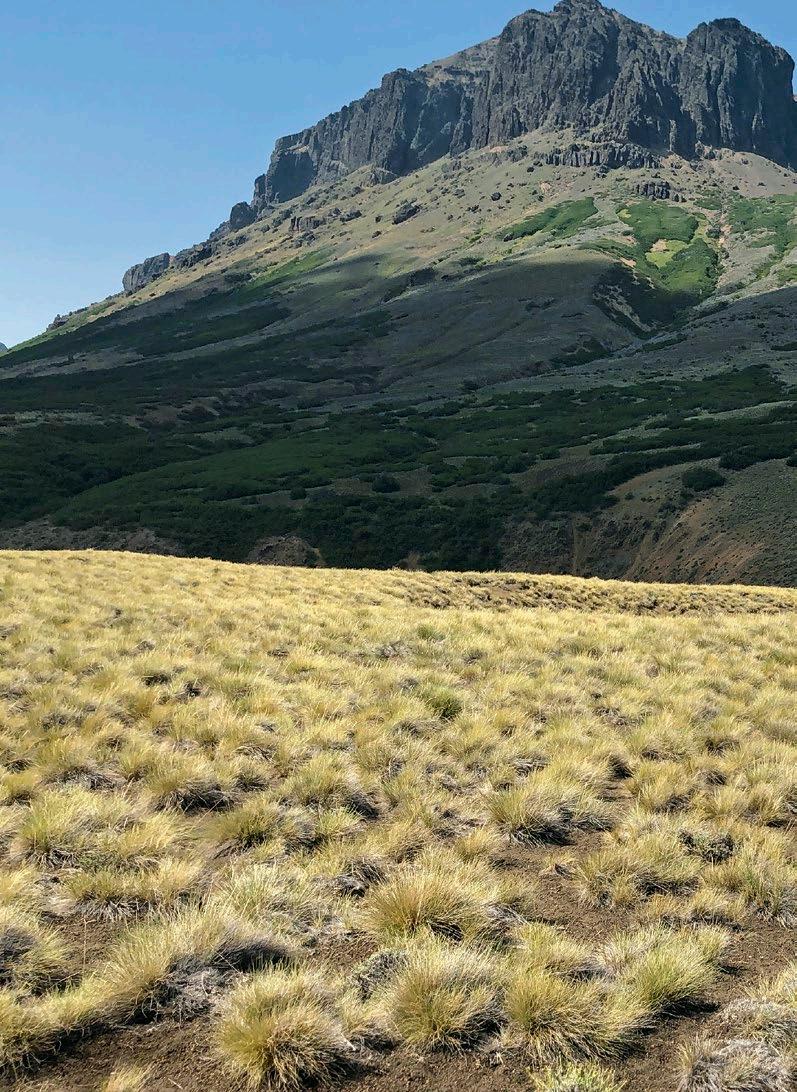
My unforgettable horseback trip in Argentina put me on top of the world
a wild ride in patagonia
102 TRAVEL & ADVENTURE
by Liz Beatty from Canadian Geo G raphi C
 Lulu Waks leads the all-woman riding group
Lulu Waks leads the all-woman riding group
Some journeys leave a mark. That was the case with my ride into the last vestiges of authentic gaucho culture in northern Patagonia. Though it’s been more than two years since my trip, the transformative powers of this experience linger with me even now.
Somewhere past the town of Loncopué in western Argentina, the paved road turns to dirt. Another hour beyond that, the car I’m riding in rattles and heaves over what has devolved into a track. Finally, my vehicle and the one following cross a grassy expanse surrounding the Andean mountain Buta Mallin. This tiny outpost in far northern Patagonia is the end of the road for the drivers, but for their women passengers, it’s where the real journey begins.
With dark locks flowing from beneath her hat brim, 26-year-old guide Lara Simon, who hails from Germany, greets us with a broad smile and a sing-songy “Helloooo.” In contrast, the piercing gaze of head wrangler Alyssa Young evokes 1970s Clint Eastwood—if Eastwood were a 24-year-old woman with long auburn hair. A veteran horsewoman from California, she is Zen, a bit fierce and completely in charge.
Young’s welcome talk is all business: horse care, trail rules, staying hydrated. She then washes in the stream. Despite the scrubbing, it’s clear that it will take weeks back in civilisation before her
hard-working hands will look clean. Suddenly, my white shirt feels conspicuously laundered.
It’s time to mount up. Simon doublechecks each cinch (the strap that holds the saddle in place). “We have just enough daylight,” says Young, swinging her leg over the sheepskin-covered saddle. The three-hour trail ride is the final leg of a long day that’s drawn us five women to this remote trailhead. One more will arrive tomorrow.
We are from four countries—one Brit, one Australian, two Americans and two Canadians (including me)— and range in age from 30 to 60-something. While it seems most of us feel at home in the saddle, our comfort ends there.
Our guides, on the other hand, so clearly belong here, with their worn hats, their veneer of well-earned grime, and their bone-handled knives belted to their hips. They are wholly adapted to these arid, sweeping valleys, free-running horses and springs pouring out of the ground with surprising regularity.
I marvel at Simon as she trots up beside me, a dirty black scarf covering her face against the thick dust kicked up from the horses ahead. She is so loose in the saddle, so at ease in her skin. Experiencing that in-the-bone sense of belonging in such an untamed, rugged landscape is why I’m here.
Wild Women Expeditions, based in Canada, is one of the world’s biggest
104 • MARCH 2023 A WILD RIDE IN PATAGONIA
all-women tour companies, serving a market that grew 230 per cent from 2014 to 2020. The average adventure traveller isn’t a 28-year-old triathlete, but more likely a 47-year-old single mother or a baby boomer. In short, someone like me. Many crave adventure that may be hard to tackle solo. They’re drawn to an ethos of environmental stewardship and personal growth. Some see all-women groups as liberating, for all kinds of reasons.
DOWN THE FINAL RIDGE, the setting sun illuminates our dust trail. We begin hearing hoots and cheers coming from our destination on the valley’s far edge. Snaking up to Ranquilco, as the ranch is known, we
pass a message carved across the gate: “Enjoy the Creation.”
A welcome party emerges from nearby outbuildings, porches and forest paths. Among them are Lulu Waks and Sylvana Manterola. Waks, who is from California, will lead our pack trip. She’s fit, 30-something and entirely self-possessed. Diminutive Manterola is the daughter of a local gaucho, or horseman. A bull-strong gaucha in her own right, she makes her own knives.
This is our home for the next 36 hours—off the grid and a bit off the wall, a higgle-piggle of stone and wooden architecture extending out from the casa grande. Each room has a wood-fired water heater and also a worthy view.
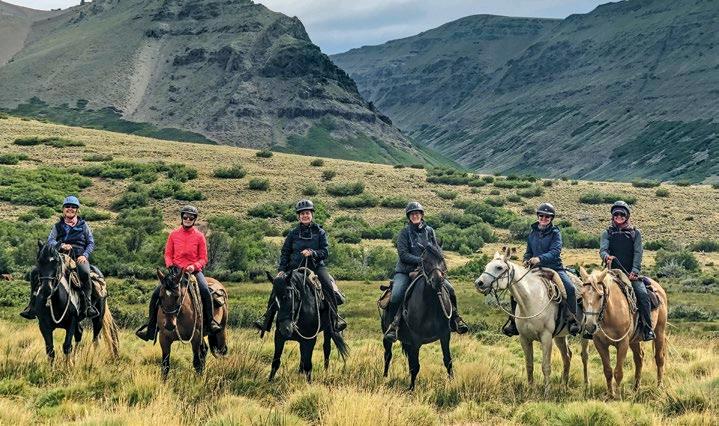
Liz Beatty (second from left) with her fellow riders
ALL PHOTOS COURTESY OF LIZ BEATTY READER’S DIGEST MARCH 2023 • 105
Since Ranquilco was established in 1978, individualists from around the globe have found their way to this more than 40,000-hectare ranch— horticulturists, veterinarians, massage therapists, master masons and chefs. All bring their creative vision to the ranch’s circle of sustainability.
Drinking glasses, someone realised, could be made from the bottom of empty wine bottles (of which there are many). Horseshoes could be reshaped as hinges or to secure support beams cut in the ranch’s own sawmill. Virtually all their food is grown or raised on the property.
And for the most part, it’s eaten on a stone terrace with a long harvest table and yet another impossible view. In the distance, high, arid grasslands, valleys, meadows and jagged peaks extend deep into the heart of the Argentine Andes. No roads, no fence lines.
“This place could not exist without so many hard-working, creative hands,” says Waks, sipping coffee the next morning and surveying the horizon. Her reverence for the community here is palpable, but what she loves most is riding out into this magnificent vista. Tomorrow, we’ll go with her.
ROLO THE MULE STANDS compliantly under the towering poplars shading Ranquilco’s main courtyard. Simon, Waks, Manterola and Young are expert packers, balancing the load and
securing the cinches. Next, the other mules—Ragnar, Ruby and Roberta— take their loads. Finally, four women guides, six women guests, four mules, and ten horses head off down Ranquilco’s treed lane. The mules and an extra horse walk free. There are hoots and cheers from the men and women staying behind.
Jen Billock, from Chicago and the only novice rider, is a little nervous about what’s ahead—the first major descent. It’s a narrow scree and boulder-filled slope dropping about 120 metres. A line snakes down the middle. It doesn’t look like a trail. Navigating this is all about trust, letting the hardy native Criollo horses do what they do.
Waks and Young offer Billock calm, spare instructions: “Lean back. Give him his head.” That means loosen the reins; let him see where he’s going. There’s no time for pondering. Billock is near the bottom by the time I reach the top edge. Way to go, Jen! I think. Even though I’ve ridden all my life, I had no idea horses could do what we’re doing.
By mid-afternoon, persistent winds blow in cloud cover and eventually thunderheads. Fork lightning strikes with a shuddering bang one valley over. Waks takes her time assessing the situation. “It looks far enough away and is moving in the other direction,” she says finally. “Let’s keep going.”
Later, we muddle through our first evening setting up camp, then peel off
A WILD RIDE IN PATAGONIA 106 • MARCH 2023
Rolo the mule, loaded with supplies; (Right) The riders negotiate a steep scree slope
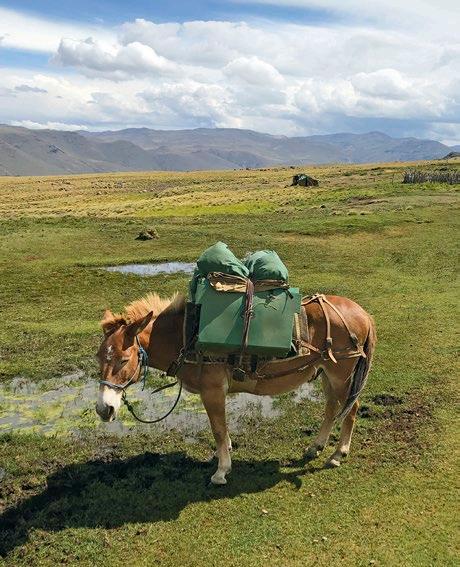
hot, dirty riding gear. We lie flat, looking up at clear skies and luxuriating in the sound of the river.
THE NEXT MORNING I find my horse, Angus, where I left him, still tethered. He’s such a handsome black gelding— energetic, or “forward” in horse speak. I enjoy his flashy gaits. But the deeper into this landscape we ride, the deeper my affection grows for the mules. Their labour makes all this possible, but also, they are fascinating characters.
“Heads up—Ragnar coming through!” Young bellows from above. I
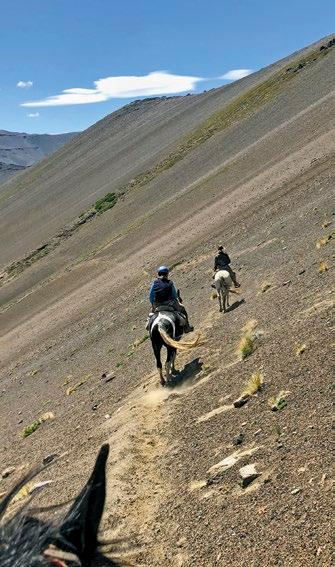
spin Angus around as Ragnar’s wide load blows by down the hill. At the bottom, the mule falls in line near the front. She won’t let anyone pass.
“It’s just what they do sometimes,” explains Young. “Horses and mules have a clear social hierarchy with horses at the top. But it’s a love-hate thing for mules. They want to be part of the group. But every once in a while, they have to assert themselves with a not-so-gentle reminder, ‘Don’t take me for granted.’”
I wonder if perhaps I was a mule in a previous life.
READER’S DIGEST MARCH 2023 • 107
We follow a canyon trail that opens to a wide plateau. There are peaks to each side and expanses so enormous that the hundreds of angora goats along the river below seem like bleating white ants.
Waks asks if I want to take the lead. I do. For a moment, my gaze fixed straight on, I pretend I’m all alone in this stunning panorama. It might well
THE DESCENT BEGINS DOWN THE MASSIVE SLOPE. I
STRUGGLE TO COPE WITH THE PRECIPITOUS DROP
be my favourite stretch of the whole ride and experience.
As the valley narrows, a gaucho appears, seemingly out of nowhere. With a magnificent grey stallion and a thick moustache under a flat-brimmed hat, Tono looks straight out of central casting. At first, his warmth and familiarity feel surprising in a landscape we thought we had to ourselves. But then I’m reminded of what someone said to me back at Ranquilco. This is no wilderness; it’s one gigantic neighbourhood.
This meet-up is the Northern Cordillera equivalent of chatting over the back fence. Tono describes a bad fall from his horse. Waks gives him Tylenol. Then he escorts us through a
dense thicket and on to where a lightning strike the day before sparked a brush fire. A large swath of charred hillside still smoulders, pretty close to where we’ll camp for the night. Still, he and Waks agree—we’re probably safe.
SIMON HANDS ME COFFEE as I pull out tent pegs the next morning. Each day, these rituals get faster, more second nature. Homemade bread is toasting over an open fire—a piece of which I’ll soon smother in a caramel spread called dulce de leche. Soon we’re climbing the valley bowl beyond the vegetation line toward the next pass.
Single file, the descent begins down the massive scree slope to the Desecho Valley floor. I struggle to cope with the precipitous drop to my left. Eventually, I look only straight out or up.
At the bottom, we untack the animals and for the first time let them go free. Young insists they will be safe, and happier to tackle what’s coming the next day. Soon Angus, Brian, Bandero and the others, mules included, trot gleefully a good kilometre down the valley. I’m shocked that my control issues aren’t, well, out of control. Instead, it’s liberating to release these wondrous creatures and trust that they will return.
At sunset, we stretch out around the fire. Some of us have washed up in the nearby spring, while others still proudly sport the day’s dust. Manterola passes a dried gourd filled with mate tea. Each of us takes our turn sipping
A WILD RIDE IN PATAGONIA 108 • MARCH 2023
from the metal straw called a bombilla. One by one, we ponder the things in our lives that brought us to this campfire deep in the Patagonian Andes—ten grateful specks under a dazzling starry sky.
Young rises early to round up the animals, now many kilometres down the valley. From the elevation of our campsite, I watch this show of horsemanship unfold.
When they’re back, we break camp quickly, tack up and ride out. Halfway across the meadow, Waks raises her hand. We halt and gather round her.
“Over the next two hours, we will climb to almost 8,000 feet [more than 2,400 metres], the highest point on the trail,” she says. “And we’ll start turning back toward the estancia. It is our tradition to ride this section in silence.
“We want you to absorb this moment and to be fully present for a trail that will command your full attention.”
Over the next two hours we pass a massive scree slope and go over the spine of another high pass, then cross a trail that is half the width of Rolo’s load. It drops off on one side farther
down than I care to imagine. Finally, after one last brutal climb, we stand on what feels like the top of the universe.
FOUR DAYS LATER, our last, three-hour ride begins early from Ranquilco’s courtyard. Dirt covers every inch of my clothes and gear. It will take a week of scrubbing before my hands look anywhere near clean. Jen Billock, who trailed behind tentatively when all this began, has her horse trot up to the lead.
Over the final kilometres, Waks, Young and I ride at the back of the group, savouring this last stretch of trail. Before the final rise, before the grassy expanse surrounding Buta Mallin appears, Waks suggests we three hold back even farther. “How about one final run?” she says with a smile.
“Yip, yip, yeeow!” We push our horses into the lovely three-beat rhythm of a canter. We sit deeply in our sheepskincovered saddles, shoulders back. Our bodies are loose, at ease in our own skin, just three badass gauchas in northern Patagonia. n
© 2021, LIZ BEATTY. FROM “A WILD RIDE THROUGH NORTHERN PATAGONIA, ARGENTINA,” CANADIAN GEOGRAPHIC (FEBRUARY 19, 2021), CANGEOTRAVEL.CA
To Put It Another Way
People are always asking me, “What does that song mean?” If I could say it in other words than are in the song, I would have written another song, wouldn’t I?
ELVIS COSTELLO
READER’S DIGEST MARCH 2023 • 109

Ellenborough Park Hotel
and restaurant in the Cotswolds where history, elegance and nature combine
A stunning 15th century manor house in glorious parkland, Ellenborough Park is Gloucestershire’s only 5-star hotel, just a few miles outside of Cheltenham and right on the gateway to the Cotswolds. This peaceful 90-acre country estate has original stone flags and wooden beams, glorious vast open fireplaces that speak to its rich history, and 61 newly-refurbished luxury guest rooms.
Take afternoon tea in the Great Hall, choose from sumptuous dishes in The Restaurant, or dine alfresco in the Cedar Pavillion and the hotel’s quirky dining carriages; kick back in the Elemis spa and heated outside pool, or borrow a coat and wellies to explore the nearby rolling countryside. Complete with dog friendly rooms, Ellenborough Park is the perfect countryside retreat for the entire family.
The prize includes a one night stay with breakfast and 3-course dinner for two adults in a luxury room.
For more information about Ellenborough Park or to book direct, visit www.ellenboroughpark.com
Ellenborough Park is a country house hotel set outside which historic market town:
T’s & C’s: The prize must be taken before 30 November 2023. It is not transferrable with no cash alternative. Transport is not included. Subject to availability, Sunday – Thursday. Date exclusions include 13th – 18th March, Easter Holidays and Bank Holidays.
COMPETITIONS
A. Bath B. Cheltenham C. Stratford Simply answer A, B or C on the entry form or enter online. See page 151. www.ellenboroughpark.com
110
WIN A ONE NIGHT STAY WITH DINNER AND BREAKFAST AT A five-star country house hotel, spa






Ballooning Over The Valley Of The Kings My Great Escape:
Our reader Carolyn Ross takes to the skies in Egypt
It was still dark when we left our Nile cruiser, and the coffee served to us on the colourful craft that ferried us to the west bank was very welcome. Sunrise happens fast in that part of the world and, as we gunned our way across the river, the sky was paling. Already, we could see hot air balloons rising gracefully into the sky.
From the boat we transferred to a mini-bus, and soon found ourselves in a field surrounded by huge and colourful balloons in various stages of inflation. Teams of young men grabbed hold of dangling ropes, and with much excited shouting sent clouds of dust flying from their feet as they were dragged along by the balloons, now almost fully inflated and impatient to soar skywards.
I’m not hugely bothered by heights, but having never been in a hot air balloon before, I must
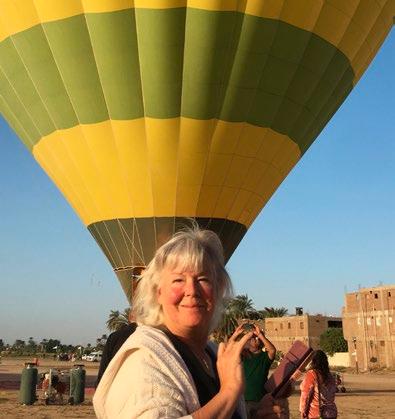
confess to a twinge of apprehension, but I needn’t have worried. Our balloon was ready, and the huge basket that held up to 20 people felt comfortingly solid as I clambered inelegantly into it.
The basket was divided into sections, like a honeycomb, and we practised a brace position for landing. There were three of us in our section. The landing position for my husband and our companion was to be seated on the basket’s floor, and mine was seated on my husband’s lap.
Thus instructed, there was a roar from the burner and, light as a feather, we rose softly into the air. Apart from the occasional burner roar, what is immediately striking is the quiet, and any sound from the ground below carries upwards—the bleating of a goat and the chatter of a child talking to his mother floated
112 • MARCH 2023 TRAVEL & ADVENTURE

clearly up to us. Small children leaned out of their windows to watch us drift overhead—it must be a sight that they see often, but perhaps the spectacle of so many brightly coloured balloons flying together is one that never palls.
Below us lay the Valley of the Kings and the Temple of Hatshepsut, its linear and modernistic design belying its age of 3,500 years. Rising a little higher, it was easy to see where the lush green of the irrigated crops finishes abruptly on both sides of the river and the desert begins. Ninetyfive per cent of Egypt is desert, and the population lives exclusively along the banks of the Nile. Seen from above, this narrow green ribbon that runs for more than 4,000 miles from the heart of Africa to the Mediterranean appears fragile. But as it has supported civilisations upon its banks for centuries, it is robust.
All too soon we began to descend, floating some 20 feet above a donkey who patiently pulled his cart along. Upon our pilot’s instruction we assumed our brace positions in anticipation of a jarring thump. None came. As the basket softly settled itself in a field of grass, a team of men came towards us and, with help from the burner, manoeuvred us hovering to the nearby roadside.
Once down, the team went into action to deflate the balloon. My husband requested that I remove myself from his lap as his blood circulation was becoming compromised. Choosing to ignore this insult, I exited the basket every bit as gracelessly as I had entered it and stood on terra firma. n
Tell us about your favourite holiday (send a photo too) and if we print it, we’ll pay £50. Email excerpts@readersdigest.co.uk
MARCH 2023 • 113

EL ATENEO GRAND SPLENDID Buenos Aires
There are bookstores, and there are bookstores. Found in the upmarket Recoleta district, close to its monumental cemetery and Eva Perón tomb, El Ateneo Grand Splendid’s ornate magnificence is easily explained: it began life as a tango theatre.
Erected in 1919, as a wave of immigrants helped business to boom in Buenos Aires, the original Teatro Grand Splendid capitalised on the excitement around the city’s hottest new music genre. Owned by record label proprietor Max Glücksmann, it was soon hosting performances by tango legends from Carlos Gardel to Roberto Firpo.
Ten years later, the Grand Splendid converted into a cinema the first in Argentina’s capital to show soundaccompanied movies, as live tango orchestras played alongside silent films.
Facing demolition in the early 2000s, it assumed another new identity as the flagship store among Yenny–El Ateneo’s chain of bookshops. Mostly-Spanish titles (although there is a small section of English offerings) are along shelves that occupy the former orchestra, stalls and mezzanine sections.
Happily, the old theatre’s handsomely frescoed ceiling dome, meticulous trimmings and scarlet stage curtains all remain. Soft lighting lends extra atmosphere, while former VIP boxes look back over rounded balconies.
The former stage now hosts a café-bar where visitors can try classic submarinos: mugs of hot milk served with a thick slab of dark chocolate that you dunk inside. Live piano concerts take place, maintaining the Grand Splendid’s musical heritage. n
By Richard Mellor

115 GEMS HIDDEN
For Release? Equity Eligible Are You
One of the main things you may be wondering as you plan your finances for the years ahead is whether you are eligible for any budgetboosting financial solutions

PARTNERSHIP PROMOTION
Releasing equity can be a great way for homeowners over the age of 55 to fulfil their goals. With the UK’s most popular equity release product, a Lifetime Mortgage, you can borrow a tax-free cash sum from the value of your property.
If you are considering this financial option, there are a number of simple eligibility criteria to consider in addition to your age.
Your eligibility checklist: Reader’s Digest Equity Release are on hand to provide you with all of the details you may need, so you can discover whether releasing equity with a Lifetime Mortgage could be right for you.
The friendly UK-based Information Team can talk you through whether you qualify, or whether a different solution might be more suitable. Your initial phone conversation with the team is designed to last around ten minutes and will help to screen you and your property before you sit down with an expert adviser.
The Information Team will:
• Check that your property is worth at least £70,000 and that you wish to release at least £10,000.
• Find out whether you are mortgage-free, or able to clear your mortgage when you release equity. This is because you cannot simply take out a Lifetime Mortgage in addition to your current mortgage. Many people choose to use the funds they release to achieve this.
• Talk you through some of the criteria your property must meet, including ensuring it is your main residence and that there aren’t any restrictions on who can purchase it.
Once the Information Team have determined you are good to go, they can arrange for you to have a no-obligation appointment with an adviser. You’ll be matched with an adviser local to you, who can answer any further questions you may have, confirm and recommend products that might be suitable for you, and help you through the application process. Your adviser will also be able to explain that releasing equity will reduce the value of your estate and could affect your entitlement to means-tested benefits, whilst helping you to explore the Lifetime Mortgage features that could mitigate the impacts of these risks. Get in touch on 0800 029 1233 today to learn more about Reader’s Digest Equity Release and discover if you could be eligible to boost your budgets with a Lifetime Mortgage.
Reader’s Digest Equity Release is a trading style of Responsible Life Limited. Only if your case completes will Responsible Life Limited charge an advice fee, currently not exceeding £1,690. SPEAK TO THE INFORMATION TEAM TODAY: CALL 0800 029 1233 OR VISIT: www.redersdigest.co.uk/er2

MONEY ON THE MONEY SPECIAL To Fill Gaps State Pension Still Time There’s
The full State Pension will be worth £203.85 a week from April 2023, or £10,600 a year, so on its own it probably won’t be enough to fund the lifestyle you want. Hopefully when you retire you’ll have a mix of additional assets, such as a workplace pension and savings, to make a difference in later life.
But the State Pension is still going to be vital, and it’s dangerous to take it for granted when calculating what you’ll need. That’s because it’s not guaranteed you’ll get it, or that you’ll get the full amount.
Though the rules vary depending on your current age, for men born after April 6, 1951 and women born after April 6, 1953, you’ll broadly need to have ten qualifying years in order to get any of it at all. And to get the full amount you’ll probably need 35 years in total (frustratingly it can vary by individual—my record says I only need 30!).
If you fall short of this total you’ll receive less of the State Pension. That can be quite significant, roughly £275 for each year. So if you have, say, 24 out of 35 years, you’ll get around two-thirds of the max

amount, losing you around £3,500 every year.
So how do you ensure you get the full amount? Well, a qualifying year is one in which you paid National Insurance. Most people do this via their salary. If you work full-time for 35 years then you’ll have a full record and get the full amount.
It’s also possible you might have received National Insurance credits from payments such as Job Seeker’s Allowance and Child Benefits, and those credits can count towards a full qualifying year too.
To find out exactly how many full NI years you’ve accumulated, and how many more years you need you’ll need to check your record at gov.uk/check-state-pension or contact the Future Pension call centre on 0800 731 0175. You’ll also be able to see the years where you fell short.
Andy Webb is a personal finance journalist and runs the award-winning money blog, Be Clever With Your Cash
Depending on how many years you’ve amassed already and your age right now, it could be that you have plenty of time to reach 35 years through normal work, which is the best way to qualify. You might even have already gone past the required number of years and be all set. In these cases, there’s nothing to worry about.
But if you’re close to retirement age and have gaps in your record, have lived abroad, or if you are hoping to quit work early, then that could make things harder.
MARCH 2023 • 119
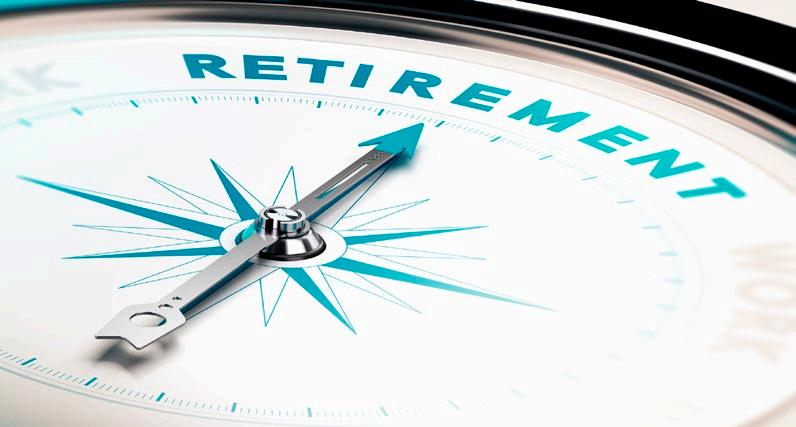
Fortunately there’s always the option to make voluntary payments in order to get to the full qualifying amount. This is usually limited to filling gaps in the last six years, but until April 5 this year, you can actually top up all missing years since 2006— meaning there are up to 16 years on offer. If you or anyone you know could benefit from this extended period you’ll need to act fast!
And it really can be worth it. At current rates you’ll pay around £824 in voluntary National Insurance to top up a single year. This will add around £275 to your annual State Pension when you claim it. So for each year you pay for now you’ll need to live long enough to receive the State Pension for three years to break even.
Every year after that, you’re making a profit on the initial payment. Assuming that you live for
another ten years, that’s a total £2,000 return for each extra qualifying NI year, jumping to £5,000 if you live to 88 (based on the current retirement age of 67).
If you’re topping up a partial year or are self-employed then the amount you’ll pay now will be less, but you’ll still get the same uplift in the actual State Pension payment when you retire.
But before you do make any of these extra payments, it’s worth doing a little more research on your personal situation, as there can be consequences worth considering.
For example, those on low incomes might miss out on free Pension Credits, while those with healthy pension pots could end up losing some of the boosted return through tax. There’s also the added complication if you were ever “contracted out”.
120 • MARCH 2023
For those planning to retire early with a decent yet not full NI record, it’s also worth bearing in mind you can make voluntary contributions each year after you stop working, and you can still back date these payments through the previous six years. If there’s a chance your plans might change and you keep working or even return to work before you claim your pension, it could be worth waiting before making extra payments.
It’s also important to check you can’t get any missing years filled for free. Some NI Credits can be backdated if you didn’t claim them at the time, including if you weren’t working as you needed to care for someone or if you were on statutory
sick pay. You can find out more about these from the gov.uk website or Future Pension hotline.
Having said all this, it’s worth noting that the State Pension is under review. This will probably mean a speedier increase in the State Pension age, so those born after 1970 will have to wait longer before they can get it—and as a result have to reach an older age before the topups have paid for themselves.
And there’s always the chance that larger reforms in the future could restrict how much you get, if anything at all. It’s worth contributing as much as you can into private or workplace pensions to boost your retirement income. n
The first coffeehouse is thought to have opened in 1475. The place was called Kiva Han, which served coffee to Constantinople’s citizens in Turkey.
One of the most remote coffeehouses in the world is The Coffee Shop, which keeps researchers and scientists caffeinated at McMurdo Station, Antarctica.
“Penny University” was a nickname given to coffeehouses in 18th-century Oxford. These relatively new public establishments charged a penny for entry, which would give visitors access to newspapers laid out on tables, stimulating intellectual conversation and an alternative route to learning.
source: arabicwithoutwalls.ucdavis.edu, independent.co.uk, wikipedia.org
READER’S DIGEST
MARCH 2023 • 121
Coffeehouse Culture
Creating A Pet-Friendly Garden
With spring in the air, we’re all looking forward to spending more time in our gardens
Spending time together in the garden can be a great way to exercise and have fun with your pet. Charity Blue Cross has put together some top tips on making sure the space is fun and safe for you and your four-legged companion to enjoy all year round.
Fun for your pets

For dogs, you could try growing your own vegetables which you can give them, or they can find lavender and rosemary mentally stimulating. Cats like catnip, catmint, honeysuckle and cat grass.
Dogs Use a sandpit filled with soil or safely sized balls so your dog can dig for treats. A small paddling pool can also provide a place for them to swim.
Cats Many cats love to climb. Cats like to sit up high, so consider putting up platforms for them.
Rabbits and guinea pigs Provide tunnels for your bunnies and guinea pigs to explore.
Pet-friendly plants
You might have space in your flower bed and want to grow something for your pet.
If you have rabbits or guinea pigs, you could grow herbs for them, or give them branches from untreated safe trees such as willow or apple. Make sure that toxic plants are removed. These include lilies, foxgloves and lily of the valley. Daffodils and tulips can be toxic too.
Securing your garden
You should always make sure any gates or fences are secure so your pet can’t escape or injure themselves on them.

For rabbits and guinea pigs, a secure exercise run with a shelter on the lawn is best for keeping them safe.
Slugs and snails
Many slug pellets are toxic, including some described as safe, so
PET CORNER
122 • MARCH 2023
stick to barriers, such as slug traps or copper tape.
Slugs and snails can infect dogs with lungworm, a dangerous parasite. Talk to your vet about treatments. Avoid leaving toys and bowls out. Wash them if they have slime trails.
Avoid chemicals
Fertiliser and weed killers are toxic to pets. Lawn feed and moss killer may irritate your pet’s paws and cause stomach upsets. Avoid if possible.
Ponds
Ponds can prove a risk as not all pets can swim and could get into trouble if they fall in and aren’t able to escape.
You can cover your pond with mesh or fence it off, or include a ramp.
Bees, wasps and insect stings
Stings can cause an allergic reaction and if your pet does get stung you’ll often notice swelling of their feet, eyelids and face. You should contact your vet immediately if you believe your pet has been stung.
Heat
During any hot weather spells, ensure your pet can get inside your home to relax in the cool. Make sure they have access to clean water to drink. n
For more visit bluecross.org.uk
READER’S DIGEST’S PET OF THE MONTH

Email your pet’s picture to readersletters@readersdigest.co.uk
Age: 3½
Breed: Maltese
Owner: Maria Fretsiou
Fun Fact: Everyone admires his long hair and can’t understand the breed, as usually their hair is cut short due to the high maintenance. People think he is a girl too!
Louie MARCH 2023 • 123
How To Grow Garden Peas
Garden and food writer Rekha Mistry shares a guide to growing garden peas from her new book, Rekha’s Kitchen Garden
Easy to grow and not requiring tall supports (especially the dwarf varieties), peas are a great option for first-time vegetable growers. They are at their sweetest when freshly picked and cooked for the minimum of time, but getting them from your plot to the kitchen is difficult. This is why gardeners say peas are the hardest vegetables to “save”.
I agree. Every time I harvest the ripe pods, I’m tempted to slide the fresh green peas straight into my mouth. Resistance in my case is futile: the only solution would be to tape my mouth shut before I go near my pea plants! Yet I rarely feel guilty munching my peas on the allotment, because my family aren’t partial to them at all. Oh well, more for me!
Sowing undercover
By early March, I’ve sanitised the greenhouse and given it a thorough spring clean. Now it’s time to sow peas, which don’t mind cold temperatures. After filling Rootrainers with peat-free potting compost, I sow a single pea in each, at a depth of 4–5cm (11⁄2–2in). Germination takes less than two weeks and as soon as
this happens, I move the seedlings in their Rootrainers out of the greenhouse into the cold frame. As the young peas acclimatise to outdoor temperatures, they continue to grow.
Planting out
In early April, on the day of planting out, I add a bucket of garden compost to the area where the peas will grow and work it into the soil. I then mark out a row with my stringline and plant the seedlings along one side of the string at 10cm (4in) intervals. After firming in each plant in the row, I remove the string and start another row, 15–20cm (6–8in) away from the first. Because these rows are fairly close to each other, the twining pea tendrils will latch on to each other and provide support. At this point I give them help by adding a few spent raspberry canes among them. After watering in, I put down a beer trap close to the tender seedlings.
Direct sowing and routine care
Peas can be sown outdoors in April, and although I sow mine undercover,
124 • MARCH 2 023
HOME & GARDEN


I make a direct sowing of peas in August. By the time the plants from this second sowing are in flower, the pea moth is no longer active.
For outdoor sowings, I dig a narrow trench, 15cm (6in) wide and 5cm (2in) deep, creating ridges of soil on either side of the trench. The seeds are sown at 5cm (2in) intervals along both outer edges of the trench, just inside the ridges of soil. After marking the start and end of each row with a short cane, I back-fill with the soil from the ridges and water in. Germination takes ten days, and when the plants are around 8cm (3in) high, I’ll insert spent raspberry canes for additional support.
As soon as flowers appear in May, I give the plants a weekly comfrey or liquid seaweed feed as well as watering them once a week. If we have a very dry spring, I’ll increase the frequency of watering to two to three times a week.

From June to the end of August, the pea moth is on the wing and looking for pea flowers. By this time the flowers on my indoor-sown peas will have faded so won’t be susceptible to attack. Peas sown outdoors in April, however, will need to be covered from May onwards with fine netting.
Harvesting
Peas are ready to pick around six weeks after the flowers have faded, and I can harvest my early sown pods in late June, knowing they won’t have been nibbled by pests. The peas I sowed outdoors in August have flowers by mid-September, and I can be picking healthy pods (and munching fresh peas) around the end of October. n
Rekha’s Kitchen Garden by Rekha Mistry is out February 2 (DK, £18.99)
MARCH 2 023 • 125

126 FOOD
Meal End A How To
Dessert may bring a meal to a close, but it can add to what has come before just perfectly
WHAT WE EAT at the end of a meal marks its passage. If we have eaten well, our hearts and bellies full, the occasion will be bittersweet. Conversation will have slowed, the night’s slope tilted.
What seemed like it would last forever now seems certain to be nearly done.
I am always grateful for a little more time at the table; the meal must pass somehow, and I am better consoled with one more taste than with the rather less voluptuary sound of a gong.
Tamar Adler is a contributing editor to Vogue. Her writing has appeared in the New York Times Magazine, the New York Times Book Review, the NewYorker.com, and other publications

If a meal cannot go on forever I ask only that its passage be not too jarring. I ask dessert to leave room for the flavours and smells before it, to let them linger faint, and not erased, in its margins. I prefer not to clear my mental slate. I ask dessert to look kindly on my current condition: what tastes have been on my tongue, how much I have eaten, and of what.
If you want to bake dessert, choose an easy one. Easy baking exists, and
MARCH 2023 • 127
if you are not trying to pummel a meal’s savour out of memory with sugar and cream, but to usher it to a graceful close, the simplest cakes and cookies are often the best.
I like rosemary cake, because it’s not so sweet that I’m quietly sad that the salad has left the table. There are no layers or frosting; nothing to crack or leak. The olive oil in the batter is forgiving of hasty measuring and doesn’t mind the temperature at
THE MEAL MUST
Make a bowl of fruit abundant. Whatever isn’t eaten tonight will be eaten tomorrow, and filling a bowl with enough that everyone can have more makes it look opulent, and keeps people from feeling as though they have each been assigned a fruit.
In winter, slowly warm dried figs or prunes with a little sugar and a cinnamon stick in sweet wine, like port or brandy. Once the wine has heated, leave the fruit in it for an
PASS SOMEHOW, AND I AM BETTER CONSOLED WITH ONE MORE TASTE
which it’s mixed. Tomorrow, warmed in an oven, a slice of this cake, spread with jam, makes a consummate breakfast.
Italian cookies called brutti ma buoni (“ugly but good”) are worth keeping in your quiver, first because most disappointment or satisfaction has its origin in expectations, and here you have made your intentions very clear; second, because they are truly not ugly, but simply plain, and additionally light and delicious.
One of the best desserts is fruit. Fruit is a chance for cook and eater to make a final pact to end a meal together. Serve fruit whole. Let people choose to use their hands or a knife. Give everyone an opportunity to feel the meal’s energy vibrate, to feel and smell something raw, and to be both feeding themselves and being fed.
hour, on very low heat, or off the burner completely, until it plumps up. Remove the fruit and let the wine reduce for ten minutes to sweet, thick syrup. Serve it in little bowls or teacups, dolloped with mascarpone, or serve the heady compote, once it has chilled, over vanilla ice cream.
Or serve little pieces of the same bread you had at dinner, flattened in a hot cast-iron pan with another pressed on top of it, or made very hot on a griddle, then topped with a heaping spoonful of fresh ricotta cheese and a big handful of roughly chopped toasted almonds or hazelnuts, all of it drizzled with honey.
Or press and heat pieces of baguette, then make them into little sandwiches filled with squares of barely sweet dark chocolate, as
128 • MARCH 2023 HOW TO END A MEAL
severe and gratifying as coffee. First spread one side of the sandwich with cold butter, then scatter a few grains of flaky salt over it, then add the square of chocolate and the second little piece of bread, and press down with the second pan.

Or dispense with any heating and combining and buy a few dark chocolate bars. Break them into big squares and serve them in a tumble on a plate, with a glass of Scotch per person, which will make each appetite feel listened to, and provide a tiny anaesthetic to the pain of letting go.
There’s an old British tradition of serving something savoury at the end of a meal. It is designed as a shield against dessert’s taunt. What if, a savoury bite asks, the wisp of sadness at a meal’s close were swept away with a riddle? It is a tradition I like. Serve little bites of strong cheddar cheese melted with beer alongside dark toasts, or tins of caviar and buttered bread. Then, more wine may be opened and the night can march on… n
Adler
(published by Swift Press) hbk £14.99

St Patrick's Day Facts
Irish emigrants in the US started the tradition of celebrating St Patrick's Day with a parade, with Boston and New York first holding their parades in the mid-18th century
Since 1962, the Chicago River has been dyed a vibrant green for a few hours on a Saturday on or before St Patrick's Day, with thousands watching, using just two boats
It is estimated that over 13 million pints of the popular Irish beer Guinness are consumed by revellers worldwide on March 17 every year
MARCH 2023 • 129 READER’S DIGEST
Excerpt from An Everlasting Meal— Cooking with Economy and Grace by Tamar


Prize Wordsearch
Virgin Wines work with an extensive network of trusted winemakers to blend a range of over 700 wines. The result is a wine range featuring exclusive and estate sourced wines. Enjoy the taste of France at home by winning our 12 bottle case of the best in our Vin de France range. To look at our range visit www.virginwines.co.uk

Can you find all these words for various drinks in our wordsearch grid?
One of them cannot be found and will be your prize answer. Words can run in straight lines in any direction, cross them off as you find them, and the missing word you have remaining is the winning word – simply write this word on the entry form or enter online. See page 151.
MILK PERNOD
PORT
PUNCH
ROSE RUM
SHERRY TEA
WHISKEY WINE
COMPETITIONS
A 12
Case WIN! www . virginwines . co . uk
Bottle
Terms: Prize includes delivery, over 18’s only and prize not exchangeable. ALE BEER CAVA CIDER COCOA COFFEE COKE COLA FIZZ MEAD
131



BEAUTIFUL BRITAIN Photo Competition
What encapsulates the beauty of Britain for you?
What encapsulates the beauty of Britain for you?
Is it rolling green hills and hidden valleys of the countryside? Or cobbled medieval streets and grand cathedrals? Or something else entirely? Here’s your chance to capture it in a photo! All you have to do is take a compelling picture that sums up the beauty of Britain for you, and send it to us.
We’re looking for a unique and unusual approach, so let your creative juices flow!
The competition will be judged by professional photographer James Eckersley, and the winning entries will be published in our July issue, with the top winner gracing the back cover
About the judge: An award-winning photographer specialising in portraiture, James Eckersley has worked with some of the most prestigious magazines, publishers and record companies across the world. His work is held in the permanent collections of both The National Portrait Gallery and The Royal Collection and has featured in many books and gallery exhibitions. He is a qualified photography lecturer and runs practical workshops from his idyllic woodland location. Visit jameseckersley.co.uk for more info


How To Enter
Take a high-resolution photo with either a phone or digital camera
Ensure that pictures are original, not previously published and taken specifically for this competition
Email your photos to photocomps@readersdigest.co.uk by 5pm, May 12, 2023
Make sure you include your full name, location and contact number
The Prizes
We will select three winners who will be awarded the following prizes:
First place: £400 Amazon voucher and a Royal Photographic Society membership for a year
Second place: £250 Camera World voucher
Third place: An Experience or Workshop & Course voucher from Jessops
You must own the rights to the photograph you submit for entry. You must be able to supply a high-resolution copy of the photograph suitable for print publication. Competition is open to residents of the UK, Eire and BFPOs, aged 18 or over, except Reader’s Digest employees and any associated partners or affiliated companies. No purchase necessary. Entries can be made via email. Closing date for entries is 12/05/2023. There is no cash alternative and prizes are not transferable. Multiple entries will be accepted. The judge’s decision is final and winners will be notified by email or post. Winners must agree to publication of their winning photograph, along with their name. We may use entries in all print and electronic media. Contributions become world copyright of Vivat Direct Ltd (t/a Reader’s Digest).Your information will only be used in accordance with our privacy policy. Entry implies acceptance of these rules. Full terms can be viewed online at readersdigest.co.uk/competition-rules
For more details, tips and guides visit readersdigest.co.uk/inspire/photo-competition EXCLUSIVE Reader’s Digest PHOTO COMPETITION WIN A £400 VOUCHER
MONTH FILMOFTHE
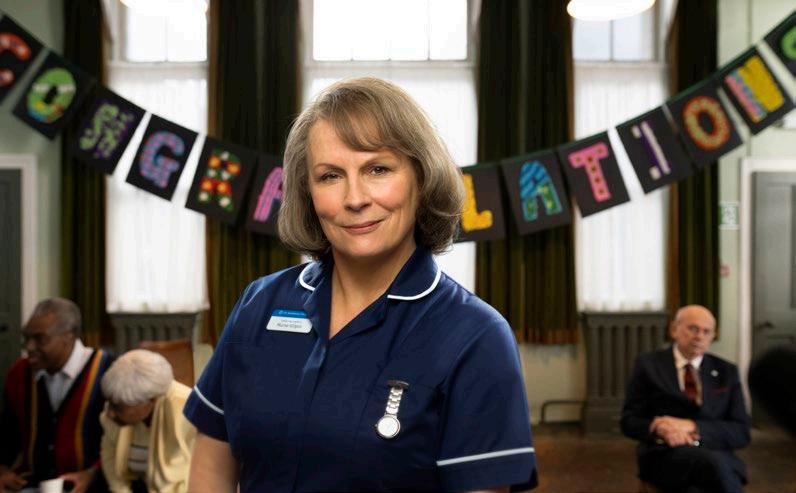
H H H H
ALLELUJAH
Like the NHS, Alan Bennett is a British institution to be treasured, not trampled on, and this adaptation of his 2018 stage play does just that. Set in a fictional geriatric hospital in Yorkshire, called “The Beth”, Allelujah is a film with a pleasing bedside manner, with screenwriter Heidi Thomas keeping Bennett’s waspish humour intact. Adeptly handled by Richard Eyre (Notes On a Scandal), the story weaves together multiple threads around sundry staff, patients and relatives, as this beloved institution comes under threat from government cuts, causing the local community to rally.
A delicious cast is top-lined by Jennifer Saunders as the hospital’s stern sister, who won’t tolerate
incontinence on her ward. Dame Judi Dench and Sir Derek Jacobi are two stalwart patients, who keep smiling even while all around them are losing their heads. Russell Tovey is the Westminster flunky who arrives to assess the hospital’s viability, while visiting his ailing father (David Bradley). In places, it’s hugely entertaining, with Saunders a wonderful embodiment of the resilient characters that populate our hospitals. True, it can be emotionally contrived and as subtle as a bedpan, but the film’s closing battle cry to save the NHS comes straight from the heart.
Allelujah is in cinemas on March 17
By James Mottram
READERSDIGEST.CO.UK/CULTURE 134 • MARCH 2023
FASHION REIMAGINED
Amy Powney has always been a bit of an outcast in the fashion world. As a kid, s he grew up on a farm where water came from a well, and power— from a wind turbine built by her dad. Raised in a minimalist environment, she would get to school by foot, where she was bullied incessantly for the way she dressed. Fast forward some 20 or so years, and this girl from rural England made all the heavyweights of the fashion world listen up.
Eventually becoming the head of the cult label Mother of Pearl, Amy was unsettled by the enormous waste and carbon emissions that go hand in hand with fashion, and embarked on a three-year journey to create a sustainable clothing collection from field-to-finished-garment, called No Frills. What seemed like a simple check list to begin with—natural materials; transparent supply chain; respect to animals—turned out to be an exhausting, often disheartening odyssey, as documented in this film by director Becky Hunter.
Insisting on seeing the cotton fields and sheep farms for herself before buying materials from prospective suppliers, Amy was often met with

a bewildered reaction—no other designer had ever demanded to know where the material comes from originally. That’s just not how things worked. Over the course of this eyeopening documentary, we observe how her personal revolution became the catalyst for huge societal change; a change that made us question that seven-pound T-shirt or the “sustainable” tags suddenly dangling off every garment in every store.
Passionate and unrelenting in its quest for the truth, the film will make you re-think your entire relationship with clothes.
Fashion Reimagined is in cinemas on March 3
By Eva Mackevic
FILM
ALSO
OUT THIS MONTH
MARCH 2023 • 135
H H H
It’s ironic that a show called Search Party (BBC3; iPlayer) went missing from the UK schedules for several years. It debuted on E4 shortly after its 2016 US launch, before a switch of channels stateside made it a) fashionable and b) expensive to import. All five seasons have now been retrieved by the BBC, allowing us to marvel anew at a show that started as an ultra-modern mystery involving New York influencers, headed by Alia Shawkat’s Dory, and wound up foreseeing a zombie apocalypse, enabled by Jeff Goldblum as the Willy Wonka of wellness. It remains one of recent TV’s great narrative achievements— one plotline, taken for an almighty walk round the houses—with a tone at once satiric and unexpectedly yearning, for even its dimmest characters, bless ‘em, are seeking real human connection in an age of virtual likes.

Mom (Prime Video) was never fashionable. It was popular, for one, making US TV’s Top Five from its launch in 2013. Yet it, too, disappeared from UK screens, disowned by ITV2 early in its run. It began as a corrective to co-creator Chuck Lorre’s blokey Two and a Half Men, blending sitcom and soap as three generations of the blue-collar Plunkett clan worked through common addiction issues. Over eight seasons, it developed into a portrait of an allgal support network, allowing leads Allison Janney and Anna Faris to spark off such equally expert performers as Jaime Pressly (My Name is Earl) and Kristen Johnson (Third Rock from the Sun), and each character their moments of poignancy and growth. But it never deviated from a winning formula: folks talking fast and funny for 20 minutes a pop. That’s not fashionable. It’s timeless.
by Mike McCahill
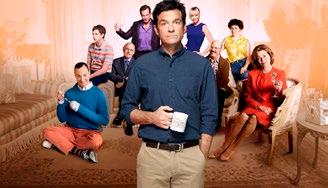
Retro Pick:
ArrestedDevelopment S1-5 (Netflix)
Shawkat apprenticed on this similarly itinerant sitcom: solid gold for three seasons on Fox, before being revived— more erratically— for streaming.
TELEVISION
136 • MARCH 2023
Album Of The Month:
SHOOK by Algiers
This record is more rapturous, more rich, more packed to the brim with influences than ever—Massive Attack, Bloc Party, Quasimoto, Funkadelic, and politically charged 1970s soul each make their mark. Mechanised techno bleeps frame a soaring guitar riff and furious rap bars from Zack de la Rocha on “Irreversible Damage”. A mystic gospel harmony descends into a seething mass of sci-fi synths in “Green Iris”. “Something Wrong” twists classic dub chords into a discordant sludge. Where once Algiers drew comparisons with the southern gothic novel, now they sound positively Afrofuturist, and they draw from the genre’s radical, utopian thinking to compel nothing short of a system change.

We’re also listening to…
Van Morrison
MovingOnSkiffle
Van Morrison used to perform in a skiffle band at school in Belfast, and he returns to the bluegrass and American blues-tinged folk movement once again on this new release
Sleaford Mods
UKGrim
Post-punk duo Sleaford Mods direct their rage at a nation gone mad, with the psychic damage of a costof-living crisis, war and persistent class divides shaping this collection of ferocious punk and hip hop
“Bite back the hand that feeds you if it’s poison,” Franklin James Fisher sings in “Bite Back.” “Cripple the white crow and force it to the ground,” Big Rube intones in a George Clinton-esque monologue on “As It Resounds”. In “Momentary”, revolutionary fervour gives way to gospel hums and the uneasy chorus of cicadas, recalling the quiet determination of community. In one final prophetic line, Lee Bains, III pulls Shook’s elements together like a protest poem: “When we die, our beloved, our kinfolk, fear not. We rise.”
By Becca Inglis
Gorillaz
CrackerIsland
When we last heard from Gorillaz, bassist Murdoc was inviting fans to sign up to “The Last Cult”, a mysterious website (or scheme for world domination). Now, on CrackerIsland, his master plan is unveiled—a shiny digital haven for all to retreat to, though as the album explores, it may turn out to be a fool’s paradise
MUSIC 121 MARCH 2023 • 137
March Fiction
This month, we dive into a grim yet amusing book about ageing from a highly-acclaimed author
OldBabesintheWood:Stories
by Margaret Atwood (Chatto & Windus, £22)
Over her long and miraculously productive career (the “By the Same Author” section here runs for two pages), Margaret Atwood has been celebrated for many things. One of the few authors to win the Booker Prize twice, she’s written acclaimed poetry, essay collections, children’s books and adult fiction ranging from the historical to the futuristic—including most famously The Handmaid’s Tale. Yet, what is sometimes overlooked is how funny she can be.
On the face of it, Old Babes in the Wood should be a distinctly gloomy read. In several stories, Atwood—now 83—ponders the indignities of ageing,

James Walton is a book reviewer and broadcaster, and has written and presented 17 series of the BBC Radio 4 literary quiz
The Write Stuff

with the characters realising their growing frailty, the pointlessness of vanity about how they look and the increasing tendency of their friends to die. Above all, there’s a sense of finding themselves in an unfamiliar and weirdly priggish new world, where almost everything they thought they knew seems to no longer apply.
At the same time, however, Atwood is always aware of the comedy involved in becoming elderly. At times, indeed, the characters appear to relish their transformation into “old biddies”: freed from the whole business of sex (“You don’t have to hold your stomach in anymore”) and allowed to behave as eccentrically as they like. They’re also amused, as well as somewhat dismayed, by the over-earnestness of 21st-century young women, before
BOOKS
138 • MARCH 2023
amusedly remembering their own youthful over-earnestness.
The collection is bookended by seven clearly autobiographical tales written after the death from dementia in 2019 of Atwood’s partner of nearly 50 years, Graeme Gibson. Again, though, these are by no means simply grim. While Atwood spares us none of the pain and bewilderment of widowhood, she writes infectiously of the fun the couple had back when they were oblivious of what lay in store (“Obliviousness had served them well,” she ruefully notes.)
Along the way, we also get a few wild flights of fantasy where realism is left far behind. But something we never get— unusually for a short-story collection— is anything resembling a dud. Instead, there’s just page after page proving that, however much the book might acknowledge physical decline, Atwood’s lavish literary talents remain wholly undiminished. n
Name the character
Can you guess the fictional character from these clues (and, of course, the fewer you need the better)?
1. She’s the heroine of a 1936 novel that sold more than 30 million copies.
2. Her first two husbands are Charles Hamilton and Frank Kennedy.
3. Her third is Rhett Butler.
Answer on p142
Paperbacks
BackintheDay by Melvyn Bragg (Sceptre, £10.99). Bragg’s beautiful, nostalgic but never remotely soppy memoir of his early years in the Cumbrian town of Wigton, where his father ran a pub.
TheRisingTide by Ann Cleeves (Pan, £8.99).
Vera Stanhope—as seen on television—returns to solve another Northumberland-based case, this one particularly clever and twisty, but with a strong undertow of sadness.
WhatAreYouDoingHere?
by Floella Benjamin (Pan, £10.99). The much-loved TV presenter on her life, from arrival in Britain as a Windrush-era immigrant to entering the House of Lords.
FrenchBraid
by Anne Tyler (Vintage, £9.99).
Latest shrewd but sympathetic tale of multi-generational family life from one of the best living novelists.
ExpectedGoals
by Rory Smith (Mudlark, £9.99). How analysing data has become central to modern football, thanks to an academic with no background in the game. It sounds dry, but it proves gripping.
MARCH 2023 • 139
Culture Wars
Our recommended read reveals the harrowing impact of Chairman Mao Zedong’s Cultural Revolution in China

In 1966, Chairman Mao Zedong launched the “Cultural Revolution” to rid China of all lingering “rightist” elements after 17 years of his Communist rule. The shock troops who initially carried it out were mainly teenagers—including girls as young as 13—known as the Red Guards. They burned religious symbols, confiscated “bourgeois” possessions (basically any nice things) and in many cases beat their own supposedly treacherous teachers with clubs, sometimes to death.
People accused of unsound views were forced to make public confessions while painfully tied up, wearing dunces’ caps and with heavy placards around their necks held by wire which slowly cut into the skin. Not that this saved them. By the time the Cultural Revolution ended with
Mao’s death in 1976, two million people had been killed and 36 million hounded out of jobs and homes, often into forced labour in the countryside. In this brilliant, unsettling book, Tania Branigan speaks to many of those involved, perpetrators as well as victims. She also explores the Cultural Revolution’s continuing effects in a country whose economic fortunes have since been transformed but whose people, she argues, have never got over the trauma of seeing neighbours and family members turn on each other so readily: a trauma made worse by the fact that the terror of those years isn’t properly acknowledged (a huge portrait of Mao still dominates Beijing’s Tiananmen Square). The result is a book that compellingly illuminates both China’s past and present,
BOOKS
140 • MARCH 2023
RECOMMENDED READ:
especially now that freedom of expression is under renewed assault.
One of Branigan’s interviewees is Zhang Hongbing, who as a teenager denounced his own mother, Fang, not long after Liu Shaoqi, a former ally of Mao’s, was purged in 1969…
“It was late one evening, and Fang was doing the laundry. She made an acerbic allusion to Chairman Mao; Zhang accused her of viciously attacking and insulting Mao Zedong Thought. As the row ignited, Fang abandoned all caution. She said she wanted Liu Shaoqi’s case to be reopened. She said: ‘The traitor, spy, thief—whatever they say of Liu Shaoqi—is Chairman Mao. The Communist Party has changed its colours. Why has Chairman Mao made a personality cult? His image is everywhere.’
‘I warned her: “If you go against my dear Chairman Mao, I will smash your dog head...” There was a yellow washtub and I meant we would use

that to smash my mother’s head,’ Zhang said.
‘I felt it wasn’t my mother—it wasn’t a person. She suddenly became a monster. She had become a class enemy. My father said: “Fang Zhongmou, I’m telling you—from now on our family separates itself from you, this person who insists on taking a counter-revolutionary position. You are the enemy and we will struggle against you. The poison you just released, you should write it down.” And my mother said: “It’s easy. I can finish it in five minutes. I dare to say, dare to write, dare to do.”’
Zhang and his father left to report her. By the time they returned she had finished her letter—effectively a suicide note. It called for Chairman Mao to be removed from all official positions and for the senior leaders he had purged to be exonerated.
‘My father said, “You will be buried.” Mother replied: “It shows it’s Mao Zedong who should be buried, not me.”’
Zhang remembered his mother trembling, her chattering teeth, her struggle with his father as she ripped down the portrait of Mao which each family kept in their home. She barricaded herself in the bedroom and tried to burn the picture.
‘Beat the counter-revolutionary!’ her husband cried as they forced their way in. ‘I still felt I couldn’t do it. She was my own mother,’ Zhang said. ‘I didn’t smash her head, but I hit her twice on her back.’
READER’S DIGEST
Living,
andForgetting China’sCultural Revolutionby Tania Branigan is published by Faber at £20 MARCH 2023 • 141
RedMemory:
Remembering
He described the officials arriving. How one kicked out his mother’s legs from under her, so that she fell. How they bound her with rope, and how he heard her shoulder crack as they hauled her to her feet. ‘She walked out with her head high as if she didn’t feel any shame.’ His mother was executed less than two months later.
Did he have any doubts about informing on her?
‘I didn’t have any doubts. This was a monster, not my mother.’
Did he know what would happen?
‘I knew. According to the regulations, I understood that it meant death.’
Zhang was lionised for his betrayal. His town held an exhibition in his honour. He showed us the cartoonish illustrations it included: sketches of him denouncing his mother and—in the last frame— the blood spurting from Fang’s mouth as she was shot.
”Answer
to Name the Character:
Scarlett O’Hara from Margaret Mitchell’s Gone with the Wind, the bestselling American novel ever to that point. The 1939 film also became the high-grossing ever—not overtaken until The Sound of Music in 1966.

Tania Branigan Recommends Five Books On China
ToLiveby Yu Hua (1993). China’s tumultuous, traumatic modern history is captured in the life and suffering of one man in this devastating novel.
FactoryGirls:Voicesfromthe HeartofModernChina by Leslie T Chang (2008). An intimate exploration of two migrant workers’ journeys in a fast-changing country where every life is extraordinary.
EattheBuddha:TheStoryof ModernTibetThroughthePeople ofOneTown by Barbara Demick (2020). Extraordinary, nuanced reporting, combining history and modern life.
IndelibleCity:Dispossessionand DefianceinHongKong by Louisa Lim (2022). A passionate account of the city’s struggle to retain its unique identity and autonomy, challenging British perceptions as well as Beijing’s.
TheRealStoryofAh-QandOther TalesofChina:TheComplete FictionofLuXun (Penguin Classics, 2009). Biting observations and use of the modern vernacular made his work the most influential of the last century—and essential reading to this day.
BOOKS
142 • MARCH 2023
Books
THAT CHANGED MY LIFE
British comedian Cariad Lloyd is also the creator and host of the award-winning podcast Griefcast. Her new book on coping with grief, You Are Not Alone, is available now

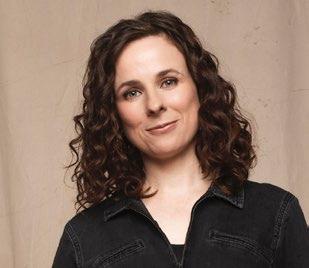
The Artist’s Way by Julia Cameron
This book truly changed the path my life was taking. For much of my twenties I was trying (and not really managing) to be a serious actor—I was mainly temping in offices. After I read The Artist’s Way, I wrote a comedy show and took it to Edinburgh, and everything creative I’ve done has led from the freedom this book gave me. It taught me that creativity is about doing what brings you joy and little to do with what others think you should be doing—I still go back to it when I feel stuck.
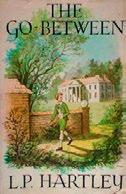
The Go-Between by L P Hartley
A very brilliant teacher, Mr Brown, read this to us in A-Level English. His rendition was so good, pupils not even taking his class used to hang by the door to hear the next instalment. Maybe it was his love and joy for that book, but it was the first novel I read where I understood all the layers you could have in writing. How beautiful and meaningful you could make words, while also telling a story. I lost myself to Leo’s world while we read it as a class. It was transformative to understand how much a book could take you away from where you were.
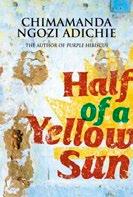
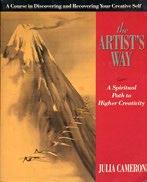
Half of a Yellow Sun by Chimamanda Ngozi Adichie Chimamanda is one of the greatest living writers there are. I love all her books—her writing is just phenomenal from start to finish—but this book stayed with me because of the history I learned reading it. I think it should be required reading for all. It’s a part of our narrative that isn’t always fully discussed, and Adichie tells it with brilliant nuance and skill. It reminded me that writing can tell you a story about this world you didn’t know yet.
FOR MORE, GO TO READERSDIGEST.CO.UK/CULTURE
MARCH 2023 • 143
Tech Talk
James O'Malley on the weirdly human-like technology that is going to change the world
As I write about technology for a living,
I’m used to seeing small leaps in technological progress. This year’s hot new phone has a slightly better camera than last year’s. Or a new computer processor has been invented that can crunch numbers slightly faster than what came before. But occasionally, there are things that will shock me. At the end of last year, a company called OpenAI released a truly jaw-dropping demonstration of a new AI technology that feels almost like the technology has skipped a few generations. It's like going straight from the Wright Brothers to a Boeing 747. And I genuinely think it is going to change the world.
The technology is called ChatGPT—though you'd be forgiven for mistaking it for witchcraft, magic or divine intervention. So what exactly is it?
"ChatGPT is a computer program that can understand and respond to human language. It is trained on a lot of text, so it can understand what people are saying and respond in a way that sounds like a real person. It
can be used for things like having a conversation or finishing a sentence. Even this sentence that you are reading now, was written by ChatGPT."
That’s right—to write the paragraph above, I asked ChatGPT to “write a paragraph containing a basic explanation of ChatGPT in simple terms, that at the end reveals that the paragraph itself was written by ChatGPT,” and it came up with that explanation of itself, all on its own. Because the system was built by basically feeding it what feels like a significant chunk of the internet, it seemingly knows how to talk about everything—from politics and sport to science fiction.
What’s amazing is that it seems so eerily human in its ability to understand questions and answer them competently. “Write a story about Boris Johnson in the style of Roald Dahl,” you can ask it, and it’ll spin up a pretty good children’s story. “Write a list of reasons why London is better than New York,” and it’ll explain how London is more historic and has better public transport. “Write an episode of Star Trek where the Chuckle Brothers join
144 • MARCH 2023
TECHNOLOGY
the Starship Enterprise,” and it’ll write whatever bizarre crossover episodes you can dream up. It can even write songs and limericks too.
One area where I’ve found it enormously useful is that it can write computer code. This particularly amazed me, as when you write code it has to be very precise and structured—but when I asked it to write me a program that would put some data into a database for me, in a particularly complex way, within seconds it generated something that would have taken me hours to do manually. It isn’t, however, completely human-like. For example, it sometimes generates things that sound true, but are just nonsense. And it can’t do maths—I asked it what the square root of 717,409 is, and it told me that the answer is “approximately 838.8” (the answer is 847). In both cases, this is because of the way the AI learns through pattern recognition. There’s no real intelligence there—it is just regurgitating something based on what it has "read" before. So it is better at some tasks than others—it can write a brilliant, sinceresounding condolence message (not

WHAT IS AMAZING IS THAT IT SEEMS SO EERILY HUMAN
that I’ve used it in this way… yet), but its ability to rhyme leaves a lot to be desired.
I think the best way to think of ChatGPT is (ironically) like a calculator. It doesn’t replace the human completely—but it does make doing the sums quicker. In the same way, it’s easy to imagine in the not too distant future every time we write something, having an incredibly smart AI assistant helping us get started by generating a draft, on whatever topic we’re writing about. In fact, Microsoft is reportedly already planning to build the technology into its Office apps.
And this is why I’m pretty convinced that ChatGPT—or something like it—is going to change the world. It’s already hugely impressive, and it's just a demonstration. Once the same AI is built into other apps, and it can connect to the live internet to learn more, it will become even more sophisticated. Our computers will no longer be just our word processors— but our writing partner too.
So now I’m just hoping that my editor doesn’t decide it could write a pretty decent Reader’s Digest technology column without me. n
145
MARCH 2023 •
£50 PRIZE QUESTION
What
Win £30 for your true, funny stories!
Go to readersdigest.co.uk/contact-us or facebook.com/readersdigestuk
My brother-in-law recounted how, several years ago, he would make regular visits to France.
He said he was very impressed that every time he pulled into a petrol station, he would be greeted with a “Well, hello!” by the attendant, and would reply, “Well hello to you!”. He could never understand how they all knew he was British and were all so polite to him.
Then someone pointed out that what they were actually saying was, “Huile ou l’eau?” (Oil or water?).
CLED HERBERT, Northumberland
"Mum, how come your eyes are so blue?"
"They've always been bright and sparkly," I say, smiling, with an extra glint now at the comment from my 13-year-old son.
"Must be the excitement of this short trip away," I add, really taken with this enlivening image of my holiday self.
You Couldn’t
It Up 146 • MARCH 2023
Make
FUN & GAMES AND THE £50 GOES TO… SHANE ELLIS, Wrexham
ANSWER TO FEBRUARY'S PRIZE QUESTION THREE-IN-ONE LYRA ORION URSA MAJOR THE FIRST CORRECT ANSWER WE PICK WINS £50!* Email excerpts@readersdigest.co.uk FRIENDS?
words have in common? LEAF SIGN BREAK SPILL WRECK
do the following
"No, underneath." He pats the skin by his eyes as if rubbing salt into the wound.
NICKY TORODE, Hastings
While staying on a short break in a fairly remote seaside cottage in Wales, my friends and I decided we would like to go to a pub for a few drinks and an evening meal.
None of us wanted to drive, so I called a taxi we had used previously.
The taxi driver had quite a broad Welsh accent, and I had trouble understanding him properly when he answered the phone.
I told him what we wanted and he replied with what sounded like, “I am having a rest” (well, it was a Sunday).
"Oh sorry," I said, “you are having a rest”.
"No no,” came the reply.
Speaking very slowly to me, he said, "I am in Haverford West. I'll be with you in 20 minutes.”
ROB WARDEN, Hampshire
An author friend of mine was helping a grandchild with some homework and dismissed the complaint, "I've got to write a whole paragraph," with the comment, "That's not too bad. I write whole books."
She was floored by the response. "Yes, but mine has to be good." Out of the mouths of babes.
MAGGIE COBBETT, Ripon
cartoon by Michael Parkin

"AND THEN SHE SAID I HAVE NO SENSE OF PERSONAL SPACE…"
I asked my best friend to help me lose weight and keep me away from chocolate, and it was doomed to fail.
I met up with her for coffee recently and her first question was, "So, how's it going without chocolate?"
I assured her that my diet was going very well and that I was proud of myself for abstaining from chocolate without any cheating at all. A total success.
"Really?" she replied, astonished. "Why is there a Reese's Peanut Butter Cup wrapper stuck to the sole of your shoe then?" Guilty as charged.
LEAH ROTTIER, Epenede, France
My four-year-old granddaughter was staying over and asked me for a drink of orange squash.
"What's the magic word?" I asked. She said, "Izzy wizzy, let's get busy.'"
ANDREW BERRY, Lincoln
MARCH 2023 • 147


EXPLORE MORE OF THE WORLD IN 2023 FOR LESS
EXCLUSIVE SUBSCRIBER OFFER
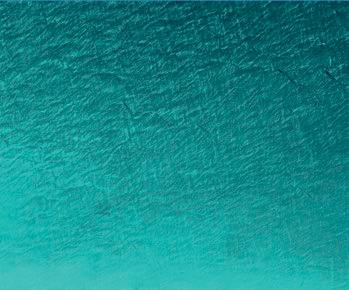

Our travel club partner Tripbeat have some incredible holiday savings, especially for Reader’s Digest subscribers.
From chic city breaks, to relaxing on sandy shores, to hiking hills and dales, there’s an adventure for everyone. And, with Tripbeat you can see more of the world for less, as you’ll enjoy fabulous benefits including:
• HOTELS - Up to 60% off worldwide
• RESORT stays from £299 a week

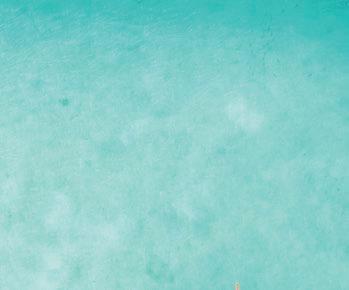
• CRUISE - save up to £500 per couple
• FLIGHTS - discounts on airfares
• TOURS - up to 50% off
• CAR HIRE at member preferred rates
• ACTIVITIES - savings on 345,000+ activities
Booking is so easy and exploring the world is just a few clicks away.

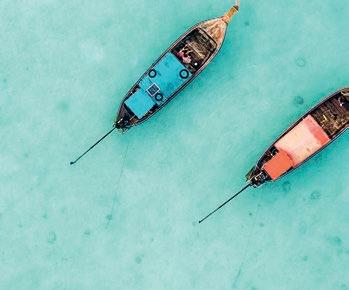


Create your account at www.readersdigest.co.uk/tripbeat and enter our exclusive activation code RDTRAVEL and start saving on your next holiday now!
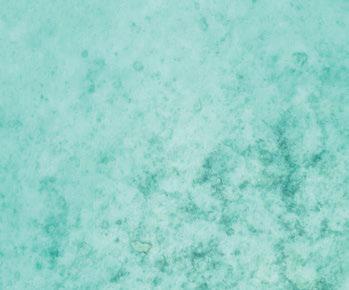

Partner
Word Power
Taste and smell heighten our connections with the world—they delight us, lure us or warn us off. Want a word for what rocks your taste buds or causes your nose to curl? Check out this month’s quiz
BY ANITA LAHEY
1. frowzy
A: musty and ill-smelling.
B: liberally spiced.
C: heady and floralscented.
2. piquant
A: taste of aged cheese.
B: pleasantly sharp.
C: frothy.
3. redolent
A: unsavoury.
B: full of fragrance.
C: mouldy.
4. toothsome
A: appetising.
B: crunchy.
C: perfumed.
5. reasty
A: zesty.
B: bitter.
C: rancid.
6. terpenic
A: reminiscent of toast.
B: pungently piney.
C: smelling of wet paint.
7. loamy
A: yeasty.
B: lip-puckeringly sour.
C: rich, earthy flavour.
8. briny
A: salty.
B: astringent.
C: dulcet.
9. ambrosial
A: nauseating.
B: fruity.
C: pleasing to taste or smell.
10. gamy
A: pungent flavour of wild meat.
B: mouth-watering.
C: rich, fatty taste.
11. camphoric
A: musky.
B: sulphurous.
C: medicinal, mothball scent.
12. saccharine
A: fruity.
B: sugary.
C: tangy.
13. tart
A: flavourful.
B: sharply acidic.
C: foul.
14. nidorous—odour of A: garlic or onions.
B: tobacco.
C: burning animal products.
15. bouquet
A: soothing taste.
B: sickeningly sweet.
C: scent of wine.
MARCH 2023 • 149 FUN AND GAMES
IT PAYS TO INCREASE YOUR
Answers
1. frowzy—[A] musty and illsmelling; The air in the storage room was so frowzy Meg feared her costume would be ruined.
2. piquant—[B] pleasantly sharp; The dal was perfectly piquant and, thankfully, did not set Raoul’s mouth on fire.
3. redolent—[B] full of fragrance; They came out of the wooded trail where the air was redolent of freshly cut hay.
4. toothsome—[A] appetising; Francisco laid out a toothsome home-cooked meal the night his family arrived from Chile.
5. reasty—[C] rancid; Sandy opened a tin of corned beef and almost gagged: the meat was reasty.
6. terpenic—[B] pungently piney; Introducing terpenic notes into perfume can create an interesting interplay of sensations.
7. loamy—[C] rich, earthy flavour; The house red at Una’s Bistro was hailed by regulars for its distinct, loamy undertones.
8. briny—[A] salty; A briny boiled dinner of cod and potatoes was Herman’s antidote for homesickness.
9. ambrosial—[C] pleasing to taste or smell; The morning Xioamin made jam, Vincent hated to leave
the ambrosial atmosphere of stewing berries.
10. gamy—[A] pungent flavour of wild meat; Phyllis complained to Roman that the stew was gamy, but he told her that deer was an acquired taste.
11. camphoric—[C] medicinal, mothball scent; A camphoric odour clung to Aunt Vera’s heirloom quilt long after we brought it down from the attic.
12. saccharine—[B] sugary; Marta’s bread pudding was so saccharine it made Leon’s teeth ache.
13. tart—[B] sharply acidic; Finlay was surprised to see Pippa, his threeyear-old daughter, sucking on a tart lemon wedge.
14. nidorous—[C] odour of burning animal products; The deep fryers in Esme’s chip truck grew nidorous so gradually that she barely noticed the stink.
15. bouquet—[C] scent of wine; Naji’s sommelier course taught her to place her hands over a glass of wine and swirl it to create a more powerful bouquet.
VOCABULARY RATINGS
7–10: fair
11–12: good
13–15: excellent
WORD POWER
150 • MARCH 2023
Reader’s Digest Competitions –
Enter today for your chance to win!

You will find this photograph somewhere inside this issue of the Reader’s Digest magazine, but can you find it? Once you have, simply write the page number on your entry form, or enter online.
Competitions – How to enter
Enter By Post Or Online – March 2023 closing date for entries: 13 March 2023
Online: readersdigest.co.uk/magazine-competitions
By Post:
Complete the entry form and send via post to Reader’s Digest Competitions, Warners Group Publications, West Street, Bourne, PE10 9PH
COMPETITION ENTRY RULES
Competitions are open to residents of the UK, Eire and BFPOs, aged 18 or over, except Reader’s Digest employees and any associated partners or affiliated companies. No purchase necessary. Entries can be made via post or online. There is no cash alternative and prizes are not transferable. Only one entry per person. Winning entries will be chosen at random and winners will be notified by email or post. Winners must agree to publication of their name, age and photo. Your information will only be used in accordance with our privacy policy. Entry implies acceptance of these rules. Full terms can be viewed online at readersdigest.co.uk/ competition-rules.
MARCH 2023
ENTRY FORM
Fill in all your answers below:
(enter as many as you like – one entry per competition per person)
Page 94 Prize Crossword
Page 95 Beach Hut UK Stay
Page 110 Cotswolds Hotel & Spa
Page 131 Prize Wordsearch
Page 151 Photo Finder
Name:
Address:
Postcode:
Telephone:
Email:
n * I opt-in to receive the reader’s digest email newsletter for offers and competitions
n * I opt-in to be contacted by third party competition promoters about future offers and promotions (*please tick)
WIN! 3
£50
X
Photo Finder
COMPETITIONS
BRAINTEASERS
Pic-a-Pix: Tea Time
Easy Shade in groups of cells in the grid to reveal a picture. The numbers to the left of each row and at the top of each column tell you how many cells in that row or column to shade in, and multiple numbers indicate multiple sets (for example, “3” means there will be three adjacent shaded cells, while “4 2” indicates a group of four followed by a group of two). The numbers read in the same horizontal or vertical order as the groups appear, and there must be at least one empty cell between each group. Once you determine a cell isn’t going to be shaded in, draw a slash “/” through it, as this will help to solve the other clues.
2 2 4 3 4
Skyscrapers
Difficult This empty grid is a bird’s-eye view of a city. Place a number from 1 to 5 (representing the height of a skyscraper by its number of floors) in each cell of this grid so that no two buildings in any row or column have the same number of floors. The numbers outside the grid tell you the number of buildings visible from that direction as seen from an observer outside the grid looking in. Higher buildings block the view of lower ones behind them. Can you determine the heights of all 25 skyscrapers?
152 • MARCH 2023 FUN & GAMES
TEA TIME BY DIANE BAHER; SKYSCRAPERS BY FRASER SIMPSON 1 7 7 4 2 1 10 10 1 2 6 1 1 2 4 2 4 1 1 6 1 1 4 1 1 4 1 8 6 2 4
G
F C
A-J Fit-In
Medium Insert the letters A to J, one per square, so that no two consecutive letters in alphabetical order are in squares that touch in any way, even at a corner. Three letters have been placed to get you started. Can you complete the grid?
Shadow Boxes
Medium Shown are three levels of blocks that overlap directly on top of each other to assemble into one big shape. Is it possible to shine a light directly at one of the four sides of the final shape to form each of the three shadows shown? All the blocks are the same height.

Criss-Cross Math
Difficult Place the digits 1 to 9 into the empty cells so that the three rows across and three columns down form correct arithmetic statements. Each number can only be used once. All calculations involve only positive whole numbers and should be performed from left to right and top to bottom, ignoring mathematical order of operations.
For answers, turn to page 155
MARCH 2023 • 153 A-J FIT-IN AND CRISS-CROSS MATH BY FRASER SIMPSON; SHADOW BOXES BY DARREN RIGBY +
=5 ÷ ÷ + + +
÷ + ÷ + ÷
=1 =9
−
=7
=2
=2
ACROSS
1 They get in the way (9)
6 Long-continued practice (5)
10 Macchu Picchu builder (4)
11 Resting, like actors (10)
12 Canes (8)
13 Stretched-out rectangle (6)
14 Embellish (5)
15 Strong dislike (9)
18 Turn on the waterworks (4,5)
21 Fleecer (5)
24 Showy decoration (6)
26 Amount of sugar needed to help with medication (8)
27 Diversion (10)
28 First name in French fashion (4)
29 Worrier’s malady (5)
30 Advocates of land reform (9) DOWN
CROSSWISE
Test your general knowledge. Answers on p158
2 Communication problem for musicians in narrow streets? (9)
3 Rotates around a kind of heater (7)
4 Trapped (6)
5 19th-century American philosopher (7)
7 ---, coulda, woulda (7)
8 Eco-conscious (5)
9 Raring to go (2,3,2)
16 Immensely powerful (9)
17 Suffer remorse (4,3)
19 Merit (7)
20 Hazarding (7)
22 Husband of Eleanor of Aquitaine (5,2)
23 Piano (6)
25 Standard of perfection (5)
BRAINTEASERS ANSWERS
See page 152-153
SUDOKU
Pic-a-Pix: Tea Time
4 6 5 9 7 6 3 8 4 7 3 5
To Solve This Puzzle
Put a number from 1 to 9 in each empty square so that: every horizontal row and vertical column contains all nine numbers (1-9) without repeating any of them; each of the outlined 3 x 3 boxes has all nine numbers, none repeated
MARCH 2023 • 155 READER’S DIGEST
Fit-In Shadow Boxes No, Yes, Yes Criss-Cross Math 5 4 1 3 2 4 2 3 5 1 3 1 2 4 5 1 5 4 2 3 2 3 5 1 4 D B A H J G F C E I 6 + 8 − 9 =5 ÷ ÷ + 2 + 4 + 1 =7 ÷ + ÷ 3 + 7 ÷ 5 =2 =1 =9 =2
9
6
1 2 3 9 8 1 5 5 3 8 6 7 9 2 4 1 4 6 1 8 3 2 5 7 9 9 2 7 4 1 5 8 6 3 1 8 4 7 9 6 3 2 5 3 7 2 5 4 1 9 8 6 6 5 9 3 2 8 7 1 4 8 4 5 9 6 7 1 3 2 7 1 3 2 5 4 6 9 8 2 9 6 1 8 3 4 5 7 SOLUTION
Skyscrapers A-J
3
1
8 7 1 8 4
Laugh!
WIN £30 for every reader’s joke we publish!
Go to readersdigest.co.uk/contact-us or facebook.com/readersdigestuk
My dad’s sister had to come and stay with us when she developed an inner ear problem. Every time she tried to walk in a straight line, she ended up walking in a circle. We call her Auntie Clockwise.
PAUL
MULLAN, County Antrim
My friend is very short-sighted. He wears contact lenses and glasses. His name is Seymour.
RICHARD SIROT, Kent
Did you hear about the painter who fell in love? He was overcome with emulsion.
CHARLOTTE PRIMROSE, Essex
I phoned the local gym and asked if they could teach me how to do the splits. He said, “How flexible are you?” I said, “I can’t make Tuesdays or Wednesdays.”
SION THOMAS, Denbighshire
Don’t use “beef stew” as a computer password. It’s not stroganoff.
LUKE HAMMETT, Cheshire
I told my doctor I was addicted to Twitter. He replied, “Sorry, I don’t follow you.”
GLORIA WILDING, Merseyside
I got a new job as a church bell ringer. It’s only my first day, they’re just showing me the ropes.
STUART
COLLINSON, Edinburgh
FUN & GAMES
156 • MARCH 2023
The Punning Man
Once proclaimed one of the “50 funniest people on Twitter”, Sean Leahy shares some of his favourite puns with us
I found a classical composer crouched down in the corner of our wardrobe. “What are you doing in there?” I said in shock, to which he replied, under his breath, “Shh, I’m Haydn!”

I stole a bulk lot of cloth from a nunnery once, but I didn’t make a habit of it.
With the ongoing strike action, one chap from the council has taken on the roles of collecting the bins and delivering the post. He doesn’t stop at our house because of the sign that says no junk male.
Archaeologists might look happy, but their lives are in ruins.
Celebrity news: for their 15th wedding anniversary, rapper Jay-Z has purchased an enormous, inflatable fort for his wife. It’s a Beyoncé Castle.
We were out for dinner with friends recently. When the food came, one of them started stealing coleslaw and garlic bread from another table. My wife said “Don’t you think that’s terrible?”, but I wasn’t taking sides.
The lock on my front door is at the bottom because I like to make a low key entrance.
I read an article about this woman who has this strange hobby of setting Agatha Christie novels on fire. Seems she’s a Poirot maniac.
Everyone used to really like that band The White Stripes, but I always thought they were middle of the road.
There was a very strange ad in the window of the job centre that wanted people to package baked beans and write testaments. I told the lady at
MARCH 2023 • 157
© MIHÁLY ORODÁN
the desk that there was no way I could do that sort of thing and she said, “You can and you will.”
Nigella Lawsons’s elder sibling can’t even boil an egg, which just shows you can’t judge a cook by its brother.
There’s a thyme and a plaice for recipes with only two ingredients.
For Valentine’s Day I went for cocktails and to the theatre with Sir Lancelot, because my wife said she liked the idea of a romantic knight out with me.
I was listening to Bob Marley on the radio when I got pulled over by the police. They asked for my licence and reggae station.
The other day I went to the most unsuccessful auction ever, hands down.
I had my suspicions that the cat ate my chickens because I felt down in the dumps.
Art galleries are a great place to take the deaf, because all the paintings are signed in the corner.
Follow Sean on Twitter at @thepunningman
That’s My Family

Twitter users share their silly and ridiculous family quirks
@Babewho: … When my son was a toddler, his best friend couldn’t pronounce “You’re welcome.” It came out “You’re rectum.” 40+ years later, our family still responds “You’re rectum” when someone says, “Thank you.”
@clairelinkhart: … My husband’s family had his baby teeth preserved in a handcarved wooden beaver!
@dasnapesofwrath: …. Whenever me or one of my four sisters brings home a boy, we like to turn off the lights, sit in a circle, and chant random things as he walks in the door.
@gorham_betsy: … We often tell people how my brother Phil doesn’t come to family events and how it’s a whole thing. We made up Phil in 1995.
CROSSWORD ANSWERS
Across: 1 Obstacles, 6 Usage, 10 Inca, 11 Unemployed, 12 Switches, 13 Oblong, 14 Adorn, 15 Antipathy, 18 Shed tears, 21 Shark, 24 Tinsel, 26 Spoonful, 27 Recreation, 28 Yves, 29 Ulcer, 30 Agrarians.
Down: 2 Bandwidth, 3 Toaster, 4 Caught, 5 Emerson, 7 Shoulda, 8 Green, 9 Up for it, 16 Herculean, 17 Feel bad, 19 Deserve, 20 Risking, 22 Henry II, 23 Joanna, 25 Ideal.
LAUGH
Beat the Cartoonist!

Think of a witty caption for this cartoon—the three best suggestions, along with the cartoonist’s original, will be posted on our website in mid-MARCH. If your entry gets the most votes, you’ll win £50. Submit to captions@readersdigest.co.uk by MARCH 7. We’ll announce the winner in our April issue.
JANUARY
WINNER

Our cartoonist’s caption, “Is this one of those ‘warm hubs’ I’ve been hearing about?” failed to beat our reader John Lynch, who won the vote with, “I know you are a clever boy, but I am the only one that is allowed to turn the thermostat up.” Bravo, John!
cartoons by Royston Robertson

The Irish music legend looks back on his phenomenal 50year career

A Walk On The Wild Side
Exploring Sicily’s mountains by foot
Discover the fascinating, often subversive evolution of the garden GARDENS THROUGH TIME
READER’S DIGEST MARCH 2023 • 159
IN
THE APRIL ISSUE
Paul Brady I REMEMBER…
Take
GOOD NEWS
from around the World

Journal found in the wreck of HMS Erebus that may hold clues to the ship’s fate
In 1845, two ships left England on a voyage of Arctic exploration: the HMS Erebus and the HMS Terror. Neither ship returned.
For years, the exact fate of the ships’ crews remained a mystery. Now, marine archaeologists have found a trove of fascinating artefacts in the wreckage of the HMS Erebus in Wilmot and Crampton Bay, an Arctic waterway in Nunavut, Canada. Among these treasures is a journal that may offer clues to the crews’ fate.
The wreckage was first discovered in 2014 by Parks Canada in collaboration with Inuit communities.
Two years later, the HMS Terror was discovered in Terror Bay.
The two ships set off on their tragic voyage under Sir John Franklin in May, 1845. They were last seen by Europeans entering Baffin Bay in August of that year.
Search expeditions and testimonies from local Inuit people determined that the ships had become icebound and were abandoned by their crews. In total, there were 129 crew members, alongside John Franklin himself, all of whom ultimately died.
The circumstances of their deaths have been the subject of much speculation, spawning novels, TV series and a whole lot of late-night wondering. A recent discovery by diver Ryan Harris may shed some light on the matter.
Over the course of 11 days in 2022, marine archaeologists carried out 56 dives to explore the HMS Erebus. They recovered 275 artefacts, including a leather journal found in the steward’s pantry. “We’re quite excited at the tantalising possibility that this artefact might have written materials inside,” Harris said.
It will take some years of lab analysis before the contents of the journal can be identified with any certainty, but the team have expressed hope that it may hold clues as to what exactly happened after the ships became icebound back in the 1800s.
by Alice GAwthrop
160 • MARCH 2023
GOOD NEWS
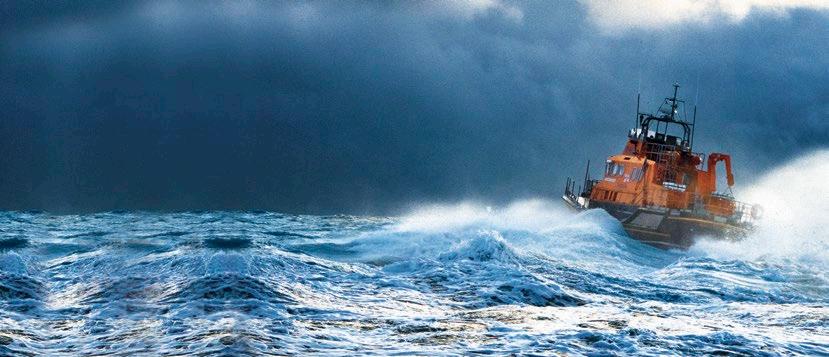
‘I’LL BE THERE TO HELP PROTECT LIFEBOAT VOLUNTEERS AT SEA. WILL YOU?’
‘It was horrendous. For 2 days and 2 nights we were at the mercy of the sea. I was with four friends, sailing from England to France. We were all seasick. Seasick and frightened.
‘We never forgot the relief we felt when the brave Newhaven lifeboat crew came to the rescue. It all happened 50 years ago –and the lifeboat volunteers are still on a mission to save every one today.
By leaving a gift in my Will, I’m helping to ensure they’ll be there tomorrow, with the kit and training they need to save lives and come home safely.
‘I’ll be there, right beside the crew when lives are on the line. And you can be there too.’

6 in 10 lifeboat launches are only possible thanks to gifts in Wills. RNLI volunteers rely on people like you and Chris to keep them safe. When we receive your gift, your name will be added to the side of a lifeboat, so you’ll be by their side on every launch.
Three easy ways to request your free RNLI Gifts in Wills Guide:
To receive a free, no-obligation Gifts in Wills Guide, fill in the form below and send to: ‘Freepost RNLI WILLS’ (no stamp or other address details required)
Title: Full Name:
Address:
Post code:
Email:
Phone:
Privacy Notice: We will always store your personal details securely, and they will only be used by the RNLI, RNLI Shop and RNLI College. Your data may also be used for analysis purposes, to help us provide the best service possible. We will only allow your information to be used by suppliers working on our behalf and we’ll only share it if required to do so by law. For full details see our Privacy Policy at RNLI.org/PrivacyPolicy or contact our Supporter Experience Team on 0300 300 9918.
Keep in touch
Your support saves lives, and we look forward to keeping in touch with you by post and phone, sharing our news, activities and appeals.
Would you like to receive our emails and text messages too?
Yes, I’m happy to hear from you by email
Yes, I’m happy to hear from you by text
Even if you have received our communications in the past, we’ll make sure we honour the preferences you express here. If you would rather not hear from us, or would like to change how we contact you, please get in touch. Just visit RNLI.org/ preferences or call 0300 300 9918
The Royal National Lifeboat Institution (RNLI), a charity registered in England and Wales (209603), Scotland (SC037736), the Republic of Ireland (CHY 2678 and 20003326), the Bailiwick of Jersey (14), the Isle of Man (1308 and 006329F), the Bailiwick of Guernsey and Alderney, of West Quay Road, Poole, Dorset, BH15 1HZ
Registered with the Fundraising Regulator
Photos: RNLI/Nigel Millard, Lynda Huxley
1. Return the attached form below 3. Call 0300 300 0062
LPA/C2/23
2. Visit RNLI.org/Digest ABZLGA037
Chris Huxley – proudly leaving a gift in his Will to the RNLI















or visit www.easy2bathe.co.uk *Applies to products with a 3 year warranty. Offer ends 31/03/23. RD14/02/23q Safely lowers & lifts Easy to transfer to your bath For your FREE brochure or home demonstration call 0800 083 0036 Enjoy full depth bathing Get in and out of your bath safely with an Easy2Bathe bath lift SPECIAL OFFER FREE FITTING * We’re Rated Excellent Trusted trader Approved Installation Service ✓ Safe, comfortable and reliable ✓ Lowers & raises you comfortably ✓ Installs in just 1 hour ✓ Retractable for conventional use ✓ Fits into your existing bath ✓ Simple to use ✓ Battery operated for your safety ✓ Fully guaranteed for peace of mind





















































































 By Jen Babakhan, Lisa Marie Conklin, and Jessica Migala
illustrations by James Steinberg
By Jen Babakhan, Lisa Marie Conklin, and Jessica Migala
illustrations by James Steinberg















































 John Ledwidge
John Ledwidge


















 Lulu Waks leads the all-woman riding group
Lulu Waks leads the all-woman riding group













































































